
























The beauty of our community is seen when you walk down the street on a sunny day. You see people from all walks of life, from all stripes of Judaism, young, old, men, women.… We may look different and we may have different outlooks and insights into how we live our lives, but we are all part of one frum, caring community. You don’t see that in many “in-town” communities.
Last week, more than 700 girls joined together to highlight the beauty found in our community. They were taking part in a performance aptly called Harmony in which girls – grades 5 through 8 – from all schools in the community join together to perform a fabulous show of unity.
Hundreds of girls on stage, and yet each one felt like a star. I think that is what sets this performance apart from other performances one can enjoy. There is no one turned away from performing in Harmony. Every girl who tries out is placed in a choir or dance. There is no pressure or apprehension about getting a part. You tried out? You’re in. And once you’re in, you’re an essential part of this marvelous show. From the fabulous costumes to the unbelievable choreography, it’s a dazzling sight.
It was a delight to see each girl on that stage. When I approached girls after the performance to tell them how wonderful they were in the show, they each lit up with excitement. Some of them I didn’t know personal-
ly, but I knew – I just knew – that they did a great job. In their hearts, they were the stars on stage, singing and dancing enthusiastically for an appreciative audience of family and friends.
The word “harmony” connotes distinctive, different pieces working together as one. Isn’t that what our nation – and our community –is about? We don’t need to be the same. We don’t need to have the same dreams or tastes or mannerisms. In fact, it’s better if we’re different. Because then, when we join together, we can create a melody of varied pitches and sounds, a rhythmic mosaic that is enriched by the differences we comprise.
When speaking about Harmony, it’s important to mention JEP, the worthy organization that connects Jewish souls to the beauty of Yiddishkeit and the beneficiary of the production. I would also be remiss not to speak about all the work – so much work! – that goes on behind the scenes of such a colossal undertaking, headed by Evy Guttman, Shira Frechter, Ricki Molinsky and all the others who gave up months of their “regular” lives to commit themselves to uplifting the girls of the community. And of course, to Mrs. Batya Travis, who has seen how her vision of creating a production for the women and girls of the community has expanded and grown.
Wishing you a wonderful week, Shoshana

Yitzy Halpern, PUBLISHER publisher@fivetownsjewishhome.com
Yosef Feinerman, MANAGING EDITOR ads@fivetownsjewishhome.com
Shoshana Soroka, EDITOR editor@fivetownsjewishhome.com
Nate Davis
Editorial Assistant
Nechama Wein
Copy Editor
Rachel Bergida
Shana Brecher
Lani White
Design & Production
Gabe Solomon
Distribution & Logistics
P.O. BOX 266
Lawrence, NY 11559
Phone | 516-734-0858
Fax | 516-734-0857
Classified Deadline: Monday 5:00PM classifieds@fivetownsjewishhome.com
text 443-929-4003
PAYMENT VIA CREDIT CARD MUST BE SUBMITTED ALONG WITH CLASSIFIED ADS
The Jewish Home is an independent weekly magazine. Opinions expressed by writers are not necessarily the opinions of the publisher or editor. The Jewish Home is not responsible for typographical errors, or for the kashrus of any product or business advertised within. The Jewish Home contains words of Torah. Please treat accordingly.


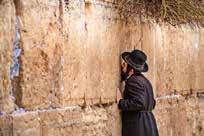

Dear Editor,
The immense push by the U. S. to rush Israel to agree to a ceasefire specifically before Ramadan begs some questions and counterclaims that, surprisingly, the Israeli government has not mentioned.
First, historically, violence and terrorism has increased during Ramadan. The month-long Muslim holiday reminds them of the “Nakba” of the “Zionist State” and how Jews in Israel and throughout the world should be eliminated. Why, should Israel cease their mission of eliminating this evil specifically during Ramadan?
The second unasked question is to note that the Hamas massacre began specifically on a Jewish holiday, Simchat Torah. Hamas had no problem attacking Israel on a Jewish holiday. Why should Israel be concerned about attacking Hamas during a Muslim holiday?
Daniel FeldmanDear Editor,
Ben Shapiro was asked how he reached such great heights. He responded that from childhood he davened to G-d that he should reach his potential.
I recently heard an interesting idea on potential. In Avot (5:23), it says that one should be as “light as an eagle.” This statement is quite perplexing. By no stretch of the imagination is the eagle a light bird. It was suggested that it’s true that the eagle is weighty, but if it holds its weight properly, then it is maximizing its potential, and reaching one’s potential is the only thing one must do.
Someone noted another interesting idea: that as weighty as something might be, after worked on and presented, it
should be easy to understand. The current parshiot are all about potential. The leaders, Moshe and Aharon, met their potentials, which were different but still equal in import.
The Mishkan was about putting a step forward and reaching one’s potential. But, potential comes with one caveat which Ben Shapiro said so well: you must daven for it. Man can reach just so far but he needs G-d’s help to finish the job, perhaps a reason why the parshiot of the Mishkan are expressed two times.
Steven GenackDear Editor,
Under President Joe Biden, Vice President Border Czar Kamala Harris, Senate Majority Leader Charles Schumer and Department of Homeland Security Chief Alejandro Mayorkas almost 7 million people illegally crossed into our nation at the southern border. Now, more are attempting the same at our Canadian border.
On March 8, 1911, President William Taft sent 20,000 U.S. Marines to the border in response to the Mexican Revolution. Why doesn’t President Biden send some of our 160,000 military stationed abroad, 482,000 Army Activity duty stationed in the USA or 337,000 National Guard to both our Mexican and Canadian borders? They can assist our overwhelmed U.S. Customs and Boarder Patrol and local law enforcement to regain control of our border.
Sincerely,
Larry PennerDear Editor,
In the 1920s, a group of paleoanthropologists toured the world looking
Continued on page 10

Continued from page 8
for the origin of the human race. They couldn’t find this group, so they came to the conclusion that the German people were this original “Aryan” master race. Ironically, this word came from the Hebrew word “ohr” meaning light. The theory said, “We are an Aryan people. All the problems in the world are caused by those who are not Aryan. We therefore have to control the world. Non-Aryans must serve us, but the Jews must be exterminated.”
The question can be, how do you impose this idea on a population, when the top three leaders, Hitler, Goebbels and Goering, do not qualify as Aryans? You start by creating laws defining race, the Nuremberg Laws. Legalized persecution escalated into Kristallnacht in 1938. This was all done legally, under German law. Then you form a terrorist organization, the Gestapo. No one is really safe in this sort of a system. Even General Rommel was suspected of knowing about the plot to kill Hitler. He was the general who almost reached the Suez Canal in 1942. Yet he lived the last three months of his life, knowing that the government was going to kill him. He could do nothing to save his own life.
Even Himmler, the master of the Gestapo, spent the last few days of his life running from his own Gestapo.
Today’s Critical Race Theory is a reversal of the Master Race Theory. The message is: All the problems in the world are caused by white people, the oppressors, who oppressed and exploited people of color, the oppressed people. We need justice and equity to correct this situation. Therefore, we will create our own justice system to achieve equity. We will decide who is a racist. Biracial Obama is an African American. Kamala Harris is a Black woman. Clarence Thomas and Larry Elder are the black face of white supremacy. Elizabeth Warren is a true Native American. In general, any black who does not vote Democratic is not black. This is the new justice system. Anyone who disagrees with us is automatically guilty of a crime. All reasoning, logic, evidence, or proof of innocence will be ignored or denied.
I saw the newsreel of the raid on Trump’s home in Florida. My reaction was that you can take this newsreel and place it in a documentary of the Nazi Germany; it will not be out of place.
These are tough times in the U.S. We
can only pray to G-d, the ultimate Master over Global Powers.
Elli Epstein
Ocean, New Jersey
Dear Editor, I want to reply to “A proud Jewish American Citizen.”
I am overjoyed that when the “Star Spangled Banner” played, a lot of people were on their cell phones or talking to other people. A lot of times when I am davening, I see a lot of mispallelim on
their phones or talking to other people in shul.
This even happens during the “5 Minutes of Chazaras Hashatz.”
Now that I see that people are also doing it during the “Star Spangled Banner,” I can be dan l’chaf zechus them that they aren’t doing it out of disrespect; they would do the same thing for a “nation that grants us religious liberties.”
Sincerely,
An Overjoyed Jewish American Citizen





On Sunday, thousands of South Korean doctors gathered in Seoul, demonstrating against new medical school policies proposed by the government. In an effort to hire more doctors, the South Korean government said last month that 2,000 more applicants would be accepted into medical schools beginning in 2025, resulting in around 5,000 students receiving admission into South Korean medical schools each year.
Medical professionals assert that hiring more doctors will not resolve the country’s healthcare issues and insist that the government must first build facilities adequate enough to accommodate the proposed influx of medical students. Other concerns pertain to the amount of money the government spends on crucial medical treatments and insufficient staffing in certain fields.
Many trainee doctors in South Korea are dissatisfied with the long hours they have to work and the negligible salary they’re paid. On February 21, 8,000 or so trainee doctors resigned in protest, while another 1,000 have joined them since.
South Korea, with the lowest birth rate in the world, has seen fewer and fewer births each year since 2015. The government has tried and failed to increase the birth rate, and as a result, many childcare centers have been shut down in the past few years. At the same time, the country is seeing more elderly people with each passing year, with the number of senior care facilities increasing significantly. According to the East Asian country’s health and welfare ministry, in 2017, there were 76,000 senior care centers, and in 2022, there were 89,643.
“Protecting people such as children, the elderly, and people with disabilities
is directly linked to the government’s core policy on welfare for the vulnerable populations in healthcare. Therefore, this [medical reform] is not a matter for negotiations or compromise,” said South Korean President Yoon Suk Yeol.
A recent poll conducted by Gallup showed that 76% of participants agreed with the government’s plans to admit more students into medical school.
The government ordered strikers to go back to work on Thursday, threatening to revoke protestors’ medical licenses if they do not return. However, a spokesperson for the group of doctors said the group is in favor of the strike and wouldn’t relent until the government addresses the issues.
In the meantime, the government has been sending military medical personnel to hospitals to treat patients while regular doctors are out on strike.

Last Thursday, a blaze consumed a six-story building in Bangladesh’s capital, Dhaka. At least 43 people lost their lives in the fire. Dozens of others were admitted to the hospital with severe burns.
The fire originated in a restaurant and quickly spread to other floors, fire service officials said.
It was not immediately clear what caused the blaze, which was under control after two hours of frantic efforts by 13 firefighting units.
Survivor Mohammad Altaf, speaking to reporters, recounted narrowly escaping the blaze through a broken window. Two of his coworkers perished, he said.
“When the fire started in the front and broke the glass, our cashier and servicemen made got everyone out. But both of them died later. I went to the kitchen, broke a window and jumped to save myself,” Altaf said.
Firefighters used a crane to rescue people from the charred building.
It’s possible the fire was caused by a gas leak or by a stove.

Fires are common in densely populated Dhaka, which has experienced a boom in new buildings, often constructed without proper safety measures. Fires and explosions have occurred due to faulty gas cylinders, air conditioners and bad electrical wiring.

A world analysis carried out by researchers from the World Health Organization and Non-Communicable Diseases Risk Factor Collaboration and released in The Lancet medical journal has shone a light on the global prevalence of obesity.
According to the analysis, which was conducted by over 1,500 researchers and published on Thursday, February 29, over one billion people in the world – including adults, teenagers, and chil-
dren – are obese. Researchers, as part of the analysis, examined height and weight data from over 220 million people across more than 190 countries.
Senior analysis author Dr. Majid Ezzati, who teaches at Imperial College London, said that the issue is especially prevalent in developing and emerging countries, such as those in the Middle East, the Caribbean, North Africa, Polynesia, and Micronesia, where the problem of malnutrition quickly transformed from underweight to overweight.
Although the World Obesity Federation predicted that there would be 1 billion obese people by 2030, in 2022, that number was exceeded, Ezzati noted. According to the study, around 880 million adults and 159 million children were obese in 2022. The number of obese children and teenagers in 2022 was four times as many as in 1990.
“It is very concerning that the epidemic of obesity that was evident among adults in much of the world in 1990 is now mirrored in school-aged children and adolescents,” said Ezzati.
The analysis defined obesity in adults as the presence of a body mass index (BMI) equal to or greater than 30; an adult whose BMI is under 18.5 was classified as underweight by the researchers.
In two-thirds of all countries, obesity was found to be more prevalent than underweight, the analysis revealed. In 2022, Tonga, American Samoa, and Nauru had the most obese people, with over 60% of adults in those areas being classified as obese.
Apart from the United States, few affluent nations ranked high on the list of countries with the highest obesity rates, according to Ezzati, while in 2017, Canada, Australia, New Zealand, and the United States were on the top of the list.
According to Dr. Francesco Branca, the WHO Department of Nutrition and Food Safety director, quick food system changes globally have contributed heavily to the issue, adding that more than 3 billion people do not have the financial resources to eat healthily.
“The reason why the epidemic has progressed so quickly is because policy action has not been incisive enough,” Branca said. “There has been a reliance on behavior change, but [solutions] have not touched the structural element, which is the policies around food and environment.”

down the line at 53 miles per hour, racing through several stations and covering 43 miles in total before it was brought to a halt.
Officials had closed off railway crossings on the train’s path to avoid accidents.
Wooden blocks were then placed on the tracks to reduce the speed of the train and, eventually, they brought it to a stop.
This is not the first time a runaway train barreled across India. In 2018, about 1,000 passengers had a narrow escape when their train, running from the western state of Gujarat to Odisha in the east, rolled about 7 miles without a driver. The cause of that incident was the same: The driver had forgotten to apply skid brakes at a station when the engine was being changed.
In June 2023, nearly 300 people were killed in a train collision in eastern India caused by a signal system error. In 2016, 152 people were killed when a passenger train derailed in the central state of Uttar Pradesh.
The country’s worst train disaster, which killed more than 800 people in 1981, was when a passenger train derailed and tumbled into a river in the eastern state of Bihar during a cyclone.

Last week, videos of a train racing down the tracks – without a driver – lit up social media across India. The fully loaded freight train was apparently left unattended, on a slope, by an engineer who forgot to pull the emergency brake. It traveled 43 miles before being stopped by officials.
Indian Railways, the national rail operator, ordered an investigation into what could have been a major disaster in a country where train tracks often bisect busy neighborhoods and collisions are common.
The 53-carriage freight train loaded with gravel was on its way from Jammu in northern India to Punjab on Sunday morning when it stopped in Kathua for a crew change. Indian media reports say the driver and his assistant got off without applying the skid brakes. The train then started rolling down the tracks, which are on a gradient, before eventually barreling
India has one of the largest railway networks in the world. An estimated 13 million people travel there on trains every day.

After each party failed to win the number of parliamentary seats required to form a government in Pakistan on election day, the Pakistan Muslim League Nawaz Party (PMLN) and Pakistan People’s Party (PPP) formed a coalition with their respective 73 and 54 seats, thus defeating independents connected to ousted former Prime Minister Imran Khan, whose candidates won 102 seats.
Shehbaz Sharif, the brother of former prime minister and PMLN leader Nawaz Sharif, was elected as prime minister of Pakistan for the second time. PPP’s Asif Ali Zardari, the husband of former Prime Minister Benazir Bhutto, who was assassinated in 2007, became Pakistan’s president.



Shehbaz Sharif’s first term began after Khan was suddenly forced out of power in April 2022. Following his ousting, Khan was imprisoned and sentenced to fourteen years in jail on several convictions, including corruption and leaking classified information. Last month, on charges of being illegally married, Khan and his wife were sentenced to another seven years in jail.
Khan, who was barred from running in this past election, has claimed that there was significant election interference.
After Sharif was elected, members of opposition parties taunted the new prime minister, accusing him of stealing votes.
The new Pakistani government must now deal with the country’s mounting economic issues, and Sharif will have to negotiate a deal with the International Monetary Fund to assist in saving the South Asian country’s economy.
When Alexei Navalny was alive, the Kremlin sought to portray him as an inconsequential figure unworthy of atten-
tion, even as Russian authorities vilified and attacked him with a viciousness that suggested the opposite.
In death, little appears to have changed.

Russian President Vladimir Putin has not said a word in public about Navalny in the two weeks since the opposition campaigner’s death at age 47 in prison.
Russian state television has been almost equally silent. Coverage has been limited to a short statement by prison authorities the day of Navalny’s death, plus a few fleeting television commentaries by state propagandists to deflect blame and tarnish his wife, Yulia Navalnaya, who has announced that she will carry on her husband’s work.
And on Friday, as thousands gathered in the Russian capital for Navalny’s funeral, cheering his name, official Moscow acted as if the remembrance was a non-
event. State news ignored it altogether. When asked that morning if the Kremlin could comment on Navalny as a political figure, Putin’s spokesperson responded, “It cannot.”
Putin for years refused to say Navalny’s name. State television almost never mentioned him. Authorities banned him from running for president in the 2018 election and largely thwarted him from engaging in the Western-style democratic retail politics he wanted to see in Russia.
Greg Yudin, a Russian sociologist who is now a research fellow at Princeton University, called the Kremlin’s strategy one of “strategic omission.”
By removing Navalny from official public life, the Kremlin signaled that he was not a legitimate alternative politician, but rather an extremist, a terrorist or an enemy of the state, Yudin said.
“The way they create a perception of politics in Russia is that whatever is absent from official discourse is irrelevant, because it has no chance to materialize anyway,” Yudin said. “If you aren’t talked about on TV, you don’t exist.”
At the same time, Russia’s coercive apparatus went after Navalny with an increasing ferocity, poisoning him with a nerve agent in 2020, imprisoning him in inhumane conditions and ultimately
sending him to a remote former gulag facility above the Arctic Circle. Along the way, he was subjected to a multitude of criminal cases.
Even without the power of television, Navalny managed to make a name for himself in Russia using the internet — and that continued to be the way millions of Russians followed news of his death and funeral. (© The New York Times)

Hundreds of convicts broke out of Haiti’s National Penitentiary in Port-auPrince last week, adding to the intense chaos in Haiti’s gang-controlled capital.
A Haitian police union requested that all capable officers in the area help take control of the prison.
“[If we fail,] we are done. No one will


22
be spared in the capital because there will be 3,000 extra bandits now effective,” the union warned on X.
Jimmy Cherizier, a Haitian gang leader, said on Friday that he is committed to forcing Prime Minister Ariel Henry out of office.
“We ask the Haitian National Police and the military to take responsibility and arrest Ariel Henry. Once again, the population is not our enemy; the armed groups are not your enemy. You arrest Ariel Henry for the country’s liberation,” said Cherizier. “With these weapons, we will liberate the country, and these weapons will change the country.”
The United Nations and the United States Department of Treasury have placed sanctions on Cherizier, who was a police officer before he became a prominent gang member.
Due to the ongoing chaos, Henry pushed off elections last month despite his promise to transfer power by February 7, thus sparking anger from the public. On Wednesday, Caribbean officials said that Henry has resolved to hold elections by August 31, 2025.
The recent series of clashes erupted on Thursday during Henry’s trip to Kenya, where he had been finalizing arrangements with Kenyan President William
Ruto for the anticipated deployment of a multinational security mission to assist Haiti in battling the gangs.
Since Thursday, gangs have burned down and attacked several police stations, killing at least four people, and on the same day, airlines suspended flights in response to nearby gunfire.
Since gangs took control of most of Port-au-Prince, more than 300,000 civilians have had to evacuate the city to avoid being killed, kidnapped, or assaulted. In January, about 1,100 Haitians were murdered, wounded, or abducted as a result of the gang violence.
On Friday, Kenya and Haiti signed the security deal intended to remove the last obstacle to the deployment of 1,000 Kenyan police officers to Haiti.
President William Ruto of Kenya said on Friday that his country had a “historic duty” to press ahead because “peace in Haiti is good for the world as a whole.”
According to Hong Kong telecoms company HGC Global Communications, cables belonging to four major tele -
coms networks in the Red Sea have been “cut.” The damage is causing significant disruption to communications networks in the Middle East.
HGC estimates that 25% of traffic between Asia and Europe as well the Middle East has been impacted, it said on Monday.

The company said it is rerouting traffic – including internet traffic – to minimize disruption for customers and also “extending assistance to affected businesses.”
For now, it is not known how the damage to the cables occurred.
South Africa-based Seacom, which owns one of the cable systems affected, said that repairs wouldn’t begin for at least another month, partly because of the length of time it takes to secure permits to operate in the area.
Underwater cables are the invisible force driving the internet, with
many funded in recent years by internet giants such as Google, Microsoft, Amazon and Facebook parent Meta. Damage to these subsea networks can cause widespread internet outages, as happened following the Taiwan earthquake in 2006.
Although no one has fingered a party responsible for the damage, the news comes just weeks after the official Yemeni government warned of the possibility that Houthi rebels would target the cables. The Iranian-backed militants have already disrupted global supply chains by attacking commercial vessels in the crucial waterway.
Last week, Israeli news outlet Globes suggested that Houthis have been behind the broken cables. But Yemeni rebel leader Abdel Malek al-Houthi denied the allegations. “We have no intention of targeting sea cables providing internet to countries in the region,” he said.
The Houthis have since blamed British and U.S. military units operating in the area for the damage, according to a report on Saturday by the rebels’ official news agency.
Among the other networks affected is Asia-Africa-Europe 1, a 25,000-kilometer cable system connecting Southeast Asia to Europe via Egypt. The


Europe India Gateway (EIG) connects Europe, the Middle East and India and has also been damaged.
Most large telecoms companies rely on multiple undersea cable systems, allowing them to reroute traffic in the event of an outage to ensure uninterrupted service.

On Friday, a New Zealand court ordered tour booking agents and managers of a New Zealand island where a volcanic eruption killed 22 people in 2019 to pay nearly $13 million (U.S. $7.8 million) in fines and reparations.
The holding company of the island’s owners, a boat tour operator, and three companies that operated helicopter tours
had been found guilty of safety breaches at a three-month trial last year.
White Island, the tip of an undersea volcano also known by its Indigenous Māori name Whakaari, was a popular tourist destination before the eruption. There were 47 tourists and tour guides on the island when superheated steam erupted on December 9, 2019, killing some people instantly and leaving survivors with agonizing burns.
“There is no way to measure the emotional harm survivors and affected families have endured and will continue to endure,” Judge Evangelos Thomas said during the sentencing in an Auckland court. “Reparation in a case like this can be no more than token recognition of that harm.”
He added, “No review of prevailing reparation levels conducted by any other court contemplates emotional harm of the scale and nature that is present in this case. Greater awards are appropriate.”
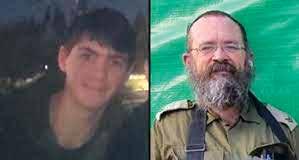
Last Thursday, a West Bank terrorist murdered an Israeli rabbi and teenager at a gas station near Eli, a large Israeli settlement.
According to Magen David Adom, the two men were killed at about 5 pm. Yitzchak Zeiger, a fifty-seven-year-old rabbi who resided in Shavei Shomron, was pumping gas into his car when a Palestinian gunman approached with an assault rifle and fatally shot him. The terrorist went on to kill sixteen-year-old high school student Uria Hartum, who was getting a ride in Zeiger’s car.

cy. Many Israeli officials are concerned about the possibility of more violence in the area as Ramadan, the holiest month in the Islamic calendar, draws near.

Of the thirty-one seats on the Jerusalem city council, the charedi parties won sixteen in the election on Tuesday, February 27. Six seats were won by the Shas party; three by the Agudat Yisrael party; six by the Degel Hatorah party; and one by the Bnei Torah party.
Additionally, the United party and the Mafdal-Religious Zionism party each won two seats, while Likud and Noam both won one seat each.
The murderer, a Palestinian Authority police officer named Muhammad Manasra, was then killed by Aviad Gazbar, a nearby restaurant owner who recently came back from active reserve duty in Gaza.
“I fired a bullet so that the terrorist would know I was here. I saw that he saw me, and he started charging towards me. I took him down and continued scanning,” Gazbar recounted.
Manasra had been previously incarcerated from 2018 to 2019 on weapons offenses. He resided in the Qalandiya refugee camp.
In the wake of the attack, residents of the area were told to stay indoors for approximately half an hour until authorities were able to ascertain that there were no additional assailants.
Rabbi Zeiger was an active member of the IDF reserves who had volunteered for reserve duty and returned from Gaza two weeks ago. He had also been a volunteer for Magen David Adom and ZAKA.
In June, another terrorist attack, in which four people were murdered, took place in the same area.
Ever since the tragic day of October 7, when Hamas terrorists invaded southern Israel, murdering 1,200 Israelis and kidnapping 253 people, violence in the West Bank has been increasing in frequen-
Having received 81.5% of the vote, Mayor Moshe Lion handily won reelection. His rival Yossi Havilio, a secular politician, received 18.5% of the votes, and his Jerusalem Union list, which is composed of left-wing parties Meretz, Yesh Atid, Labor, and New Contract, won four seats on the city council. Lion’s One Jerusalem party won two seats, while the liberal Hitorerut (Awakening) party won three.
According to Laura Wharton, the Jerusalem city councilor, the charedi victory was likely due to low voter turnout, as only 31.5% of voters took part in the election.
“The major issue here was and is voting patterns, and it’s always been known that the charedim vote en masse and other groups do not,” she asserted.
With a majority of seats on the city council, charedi parties will have authority over matters related to finance, planning, construction, education committees, and other things as well. However, Deputy Mayor Eliezer Rauchberger, a leader of Degel Hatorah’s Jerusalem branch, has insisted that “we don’t want to turn Jerusalem into Bnei Brak,” a prominent charedi city.
“We are in favor of every community having a place, obviously the charedi and religious but also the secular,” Rauchberger said, sharing his vision of Jerusalem being “a city for everybody” while preserving “Jerusalem’s traditional, reli-


gious character regarding everything in the public domain.”
Wharton disagrees. “Policy in Jerusalem for decades was to live and let live: charedi in their neighborhoods, secular and religious in theirs, Palestinians in theirs. Sadly, in recent years, there has been a shift to a rather aggressive policy by which the ultra-Orthodox and the ultra-right have been building and overtaking free spaces indiscriminately to build, often exclusively, for their own
populations,” Wharton alleged, adding that “in Kiryat Yovel, a secular and liberal religious neighborhood, an outstanding school that served the local population was evicted by the municipality and given to a strict ultra-Orthodox school for girls” – an action that she says is an example of how “the local building committee uses its power in a way that often results in the displacement and disruption of communities in favor of services and buildings for the representatives in power.”
Last week, the Shin Bet and the Central Unit of the Jerusalem District Police revealed that the agencies had thwarted a terrorist plot planned by two terrorists who coordinated with a Hamas terrorist in Gaza.
An investigation into the two was
opened in early February after suspicion was raised about the two individuals who contacted a foreign agent and of conspiracy to commit terrorism. The agencies used undercover agents to arrest the two suspects.

One terrorist is a 17-year-old resident of Israel living in Shuafat, in East Jerusalem, who worked alongside his cousin, the second terrorist, who is a 29-year-old Palestinian resident of Nablus.
The terrorists had contacted, on their own initiative, a Hamas operative in the Gaza Strip prior to the outbreak of the Israel-Hamas war. The 17-year-old contacted the Hamas terrorists to learn how to produce explosives. He also searched the internet for help on how to construct a bomb. They also tried to obtain weapons and financing to carry out the attack against Israelis.
An indictment is going to be filed against the two terrorists.
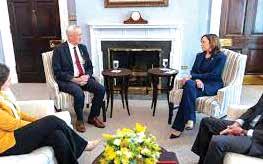
On Monday, Benny Gantz visited D.C., meeting with Vice President Kamala Harris and other top U.S. officials in an attempt to smooth over tensions between the two countries.
The visit was not sanctioned by Prime Minister Benjamin Netanyahu, who ordered the Israeli embassy in Washington not to provide the war cabinet minister with any assistance while he is in town.
The readout of Harris’ meeting with Gantz didn’t stray far from U.S. talking points – condemning the Hamas October 7 attacks; supporting Israel’s right to defend itself; urging Israel to protect civilians in Rafah; asking for Israel to guarantee more aid to Gaza; and encouraging a six-week ceasefire with the terrorist organization.

Harris “expressed her deep concern about the humanitarian conditions in Gaza and the recent horrific tragedy around an aid convoy in northern Gaza,” the U.S. readout said.
The vice president also “discussed the urgency of achieving a hostage deal and welcomed Israel’s constructive approach to the hostage talks,” it added.
After the meeting, Gantz’s office said he had conveyed to Harris his appreciation for the administration’s support for Israel and stressed “the imperative of completing the mission of removing the threat Hamas poses to Israel, finding a sustainable solution to ensuring humanitarian aid reaches civilians and not terrorist Hamas, and the importance of completing all of the operation’s military objectives in Gaza in a manner that enables stability and prosperity for the region entirely.”
He also called for the urgent establishment of “an international mechanism to oversee the humanitarian effort [in Gaza] in coordination with countries of the region and as part of the wider normalization efforts,” the statement said.
Finally, he highlighted Israel’s “supreme commitment to secure the return of the hostages” and thanked the U.S. for applying “significant pressure” to ad-
vance this goal, especially in the last few days.
Before meeting with Harris, Gantz met with U.S. National Security Adviser Jake Sullivan and White House Mideast czar Brett McGurk. He was seen entering Senate Majority Mitch McConnell’s office later in the day and was set to meet with U.S. Secretary of State Antony Blinken on Tuesday.

According to Hamas official Basem Naim, the terror group does not know which of the hostages being held by them are dead or alive – or even where they are.
Naim claimed that many hostages were held by different terror groups in

different locations in Gaza. During the ceasefire, Hamas will be able to ascertain where these hostages are, he maintains.
Speaking to the BBC, Naim added that information relating to the hostages was “valuable” and could not be given “for free.”
On Friday, Hamas announced that seven hostages had been killed but only shared the names of three hostages it said were deceased: Gershon Peri, 79, Yoram Itak Metzger, 80, and Amiram Israel Cooper, 85. All three men, kidnapped from Kibbutz Nir Oz on October 7, had also appeared in a video released by Hamas in December.
The information provided by Hamas is unconfirmed, and Hamas has previously shared false information on the well-being of hostages as part of its use of psychological warfare. Hamas had previously named a hostage as killed only to release them later, as was the case of Hannah Katzir.
A five-justice majority – Chief Justice John Roberts and Justices Clarence Thomas, Samuel Alito, Neil Gorsuch and Brett Kavanaugh – wrote that states may not remove any federal officer from the ballot, especially the president, without Congress first passing legislation.
“We conclude that States may disqualify persons holding or attempting to hold state office. But States have no power under the Constitution to enforce Section 3 with respect to federal offices, especially the Presidency,” the opinion states.
“Nothing in the Constitution delegates to the States any power to enforce Section 3 against federal officeholders and candidates,” the majority added.
Four justices did not agree.
With its opinion, the majority “shuts the door on other potential means of federal enforcement,” Justices Sonia Sotomayor, Elena Kagan and Ketanji Brown Jackson wrote. “We cannot join an opinion that decides momentous and difficult issues unnecessarily.”

On Monday, the Supreme Court ruled that former President Donald Trump should appear on the ballot in Colorado. It’s a decision that follows months of debate over whether the frontrunner for the GOP nomination violated the “insurrectionist clause” included in the 14th Amendment.
The court was unanimous in its decision.
The ruling is a massive victory for Trump, although the decision has no impact on the four ongoing criminal cases that Trump is facing.
Despite the unanimous decision, the justices were divided about how broadly the decision would sweep. A 5-4 majority said that no state could knock a federal candidate off any ballot – but four justices asserted that the court should have limited its opinion.
Justice Amy Coney Barrett, writing alone in a concurring opinion, said that the case “does not require us to address the complicated question whether federal legislation is the exclusive vehicle through which Section 3 can be enforced.”
Colorado Secretary of State Jena Griswold said that while she was “glad” the Supreme Court issued a ruling ahead of Super Tuesday, she was disappointed in the decision.
“We believe that it’s up to Colorado or any state to determine whether to disqualify oath-breaking insurrectionists from our ballots. Ultimately, the United States Supreme Court disagreed,” Griswold said, adding that she would uphold the court’s decision.

JetBlue Airways and Spirit Airlines announced Monday that they would not seek to overturn a court ruling that blocked their planned $3.8 billion merger. The decision is a big win for the Biden administration, which has sought to limit
corporate consolidation.
Backing out of the agreement will cost JetBlue. Under the terms of the deal, it has to pay Spirit a breakup fee of $69 million and Spirit’s shareholders $400 million.
A federal judge in Boston blocked the proposed merger January 16, siding with the Justice Department in determining that the merger would reduce competi tion and give airlines more leeway to raise ticket prices. Judge William G. Young of the U.S. District Court for the District of Massachusetts noted that Spirit played a vital role in the market as a low-cost car rier and that travelers would have fewer options if JetBlue absorbed it.
The Justice Department hailed the termination of the deal on Monday, call ing it “a victory for U.S. travelers who de serve lower prices and better choices.”
JetBlue and Spirit had appealed Young’s decision, and JetBlue filed an ap pellate brief as recently as last week. But the companies appear to have conclud ed that they would be better off walking away than pursuing an appeal that might not succeed.
“We are proud of the work we did with Spirit to lay out a vision to challenge the status quo, but given the hurdles to clos ing that remain, we decided together that both airlines’ interests are better served by moving forward independently,” Jet Blue CEO Joanna Geraghty said. “We wish the very best going forward to the entire Spirit team.”
The collapse of the deal could be diffi cult for Spirit to bounce back from.
Spirit is heavily indebted and last turned a profit before the Covid-19 pan demic. Investors saw the JetBlue acquisi tion as a lifeline.
Spirit’s stock price has lost more than half its value since the ruling that blocked the merger and was down nearly 11% Monday. JetBlue’s stock was up 4.3% at close. (© The New York Times)




nabbed the crown of richest person on earth, surpassing Elon Musk, accord ing to the Bloomberg Billionaires In dex on Monday.

The Amazon founder’s net worth was $200 billion, while Musk followed at $198 billion. Musk lost about $31 billion over the past year, while Bezos gained $23 billion, according to the index.
CEO Bernard Arnault, who runs one of the world’s biggest conglomerates and includes brands such as Louis Vuitton, Dior and Celine. The three centibillionaires — Musk, Arnault and Bezos — have been in competition with each other for the top spot for months.
ing on how markets perform. Since 2020, the net worth of the five wealthiest people on earth has skyrocketed 114% to a total of $869 billion, after taking inflation into account, according to Oxfam’s annual inequality report.
What’s a few billion dollars between billionaires? Well, this week, Jeff Bezos
Musk had reclaimed the title of world’s richest person in May 2023,
Musk doesn’t have to cry golden tears because he was dethroned this week. The title of the richest person on earth swaps every few months, depend -

Know anyone in Tennessee? Buy them a stress ball for their birthday. The state is the most stressed state in the nation, according to Komowa, a wellness brand.
But not all stress is bad, says the Centers for Disease Control and Prevention. It’s when stress levels surge and continue at a chronic level that people suffer from health problems like insomnia, anxiety and high blood pressure.
Still, more than a quarter of U.S. adults say that most days, they are so stressed out it’s hard to function, according to the American Psychological Association’s “Stress in America” poll.
And residents of some states seem to be more stressed than others.
Komowa created a ranking of the most and least stressed states in America. The company compared U.S. states based on 16 key indicators of stress including hours worked, credit card debt, divorce rates, commute times and more. Key indicators were grouped by similarities and boiled down to four main categories: Money stress, work stress, health stress, and family stress.
Turns out that Tennessee is the most stressed state in the nation. The Volunteer State scored very high for the most health stress, coming in third place for the highest level of depression prevalence (24.4%). 15.5% of residents also said “their physical health isn’t good for more than 14 days a month.” The state also came in at number 3 for the most hours worked a week. And residents reported one of the longest average commute times.
Hate sitting in traffic on the Van Wyck? Surprisingly, New York and California didn’t make the top 10 on the list. In fact, New York landed the 24th spot and California came in at No. 25.
New York earned the top spot for the longest commute time with an average of 33.2 minutes, but actually didn’t land at No. 1 for the most hours worked. Residents of Louisiana seem to work the most
with an average of 44.3 hours a week.
Alaska earned the top spot for the highest credit card debt with an average of $7,338, and Wisconsin had the lowest credit card debt average of $4,808.
Following Tennessee, Alabama ranked at No. 2, largely due to work stress and health stress. Residents of the Heart of Dixie worked more hours than most Americans, earned a lot less, and had one of the highest divorce rates.
Coming in at No. 3 was Oklahoma with the top spot for health stress. Louisiana and Nevada rounded out the top five. South Carolina, Georgia, Arizona, West Virginia, and Indiana landed in the top ten.

Ojai, a city in California, is now the second city in the country to ban glue traps.
Jakob Shaw, special projects manager for People for the Ethical Treatment of Animals, laid out the harsh consequences of glue traps on small animals last week as the Ojai City Council considered a ban.
“The suffering needs to stop,” said Ojai Mayor Betsy Stix.
At the meeting, the council unanimously passed an ordinance prohibiting the sale and use of glue traps — making it the second city in the country to ban them, following West Hollywood last year.
The ban goes into effect 30 days from now.
Brian Popovich, management analyst for the city manager’s office, pointed to Ojai’s “big history of supporting items that promote animal welfare.” This includes recently passing an ordinance declaring that elephants have the right to liberty.
Instead of using glue traps, residents are encouraged to use snap traps, live traps, and electric traps to trap animals.
Glue traps, Shaw said, “are responsible for more suffering than any other commercially available wildlife control product.”

Allen Weisselberg, former President Donald Trump’s longtime financial gatekeeper, pleaded guilty to felony perjury charges in a Manhattan courtroom on Monday, the latest twist in a tortured legal odyssey.
Yet Weisselberg, who for years has remained steadfastly loyal to Trump in the face of intense prosecutorial pressure, did not implicate his former boss. That unbroken streak of loyalty has frustrated prosecutors and now, at age 76, will cost Weisselberg his freedom a second time.
The plea agreement with Manhattan District Attorney Alvin Bragg comes weeks before the former president will stand trial on unrelated criminal charges. That case, also brought by Bragg, stems from a supposed hush-money payment made on Trump’s behalf to a person during the 2016 presidential campaign.
Weisselberg, who was led into the courtroom in handcuffs, conceded that in recent years he had lied under oath to the New York attorney general’s office when it was investigating Trump for fraud. Attorney General Letitia James sued Trump in 2022, accusing him of wildly inflating his net worth to obtain favorable loans and other benefits.
That civil case recently ended with a judge imposing a huge financial penalty on the former president — more than $450 million with interest. Weisselberg, who was also a defendant in the case, was penalized $1 million plus interest and permanently barred from serving in a financial position at any New York company.
Prosecutors sought a five-month sentence for Weisselberg, acknowledging his age in coming to their recommendation. His sentencing before Judge Laurie Peterson is scheduled for April 10.
Weisselberg pleaded guilty to two counts of perjury related to his testimony in a July 2020 deposition with James’ office.
He also admitted to lying at the civil fraud trial but did not plead guilty to that, a move that will spare him a steeper sentence.
“Allen Weisselberg looks forward to putting this situation behind him,” one of Weisselberg’s lawyers, Seth Rosenberg, said in a statement.
In 2022, Weisselberg pleaded guilty in a tax fraud case in which he agreed to testify against the Trump Organization at its trial on the same charges.
The company was convicted, and Weisselberg received a five-month sentence. With good behavior, he served nearly 100 days behind bars at the notorious Rikers Island jail complex.
Weisselberg now faces another stint at Rikers. (© The New York Times)
Former president and current 2024 presidential candidate Donald Trump and his main political rival President Joe Biden took separate tours of the U.S.-Mexico border last Thursday in an effort to focus their respective campaigns on the immigration crisis.
Biden urged Trump, who recently influenced his political party into rejecting a border compromise, to endorse a bipartisan bill to address the issue.
“Join me – or I’ll join you – in telling Congress to pass this bipartisan border security bill,” the president said. “We can do this together.”
While speaking, Trump asserted that the border crisis is Biden’s fault and said that the current president has “the blood of countless innocent victims” on his hands – in reference to the death of Laken Hope Riley, a nursing student who was recently killed by a Venezuelan illegal immigrant in Georgia.

“The monster charged in the death is an illegal alien migrant who was led into our country and released into our communities by Crooked Joe Biden,” said Trump.
Biden went on to blame Trump for shooting down recent border legislation, accusing the former commander-in-chief of rejecting the bill for his own political benefit.
“The majority of Democrats and Republicans in both houses supported this


legislation until someone came along and said, ‘Don’t do that; it’ll benefit the incumbent,’” said Biden. “So instead of playing politics with the issue, why don’t we just get together and get it done?”
According to reports, Biden is thinking of using his executive power to block illegal migrants from taking refuge at the border. Such an action would likely trigger criticism from those on the far left. Biden has yet to announce whether he will move forward with such a plan. Many
are critical of Biden, asserting that his policies for the past few years have left the border wide open. They note that Biden is only attempting to ameliorate the problem now that elections are looming.
Trump toured the border with Texas Gov. Greg Abbott along Eagle Pass, a city in Maverick County, Texas.
“We have languages coming into our country, we have nobody that even speaks those languages,” said the former president. “They’re truly foreign languag-

As the Texas Panhandle, a region in the Lonestar State, battles the worst wildfires Texas has ever seen, snowfall on Thursday offered some respite to firefighters who have been working to contain the Smokehouse Creek fire, which is 1,700 square miles long. According to the Texas A&M Forest Service, only 3% of the fire is contained.
“The rain and the snow is beneficial right now. We’re using it to our advantage,” Juan Rodriguez, a spokesman for the state’s forest service, said. “When the fire isn’t blowing up and moving very fast, firefighters are able to actually catch up and get to those parts of the fire.”
Although what caused the wildfire is currently unclear, powerful winds, dry grass, and hot temperatures have contributed to the fire’s growth.
Thousands of livestock were killed by the flames, and crops and buildings have been destroyed by the blaze.
According to authorities, 1,640 square miles of the interstate wildfire, which recently spread to Oklahoma, are in Texas. Before the Smokehouse Creek fire, Texas’ biggest wildfire was the 2006 East Amarillo Complex fire, which was around 1,400 square miles and took thirteen lives.
es – nobody speaks them.”
A few hours before the border visits, a federal judge in Austin, Texas, prevented Gov. Abbott from giving his state the power to detain migrants, an authority reserved for the federal government.
“The president of the United States has a constitutional duty to enforce federal laws protecting states, including laws already on the books that mandate the detention of illegal immigrants,” Abbott stated, promising to appeal the decision.
Last week, the fire killed two women, Cindy Owens and Joyce Blankenship. On Tuesday, Owens spotted fire or smoke as she was driving in Texas’ Hemphill County. After she exited her vehicle, the fire reached her. She was taken to a hospital in Oklahoma, where she died on Thursday. Blakenship was an eighty-threeyear-old former substitute teacher. Her remains were found by authorities on Wednesday.
Visiting the U.S.-Mexico border in Texas at the time, President Joe Biden said he ordered federal officials to do “everything possible” to send firefighters and resources to Texas and to help those harmed by the fire. Biden also announced that the Federal Emergency Management Agency will compensate Texas and Oklahoma for their emergency expenses.

“When disasters strike, there’s no red states or blue states where I come from,” Biden said. “Just communities and families looking for help. So we’re standing with everyone affected by these wildfires, and we’re going to continue to help you respond and recover.”
Governor Abbott declared the situation in sixty counties a disaster and announced that he would go to the Panhandle on Friday.
“I don’t want the community there to feel a false sense of security that all these fires will not grow anymore,” said Nim Kidd, the chief of the Texas Division of Emergency Management. “This is still a very dynamic situation.”
On Monday, firefighters concentrated their primary efforts on holding the line of the record-setting Smokehouse Creek fire in Hutchinson County as north winds were expected to test the established perimeter. The blaze had burned an estimated 1.07 million acres. Firefighters had contained approximately 15% of the fire — meaning that 15% of the inferno’s perimeter was held from further spread. The blaze was among five burning in the Panhandle. In Sanford, the Roughneck fire forced the evacuation of the town, population 132, after starting on Sunday. That fire had grown to about 300 acres
and firefighters had contained 50% of it by midday Monday, according to the Forest Service.

Mitch McConnell, the GOP Senate minority leader, announced last week that he will be stepping down from his position in November. The eighty-twoyear-old senator broke the news to his colleagues on Wednesday and said that he will remain as a regular senator.
“As I have been thinking about when I would deliver some news to the Senate, I always imagined a moment when I had total clarity and peace about the sunset of my work,” said McConnell. “A moment when I am certain I have helped preserve the ideals I so strongly believe. That day arrived today.”

The Senate gave McConnell a standing ovation, after which Senate Majority Leader Chuck Schumer shook his GOP counterpart’s hand and other senators from both political parties made similar gestures of goodwill to the minority leader.
McConnell, in 2023, broke the record and became the longest-serving leader in the Senate in U.S. history. In more recent years, McConnell emerged as a semi-controversial figure in the Republican Party for his complex relationship with former president and current GOP presidential frontrunner Donald Trump. While there have been many times that McConnell supported Trump – particularly in confirming the Supreme Court justices nominated by the former commander-in-chief – the Senate minority leader has also come under fire from members of his party for asserting that the events that transpired on January 6 were Trump’s fault. Others have criticized him for his unwavering support for Ukraine.
“The end of my contributions are closer than I prefer,” McConnell said as he stood on the Senate floor, adding that he’s ready to pass the reins over to “the next generation of leadership.”
Some point to McConnell’s health as the reason for why he is stepping down. After falling at a Washington, D.C., hotel last year, the Kentucky senator suffered a concussion. And even more recently, McConnell, in two instances, suddenly froze in the middle of conversations with reporters.
Last month, the youngest sister of Elaine Chao, McConnell’s wife, passed away in a car crash.
“As some of you may know, this has been a particularly difficult time for my family. We tragically lost Elaine’s younger sister, Angela, just a few weeks ago. When you lose a loved one, particularly at a young age, there’s a certain introspection that accompanies the grieving process. Perhaps it is G-d’s way of reminding you of your own life’s journey to reprioritize the impact of the world that we will all inevitably leave behind,” McConnell said.
It is speculated that Sen. John Thune of South Dakota, Sen. John Cornyn of Texas, and Sen. John Barrasso of Wyoming will each run as McConnell’s successor, although none of the “three Johns” confirmed whether they will actually be running as Senate minority leader this November.

Northern California and Sierra Nevada were recently hit with extreme weather conditions, with the area experiencing heavy winds and snowfall. Certain places in the Sierra, such as Sugar Bowl, California, and Donner Peak, California, saw more than 7 feet of snow in the span of seventy-two hours, while wind speeds at the Palisades Tahoe Ski Base and Sagehen Creek Field Station peaked at 145 mph and 138 mph respectively.
According to PowerOutage.us, the number of residential and business outages in California decreased from 40,000 to less than 8,600 by Sunday evening. That same day, ski fields and chairlifts in Palisades Tahoe, Mammoth, and Sierra-at-Tahoe stayed closed.
“The intensity of the snow and high winds along the Sierra Nevada as well as across the Intermountain West will gradually wane through Monday. However, reinforcing upper-level energies arriving from the Pacific (will) keep the unstable cold air mass in place across a large section of the western U.S.,” the National Weather Service forecasted on Sunday.
The extreme conditions in the Sierra resulted in poor visibility due to whiteout conditions. According to the National Weather Service, travel was effectively “impossible” in those circumstances. On Friday, a “mass amount of vehicles [got] stuck over Donner Summit,” said the highway patrol office Truckee, adding that some drivers required rescue.
“At one point, emergency personnel and tow trucks had a difficult time getting to motorists due to blizzard conditions,” said the agency.
In Northern California, the harsh winter storm conditions on Sunday created challenges for the crews tasked with clearing snow from the roads, resulting in some equipment damage.
“We have been down to two of 10 blowers at our central hub in Kingvale and six out of 20 from Auburn to the Nevada state line,” said officials from the California Department of Transportation.
On Sunday morning, a snowslide in

the South Lake Tahoe area caused vehicles to be trapped and prompted the temporary closure of Highway 50. No one was injured, and the road was reopened soon after. That afternoon, Yosemite National Park, which was closed to the public on Friday because of the extreme weather, was partly reopened, with park officials warning there will likely be “snowy conditions throughout the park.”

After months of campaigning to become the GOP’s nomination for president, Nikki Haley formally announced on Wednesday that she is ending her presidential campaign.
“I am filled with gratitude for the outpouring of support we’ve received from all across our great country, but the
time has now come to suspend my campaign. I said I wanted Americans to have their voices heard. I have done that. I have no regrets,” she said in her announcement in South Carolina the day after Super Tuesday.
She warned Americans about the plethora of problems that lie ahead. “The world is on fire,” she said. In her speech, the former South Carolina governor emphasized some of the issues she ran on: the threat of national debt to the American economy, the need for small government, and the importance of standing by Ukraine, Taiwan and Israel.
Even in defeat, Haley exuded grace. She congratulated her opponent, Donald Trump, who, she said, is going to be the likely presidential nominee of the Republican Party.
“It is now up to Donald Trump to earn the vote those in our party and beyond it, who did not support him. And I hope he does that,” she added.
Reflecting back on her campaign, she remarked that her mother, “a first-generation immigrant, got to vote for her daughter for president — only in America.”
After Haley’s exit, President Joe Biden attempted to woo her voters to his side.
“Donald Trump made it clear he doesn’t want Nikki Haley’s supporters. I want to be clear: There is a place for them in my campaign,” he said in a statement moments after Haley suspended her campaign.
He added, “Nikki Haley was willing to speak the truth about Trump: about the chaos that always follows him, about his inability to see right from wrong, about his cowering before Vladimir Putin.”
After Haley’s announcement, the Republican National Committee formally acknowledged Trump as the 2024 presumptive Republican nominee for president.
“Congratulations to President Donald J. Trump on his huge primary victory!” RNC chairwoman Ronna McDaniel said in a statement. “I’d also like to congratulate Nikki Haley for running a hardfought campaign and becoming the first woman to win a Republican presidential contest.”
On January 5, a door plug on an Alaska Airlines 737 Max 9 blew out,
an incident that could have been fatal. Since then, the Federal Aviation Administration has been auditing Boeing’s production practices. This week, the FAA said that it noticed multiple problems with the airplane maker’s production practices.

“The FAA identified non-compliance issues in Boeing’s manufacturing process control, parts handling and storage, and product control,” the FAA said in a press release. It did not provide further details.
A separate report launched prior to the door plug incident but released last month found “gaps” in Boeing’s safety culture, including a disconnect between management and employees, and fears among employees about retaliation for reporting safety concerns.
The FAA said the findings of both this audit and the separate report


should be part of Boeing’s quality improvement plan. It has given Boeing 90 days to produce the plan to fix its quality issues.
Boeing is eager to improve the quality of its planes.
“We have a clear picture of what needs to be done. Transparency prevailed in all of these discussions,” the company said in a statement. “Boeing will develop the comprehensive action plan with measurable criteria that demonstrates the profound change that Administrator [Michael] Whitaker and the FAA demand. Our Boeing leadership team is totally committed to meeting this challenge.”
Back in January, Boeing also issued assurances that it will improve. Back then, Boeing CEO David Calhoun said, “Whatever final conclusions are reached, Boeing is accountable for what happened. An event like this must not happen on an airplane that leaves our factory. We simply must do better for our customers and their passengers.”
The audit also included major Boeing supplier Spirit AeroSystems, which builds the fuselages for the Boeing 737 Max 9 jet, among other items. Without giving details, the FAA said it found multiple instances where both companies allegedly failed to comply with manufacturing quality control requirements.
Boeing used to own the operations that now make up most of Spirit, but spun it off as a separate company in 2005. Boeing disclosed on Friday that it is in negotiations to possibly re-acquire Spirit.
French woman Lucile Randon at the age of 118.
“She is very grateful for all the congratulations received and the interest that so many people have shown in her state of health,” Eva Carrera Boix, who runs the nursing home in which Morera resides, said.
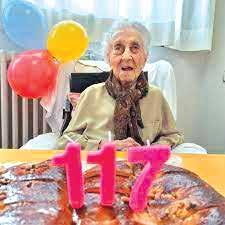
“She is happy to be able to celebrate this special day intimately with her family and colleagues and wishes everyone a happy Monday,” Boix said.
Morera played piano until she was 108. She has embraced technology and even has a social media presence on X, thanks to her 80-year-old daughter.
“Good morning, world. Today I turn 117 years old. I’ve come this far,” she wrote Monday.
Morera is currently the 12th oldest verified person in history and would rise to the No. 5 spot if she makes it to her 118th birthday.
Can we say, “Until 120”?
Maria Branyas Morera has a lot of candles on her birthday cake. She celebrated her 117th birthday on Monday.
Morera, who now lives in Catalonia, Spain, is the oldest living person in the world. She was born on March 4, 1907, in San Francisco. She lived in the Californian city until she was 8 years old, when she moved to Catalonia.
Morera was named the oldest living person by Guinness World Records in January 2023, following the death of

We give him points for tenacity.
Donald Gorske holds the world record for eating the most McDonald’s Big Macs in a lifetime. But he hasn’t just taken the record and laid down his burger. No, no. This guy is for real. Last year, Gorske ate 728 Big Mac burgers, bringing his lifetime total to 34,128.
Gorske, who has saved the receipt and package from every Big Mac he has eaten, first tried McDonald’s signature burger on May 17, 1972.
“In that moment, I said: ‘I’m going to probably eat these for the rest of my life.’ I threw the cartons in the back seat and started counting them from day one,” the fast food fan said.
Gorske, who has held the record since 1999, said his eating habits have changed over time. He used to eat up to nine of the sandwiches a day, but these days he usually stops at two.
“People who have watched me eating a Big Mac often comment that I look like I’m eating one for the very first time,” he said.
Gorske isn’t opposed to trying new things – he once ate a Burger King Whopper in 1984, but decided it just didn’t hit the same spot.
“When I like something, I stick with it all the time,” the Wisconsin resident said.
Supposedly he doesn’t suffer from any ill health effects from his lame diet. And he said he remains thin because he doesn’t eat French fries.
“Many people thought I’d be dead by now but instead I’ve been a record holder for my 24th year – one of Guinness World Records’ longer-running record holders, so that’s pretty cool to me,” he said.
Sounds like a big deal.

If you wanted to get gas in New Zealand last week, you may have been disappointed. Dozens of gas pumps in the country were out of service for several hours on Thursday due to a glitch in the payment system because of the leap year.
Gas station chains including Allied Petroleum, Gull, Z and Waitomo reported they could not process card payments on Thursday because their computer systems were not programmed to accept February 29 as a valid date.
“Motorists have been turning up and unable to get fuel,” Julien Leys, a spokesman for Gull New Zealand, told The New York Time s. “It’s been incredibly frustrating for our customers.”
Drivers were able to obtain gas from
pumps being manned by attendants. But for those who wanted to pump gas themselves, the payments weren’t being processed.
John Scott, the chief executive of Invenco, the payment processing system, said the company operates pumps in over 100 countries, but only New Zealand was affected by the issue.
“We clearly know about leap years,” Scott said. “We’ve been dealing with them for the last 20 to 30 years.”
Sounds like the technology just ran out of gas.

La Bougie du Sapeur makes it easy to catch up on the news. In fact, this satirical newspaper only comes out every few years – on February 29.
The French paper is a leap year-only publication, filled with cringeworthy puns and commentary on events of the past four years.
The 2024 edition includes an article suggesting France doesn’t need schools anymore thanks to artificial intelligence. Another story floats the idea of dismantling the Eiffel Tower during the Paris Olympics to reduce security risks. Which company will be responsible for putting it back together? IKEA, of course, will have to produce a manual for rebuilding it.
Some friends started the newspaper as a joke in 1980, naming it after a comic book figure who was born on February 29. The last edition, in 2020, sold 120,000 copies. Revenue from newsstand sales goes to a charity.
This is not journalism at its finest. Their articles are politically incorrect, irreverent, and, at times, dated. But sometimes it’s good to see the news in a lighthearted way.
Even if it’s just once every four years.





Last week, the Five Towns Jewish community was privileged to host Nevut IDF Lone Soldiers for an evening of support and inspiration.


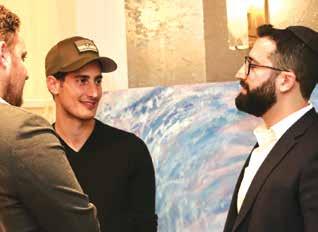
Soldiers discussed the challenges they face returning home after fighting in Operation Iron Swords and how Nevut supports them.
The evening featured beautiful



artwork by Lone Soldier Yitzchak Devor and was graciously hosted by the Moseson family. Thank you to all those that came and participated.
For more information about Nevut and its vital programs to support our IDF Lone Soldiers, please visit nevut.org.

Around the Community

 Author Ann Koffsky visiting HALB
Author Ann Koffsky visiting HALB
HALB celebrated Read Across America by having different grades join classes and read to each other. Lev Chana students also had some special visitors come and read to
them, including parents, administrators and author Ann Koffsky. It was a wonderful opportunity for students and teachers to spread their love of reading across all grades!
The HAFTR Middle School STEM Stadium (Summit) at HAFTR recently hosted an electrifying event that left attendees in awe. Students, brimming with enthusiasm and excitement, showcased their innovative projects centered around the theme of sports, marking a culmination of their efforts and creativity.
The event was a testament to the diversity of talent within the student body, with each project offering a unique perspective on various aspects of sports. From cutting-edge technology to inventive designs, the exhibits captivated spectators and underscored the students’ ingenuity.
Attendees marveled at the breadth of topics explored, ranging from the science behind athletic performance to the engineering of sports equipment or creations to help make the sports world more accessible and/or safe. Whether it was analyzing the strength of one’s baseball bat swing or a helmet that tested for concussions or head damage or even an alarm for lost strollers within a stadium, each project demonstrated a deep understanding of STEM principles and their real-world applications in the realm of

sports, safety, or consumer engagement.
Moreover, the atmosphere was infectious as students eagerly shared their knowledge and passion for STEM with peers and visitors alike. The event served as a platform for academic achievement and a celebration of collaboration, curiosity, and innovation.
As the Middle School STEM Stadium came to a close, it left a lasting impression on all who attended, inspiring a new generation of budding scientists, engineers, and sports enthusiasts. Thank you so much to our inspiring faculty Gittel Grant, Julia Dweck, and Ilana Drubach for their dedication.
With such remarkable talent on display, the future of STEM education at HAFTR is undoubtedly bright.
 By Avigail Nassir
By Avigail Nassir
Last week, SKA participated in the annual Yeshiva League Model Congress hosted by HAFTR. Along with students from all over the metropolitan area and beyond, SKA debated on a wide range of foreign and domestic policy regarding the presented bills and resolutions.
Senators representing SKA played a prominent role on the action of the day, Yasher koach to the students who partook in the debate: Annabelle Engel, Chani Heimowitz, Chaya Furst, Gila Yastrab, Hadassa Klahr, Libby Benjamini, Nava Hurwitz, Rachel Loike, Rebecca Berg, Ruth Ginsburg, Sarah Owadeya, Talya Garfield, and Tzipora Witner, as well as Presiding Officers Ariana Rossman, Avigail Nassir, Liba Hecht, Michal Greenblatt, Romima Shahkoohi, Tamar Pinchasov, Tamara Fuchs, and Zahava Bekritsky.
SKA established their presence and commitment, ranking 3rd place overall for awards received. Congratulations to awardees Annabelle Engel, Hadassa Klahr, and Chani Hemowitz in placing 2nd in committee, Sarah Owadeya rank-
Did you know?
ing 1st in committee, and Rachel Loike securing her spot 2nd overall!
The event was elevated with keynote speakers – Lizzy Savetsky, an influencer who actively combats antisemitism, along with Parker De Deker, one of the few Orthodox Jews to win nationals. Both exemplified great leadership in inspiring all students to find their voice through debate and take it with them moving forward.
Following the conclusion of the event, junior Hadassa Klahr remarked, “I really enjoyed meeting other passionate Jewish students from different schools coming together to explore what it was like to be in congress and discuss the different issues we face in America.”
Thank you coach Shani Butler and captains Annabelle Engel and Rachel Loike for playing instrumental roles in leading the team to victory.
Captain Rachel Loike reflected on her time and contribution to Model Congress, “After participating in Model Congress for three years, I can say that every aspect has been amazing and extremely rewarding. The people I have met and experiences I encountered will stick with me for the rest of my life.”
Owl species emit different sounds. The barn owl makes a screeching sound, while the barred owl sounds like the neigh of a horse.

Around the Community

On Wednesday, February 21, Bnos
Bais Yaakov/Tichon Meir Moshe marked a significant milestone as it hosted its 30th annual dinner at the Sands. The theme, “Mirror Me: Lev L’lev,” portrayed the impact of the different role models in the girls’ lives throughout their years in BBY/TMM.
Moshe Hammer, a member of the executive committee and emcee at the event, began the evening with glowing accolades for the entire BBY/TMM staff, extolling their exemplary dedication to shaping each girl into her own success story under the leadership of Mrs. Gornish. Follow-

ing suit, Yoily Edelstein, president of the school board, emphasized the tireless efforts of the school’s educators, who tailor the curriculum to nurture the individual potential of every bas Yisroel who walks through the doors of BBY.
“The secret that makes BBY special lies in its recognition of each class’s unique culture, driving a curriculum that evolves to meet the distinctive needs of its students.”Mr. Yoily Edelstein, President
Keynote speaker Harav Pinchas Weinberger, Rav of Bais Tefila of Inwood, captivated the audience and drew paral-


lels between the parsha and the enduring values instilled at BBY. He emphasized the significance of preserving tradition and identity, likening it to the way Yaakov Avinu entrusted his children to hold onto the atzei shitim for the eventual building of the Mishkan, thereby ensuring the mesorah is maintained while we are in galus.
The distinguished honorees, Mr. & Mrs. Shlomo Reich, Mr. & Mrs. Dani Lilker, Rabbi & Mrs. Nechemia Weiss, and Mr. & Mrs. Chaim Homnick, were praised as beacons of inspiration, recognized for their unwavering dedication and leadership within both the BBY/TMM family as well as the broader Far Rockaway and Five Towns community.
Rabbi Weiss shared an anecdote illustrating the profound care exhibited by BBY staff. He recounted how his daughter was uplifted by a simple gesture from her former teacher, who with no specific cause, slipped his daughter a note to let her know how great she was doing.

Executive Director Rabbi Ephraim Blumenkrantz described the profound shift in klal Yisroel ever since the war in Eretz Yisroel r”l, in particular the strong sense of Jewish identity awakened in the hearts of many unaffiliated Jews. He expressed how fortunate the girls are at BBY/TMM in that they are infused with a love and pride of Yiddishkeit daily. He conveyed his deep hakoras hatov to the staff for their pure devotion and for serving as role models the girls desire to mirror.
“Every day’s avodah is to develop that eishes chayil mi yimtza, to help our girls find it within themselves.”- Rabbi Ephraim Blumenkrantz, Executive Director
With a staff of over 325 and a student body of 1,500, ka”h, Bnos Bais Yaakov/ Tichon Meir Moshe continues to stand as a paradigm of excellence, illuminating the path towards transformative education and shaping the leaders of tomorrow.

We are one week away from the opening day of 5 Towns FM Home Loans Flag Football League! All jerseys were given out last week, and we are ready for opening day. The players have been eager to play since the last season ended. Last season was unbelievable with so many games being so competitive. The players improved so much as the season went on. This season is going to be even better! The boys
will be playing as real football players with customized footballs, and more refs were hired to referee the games. We welcome all the new boys joining us this season and welcome back the ones who played last season. We can’t wait to see everyone on the field real soon!
Every player will be receiving a FM Home Loans authentic football and Gatorade water bottle. See everyone at week 1.
Did you know that sitting – yes, just sitting – could shorten your life?
That you should not drink orange juice, nor give it to your children?
In medieval times, nobody washed –not even royals, and especially members of the clergy, and during the Inquisition, secret Jews were revealed because they bathed and kept clean?
By making just five easy lifestyle changes you could add 12-14 years to your life? (Men, 12 more years; women, 14)
And, why you should never wish anyone to live to 120?
Can’t be? Way out, you say?
Look it up. These startling, but verifiable, statements are but a few of the head-turning facts documented in Michael Kaufman’s remarkable, insightful book, Am I My Body’s Keeper? The Way of Torah and Science – Be Healthy and Fit, Lose Weight, and Live Years Longer.*
We all want to be healthier and fitter. And who doesn’t want to live longer? But it’s not a magical pill or fantasy fountain of youth that Kaufman offers, but a realistic, practical guide to being healthy and fit at any age, and to live longer - years longer. The remarkable work is grounded on the age-old teachings of the Torah sages, the Rambam in particular, and on scientific research.
Kaufman’s extraordinary book is a must read – an easy-to-follow guide for men and women of all ages for behaviors that have been confirmed by rigorous, large-scale scientific studies as effective in producing dramatic, life-transforming results. The studies conclude that you could add a dozen or more years to your life by just making some simple lifestyle changes. As the author makes clear, we need not accept 73, today’s average lifespan, for ourselves. We could extend our lives beyond 73, quite possibly considerably beyond.
Moreover, Kaufman shows, that those additional years we gain need not be accompanied by the painful, debilitating illnesses often linked to old age – heart disease, cancer, stroke, Alzheimer’s, and diabetes; they could be healthy ones.
The most significant of the lifestyle

changes that could significantly extend your life? More physical activity. So important is physical activity, Kaufman informs us, that if you exercise regularly, you could even skip some of the other items on the life-extending behavioral list and still prolong your life.
So why isn’t everyone getting up and moving? Why are so many intelligent people living sedentary lives and just average lifetimes when they could easily enjoy additional good, healthy, and happy years?
When we spoke to Michael Kaufman, he explained that getting people to take the simple steps necessary to prolong their lives is precisely why he wrote Am I My Body’s Keeper?
The author eats his own cooking. In his 92nd year, Kaufman is energetic. Slim and fit, he lives in Jerusalem’s Beit Tovei Ha’ir retirement residence, where he researches and writes about health and fitness 10-12 hours a day while standing – and continuously moving – at his shtender-desk. For that matter, he stands and moves all the time, sitting only to eat – mostly fruit and vegetables.
Kaufman’s day starts long before daybreak, with spirited calisthenics, weights, and a vigorous daily workout on an elliptical exercise machine on the patio of his apartment fitted with a stand for a learning book. Then, Shacharis at a Netz-sunrise minyan, and some more learning, followed by breakfast.
He walks briskly wherever he can. And, unless he is going to a high floor, he invariably chooses the stairs over the elevator. He views keeping healthy and fit as routine, an integral part of his daily life, like davening, learning, and eating – the vital behavior that makes everything possible for longer. Kaufman is his body’s keeper.




 “TBy Chaim Gold
“TBy Chaim Gold
his historic maamid transpiring now, in a place where history was previously made, is a maamid that continues the legacy of Torah bequeathed to us right here by the Chofetz Chaim, the Gerer Rebbe, Rav Chaim Ozer, the Chortkover Rebbe and Rav Meir Shapiro, who established the Daf HaYomi in Vienna one hundred years ago. This is the place where Klal Yisrael came together in unity, the olam hayeshivos and the olam hachassidus joining forces to increase kavod haTorah.”
Those words were the beginning of the seminal speech of HaGaon HaRav Dovid Cohen, shlita, Rosh Yeshivas Chevron, at the Sofiensäle Hall in Vienna, the same hall where the Knessiah Gedolah was made in the same city, Vienna, where the Daf HaYomi was established one hundred years ago.
Rav Cohen’s drasha along with those of numerous Gedolei HaTorah V’Hachassidus, Ashkenazim and Sefardim was but one highlight of a historic journey filled with highlight after highlight and climax after climax.
In truth, the word “historic” today has become a bit clichéd; however, Dirshu’s journey to Vienna, Pressburg and Keristier to celebrate the inaugural siyum of the Amud HaYomi program in the Sofiensäle Auditorium in Vienna, the same majestic hall where the famed Knessiah Gedolah was held, was nothing short of historic.
The maamad of the siyum attended by leading senior Gedolei Yisrael, Ashkenazim, Sefardim and Chasssidim of all types, all unified under the Torah banner of Dirshu, was a deeply emotionally and inspiring maamad of chizuk. How to describe the sight of senior Gedolim, many elderly, going above and beyond their

abilities, shlepping on planes and buses, to come express their support for Torah, and admiration for an organization that facilitates limud haTorah with a breadth and scope, never seen before?!
In addition to the actual maamad of the siyum, which was the heartbeat of the whirlwind journey, powerful tefillah rallies were held at the tziunim of the Chasasm Sofer and the Ksav Sofer in Pressburg and at the tziunim of the famed Chortkover Rebbe and HaGaon HaRav Yosef Engel in the old beis hakevaros in Vienna and the next day at the tziun of Rav Shayele of Keristier.
The Siyum at the Sofiensäle Hall
The buses came one after the other, stopping in front of the Sofiensäle Hall in downtown Vienna to let off waves of participants. In addition to guests from all over the world, virtually the entire chareidi community of Vienna was in at-

tendance.
The palatial hall filled up quickly and then…it happened. The orchestra began to play as the assemblage rose, craning their necks to see the Gedolei Yisrael entering the hall, being welcomed and then walking down the regal red carpet in the center of the hall: Rav Dovid Hofstedter, shlita, Nasi of Dirshu, was flanked by HaGaon HaRav Dovid Cohen, shlita, on one side and HaGaon HaRav Chaim Peretz Berman, shlita, Rosh Yeshivas Ponovezh, on the other. Behind them, walking one by one were numerous Gedolei Torah and Chassidus.
Rav Dovid Cohen: “The Amud Hayomi is Not Coming to Weaken the Daf Hayomi but to Strengthen it!”
The address of Rav Dovid Cohen, Rosh Yeshivas Chevron, set the tone for the evening. Rav Dovid, who has enthusiastically supported, advised and encour-
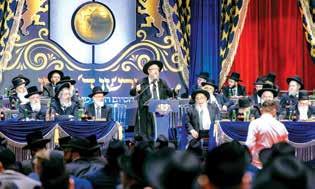

aged Dirshu’s hanhallah in their Amud HaYomi undertaking, said, “Wherever I go, people ask me, ‘Perhaps the Amud HaYomi can somehow be seen as an insult to Rav Meir Shapiro? After all, he instituted the Daf HaYomi, and [with this program] we are minimizing the daf by cutting it in half into an amud ?’ My answer to this question is that to me, it is clear as light that the Amud HaYomi is not coming to weaken the Daf HaYomi but to strengthen it!
“We must understand, Daf HaYomi is not like the limud of chok! If a person does the Daf HaYomi in a half hour, that is not the Daf HaYomi of Rav Meir Shapiro. Rav Elyashiv told me that learning without understanding is worth very little. It is better to learn less but to really understand. Thus, if the Amud HaYomi will ensure that a person can learn less but understand, then this is not minimizing the daf !” Rav Cohen thundered, “It is strengthening the entire purpose of the Daf HaYomi.
“Just look at how many thousands of people have begun to learn the Amud HaYomi! Since the inception of the Amud HaYomi, just a few months ago, so many more people have this amazing daily kevius in Torah. This is not on the cheshbon of the Daf HaYomi. Nearly all the tens of thousands of learners are new learners, that have not been learning the Daf HaYomi until now. It is my hope that more and more will join for Masechta Shabbos.”
The majestic hall with its high ceiling and balconies, ornate architecture, with the three-tiered dais graced by Gedolei haTorah and prominent rabbanim from throughout Europe and beyond, provided the most fitting backdrop for the royal nature and historic significance of the event.


Rav Avraham Salim, Rosh Yeshiva of Yeshiva Me’or HaTorah and a senior Sephardic Gadol who is a member of the Moetzet Chachmei HaTorah, stressed, “Being here in Vienna, where the Daf HaYomi was instituted and where so many Gedolei Torah came together on behalf of Klal Yisrael, connects us to them.”
Rav Salim explained that one of the most important components of the Amud HaYomi is that it provides a clear goal and framework for which to learn Torah.
“The Daf HaYomi, the Amud HaYomi, the Daf HaYomi B’Halacha all provide a framework to accomplish. Not only for those learning all day, but for baalei battim as well. This is huge!”
Rav Yaakov Meir Stern, Dayan of Zichron Meir pointed out three distinct advantages of lomdei Amud HaYomi.
Firstly, when learning Amud HaYomi, there is built-in time for chazarah. Secondly, for those who find the Daf HaYomi too much, the Amud HaYomi provides a chelek in every part of Torah, and thirdly, bnei haYeshivos who are accustomed to learning at a slower pace, can afford the time to look into meforshim
Rav Dovid Hofstedter: Connect
Am Yisrael With The Torah Hakedoshah
In a drasha that was in essence a shiur klali on the power that Torah has to enable Klal Yisrael to withstand the ravages of galus and continue to thrive, Rav Dovid Hofstedter, Dirshu’s Nasi, pointed out, “One hundred years ago, Klal Yisrael accepted upon themselves a new limud. Not long thereafter Klal Yisrael was struck with one of the greatest periods of darkness, and this limud was tremendously mechazek Klal Yisrael, enabling them to survive the darkness of the Holocaust and was instrumental in the ul-


timate rebirth of Klal Yisrael. Today, a new limud has again been instituted and again the world is descending into darkness.”
“We always felt and hoped that the terrible tzaros that we heard about from our forbearers belonged to a different era. Tragically, Jewish blood is being spilled again. The world is trembling again.”
Rav Hofstedter explained that if we see the world trembling it is a sign that our bond with the Torah is weak. The purpose of this new limud, the Amud HaYomi, is to connect all of Am Yisrael through undertaking more learning, more iyun and more clarity.
“All the Gedolim are telling us that the call of the hour is to connect Am Yisrael with the Torah hakedoshah. We must invest all our kochos to connect Yidden with the Amud HaYomi. From Brooklyn to Bnei Brak, from London to Lakewood, from Buenos Aires to Beitar, and from Monsey to Melbourne!
“It is our task to go from kehillah to kehillah opening new shiurim and new chaburos. We cannot afford to be weak. Even when we feel there is no koach, we must declare that there is koach!”
One of the highlights of the event was the divrei bracha delivered in advance of the hadran by HaGaon HaRav Aharon Schiff, shlita, Rav of Antwerp.
The hadran was made by HaGaon HaRav Pesach Horowitz, shlita, senior Dayan of Belz. Prior to calling on HaGaon HaRav Shevach Rosenblatt, shlita, Rav of Bnei Brak, to recite the Kaddish, the chairman reminisced about previous major Dirshu siyumim when the Sar HaTorah HaGaon HaRav Chaim Kanievsky, zt”l, said the Kaddish
Torah Fireworks in Vienna
What transpired at the completion


of the Kaddish could aptly be described as fireworks! The simchas haTorah! The entire Sofiensäle Auditorium burst out in song as the venerated rabbanim on the mizrach held hands and began to dance together in a profound outburst of simchas haTorah.
Eventually, Rav Hofstedter and many of the other rabbanim came down from the dais, and spirited dancing enveloped the entire hall as the mesaymim and the Gedolei Yisrael who so support and encourage the Amud HaYomi danced together in circle after circle of achdus through Torah.
There were no Sephardim and no Ashkenazim, no Chassidim and no Litvish bnei Torah, there was no Europeans, no Americans and no Israelis – there was just one unified body of the Am Hashem fused as one as they danced with Hashem and His Torah. One Am Yisrael united through the Kol Yaakov, the Torah that they all learned! The simcha of that dance will remain etched in the hearts and minds of those who merited participating, for years to come.
With great emotion, HaRav Binyomin Finkel, shlita, Mashgiach of Yeshivas Mir, Yerushalayim, said, “If we want to know what we can do during this difficult time for Klal Yisrael,” Rav Finkel exclaimed, “if we want to know how we can restore the nefesh of Klal Yisrael, the answer is: one more amud Gemara! One more daf Gemara! Learn Torah with a bit more depth, with a bit more breadth! Learn Torah, even if it is difficult for you to learn.”
Rav Yechiel Mechel Steinmetz senior Skverer Dayan, said, “As a dayan, I am privy to many difficulties in the area of shalom bayis. I have repeatedly seen that in a home where the husband learns Torah and has goals in Torah, learns in pro -
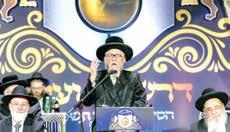
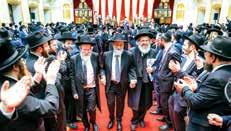
grams where he must take tests, this very discipline is so helpful in shalom bayis! How many homes have been saved or enhanced due to Dirshu’s many programs?! How many homes were illuminated by Torah learned in these programs?!”
Rav Nissan Kaplan: “The Secret of Dirshu is Chaveirim!’
The entire evening was interspersed with a combination of lively and inspiring music. HaGaon HaRav Nissan Kaplan, shlita, Rosh Yeshiva of Yeshiva Daas Aharon, explained that the Baal HaTurim describes the keruvim facing each other as “two chaveirim learning

Torah together.”
“He doesn’t say two talmidei chachomim. No. He says two chaveirim. I think this is the secret of Dirshu.” emphasized Rav Nissan. “Dirshu brings each of its lomdim together as chaveirim Lomdei Dirshu are part of a special club. The beauty of Torah is when it is learned together as chaveirim, with a shared sense of mission and friendship. That is what you see at every Dirshu gathering. It is a chevra
“What must come out from this special maamid held here in Vienna, where the Chofetz Chaim, the Imrei Emes, the Chortkover Rebbe and Rav Meir Shapiro,
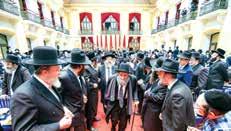
all called, ‘Mi L’Hashem eilai.’ We must also call ‘Mi L’Hashem eilai!’ If you have not joined yet, now is the time to join the Amud HaYomi!”
Following the siyum, hundreds traveled an hour away to Pressburg, the place where the Chasam Sofer served as Rav and Rosh Yeshiva.
All the numerous Rabbanim were ushered in first, down the long stairs, into the cave where the kevarim are located.
It was as if the floodgates of tears had

been released. All the pent-up heartache caused by the tzaros plaguing Klal Yisrael since Simchas Torah burst forth from the feeling heart of Rav Shimon Galei, and all of the gedolim and the Dirshu Yidden began to shed tears. One kappitel, after another, after another… the hisorerus reached an emotional crescendo.
As the large crowd slowly exited the kever, one could hear a cacophony of languages, French and Yiddish, German and British English, American English, Flemish and Swiss-German and even Hungarian and Russian. No matter where they came from, they knew they had been part of history.
Pressburg. The name of the city itself arouses a cherdas kodesh, a holy trembling. Pressburg, the home of the Chasam Sofer, the place where the Chasam Sofer taught Torah in yeshiva, wrote his sefarim on Shas, halachic teshuvos, drashos, and on Chumash. Pressburg, the holy place where the subsequent Rabbanim of Pressburg, the Ksav Sofer, the Shevet Sofer and the Daas Sofer guided Hungarian Jewry and beyond.
It was at night, we were all so deeply touched by the Amud HaYomi siyum in Vienna, and we were headed to Pressburg, or Bratislava, as it is called today.
Still, despite the anticipation, nothing could have prepared us for the spiritual odyssey that hundreds of chavrei Dirshu underwent at the unique, life-transforming maamad tefilla held at the tziyon of the Chasam Sofer in a subterranean

mausoleum where he is buried with other Gedolim of that era.
The delegation arrived. All the numerous Rabbanim were ushered in first, down the long stairs, into the cave where the kevarim are located. The Rabbanim, gedolei hador, were standing there around the tziyon. The rest of us were standing a bit further back… and then it happened. A wail pierced the air. The piercing wail, the geshrai of Rav Shimon Galei as he started to recite the special kappitlach of Tehillim that were specially recommended to be said at the Chasam Sofer’s tziyon by his talmid, Rav Avrohom Shag, Rav of Kobersdorf and later in Yerushalayim.
It was as if the floodgates of tears had been released. All the pent-up heartache caused by the tzaros plaguing Klal Yisrael since Simchas Torah burst forth from the feeling heart of Rav Shimon Galei,

and all of the gedolim and the Dirshu Yidden began to shed tears. He began reciting the Tehillim passuk by passuk, punctuated by heart-rending sobs. The ancient words echoed through the mausoleum accompanied by the cries of all the Yidden pouring their hearts out in tefilla to Hashem as they begged Hashem, in the zechus of the Chasasm Sofer, to send Klal Yisrael all the yeshuos that they need. One kappitel, after another, after another… the hisorerus reached an emotional crescendo.
After the recital of Tehillim, Rav Shmuel Eliezer Stern, a talmid muvhak of Rav Shmuel Wosner, a representative of the mesorah of the Chasam Sofer who today serves as av beis din and Rav of Western Bnei Brak, was asked to say divrei hisorerus and lead tefillos. His tefillos culminated with the resounding roar of Shema Yisrael, Baruch

Shem Kevod Malchuso and Hashem Hu Ha’Elokim recited seven times.
The assemblage then made their way to the kevarim of the Ksav Sofer and the Shevet Sofer, located in a beis hachaim just minutes away from the Chasam Sofer. The tefillos, said from the depths of the heart, seemed to shake the rafters!
At both kevarim, one literally felt as if the very gates of Shomayim were opening. As the large crowd slowly exited the compound, following the singing of niggunei hisorerus, a pensive atmosphere filled the air. We all knew that we had just experienced something unique… we had touched otherworldly holiness.
We were hopeful. The zechus of the Chasasm Sofer who so valiantly fought on behalf of Klal Yisrael would stand Klal Yisrael in good stead at this difficult time. Amein, kein yehi ratzon.


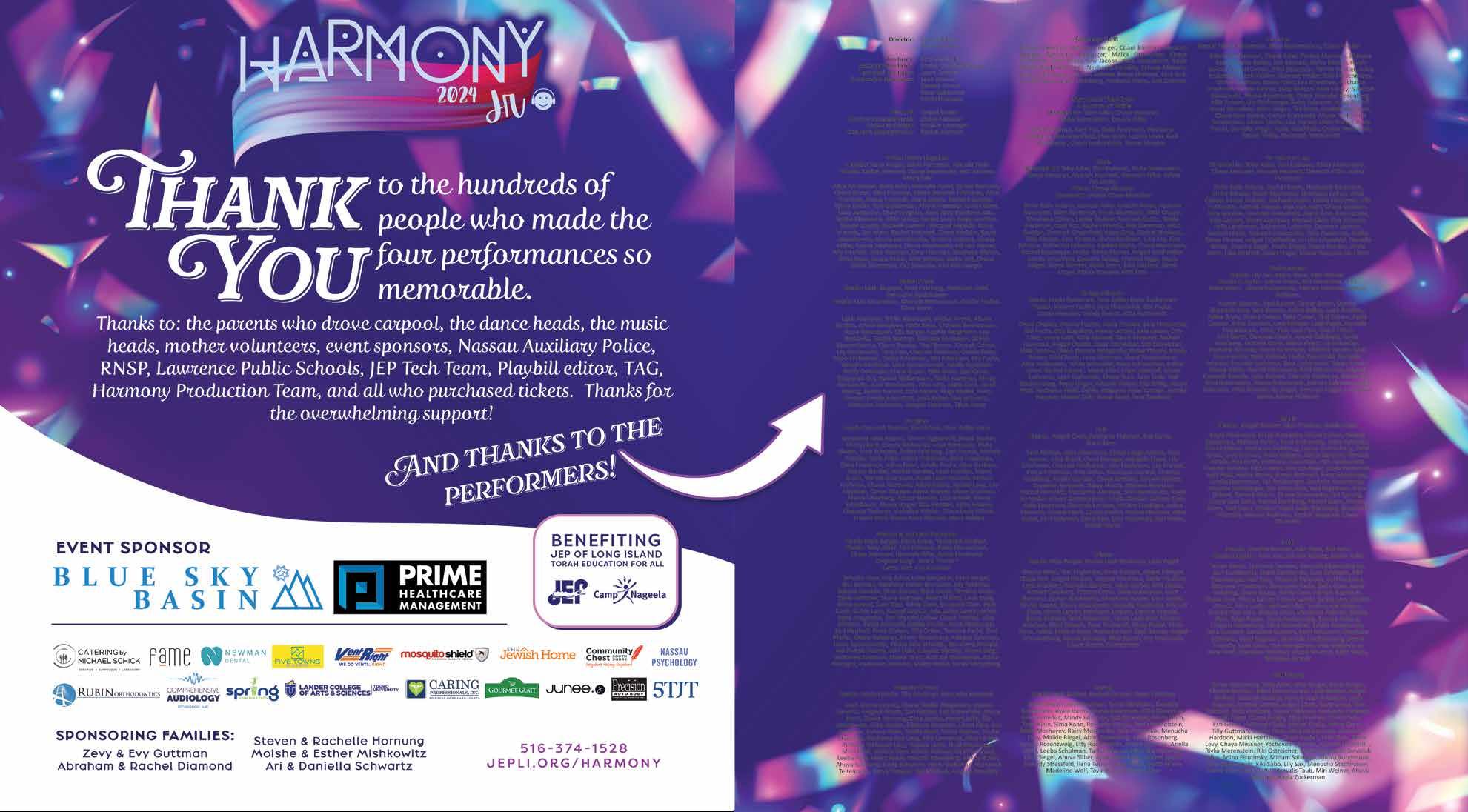




Mazal tov to Rebbe Karr and TAL 2, the oldest class at TAL Academy, on their siyum in honor of the completion of Perek Alef in Mishnayos Sukkah! Rebbe Karr and his students celebrated this momentous occasion with their fathers and grandfathers (and a few uncles and older


brothers) at a Sunday morning program at the school. The program included a Sukkah display. Each boy built his very own model sukkah reflecting a sukkah discussed in the first perek. The sukkah stood alongside a display the boys prepared which had a written explanation of what they created. The students
were very proud to show their work to their families and fellow students. The boys and their families enjoyed a delicious breakfast and program where they teamed up with their families and played an exciting trivia game on what they learned. The program was a huge success and a beautiful opportunity for the boys

For the past three months music and excitement filled the halls and classrooms of the sixth grade in Shulamith as the students prepared for their Bat Mitzvah Program. On February 28, all of the anticipation was finally actualized with the big night the girls had been waiting for. The night began with a beautiful production written by Morah

Shoshana Fischman and produced by Morah Rachel Ash. The theme of the production was the deeper meaning behind becoming a bat mitzvah girl and joining the Shalshelet Hamesorah of the amazing women that came before them. The production included drama directed by Morah Rachel Ash, choir led by Morah Leeby Kompel, and dance coordinat-
to show off the fruits of their labor. Their families and the TAL faculty are proud of the hard work the boys put into this project and the stunning accomplishments the TAL 2 boys achieved thus far this year. It was a meaningful experience, as well as a proud moment for the boys, their families, and the school.

ed by Morah Ariella Katz. At the end of the production, the audience watched a video montage consisting of pictures of the girls, their mothers, and their grandmothers. Following the production, all present enjoyed a dessert reception and took part in a chesed project. To continue the theme of the evening, the girls put together Hadlakat Neirot kits with their
The Beach Shul held a special groundbreaking ceremony for the community this past Sunday for their Mikvah. For dedication opportunities, please contact 917-420-1410.


mothers to be sent to displaced women in Eretz Yisrael. The girls, their mothers, grandmothers, and teachers then enjoyed the beautifully catered collation as they basked in the success of their performance.
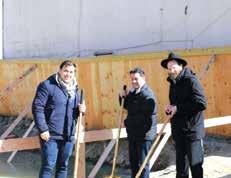

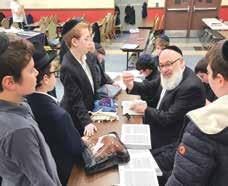
Rabbi Tzvi Krigsman, shlita, Menahel Yeshiva Ketana of Long Island, teaching his Mishna Yomi Chaburah. Seventh and eighth grade boys voluntarily attend Rabbi Krigsman’s daily shiur following Shacharis every morning.


Amidst a wealth of diverse academic offerings, the Yeshiva University High School for Girls’ STEM program stands out: year after year, it produces students who are inquisitive and ready to apply the engineering and technical mastery they’ve learned in the classroom in the greater world. Last week, the students of Central’s Engineering I and II courses applied these skills in competition at Hackathon 2024. Sponsored by the Center for Initiatives in Jewish Education (CIJE), the Hackathon annually challenges young engineers to think big about global issues by challenging students to develop a device or app that addresses a specific problem – all within a five-hour timeframe. This year’s Hackathon theme, “The Internet of Things in Relation to Environmental Science,” incorporated skills that students in Engineering I and II have been honing since the beginning of the year, which include developing code in order to control different objects.
“It’s a great opportunity for the students to expand on the skills they’ve been learning in Engineering and apply them in a practical way,” said Central Engineering faculty member Mr. Michael Spindel. “And this year’s group has a lot of potential and a lot of room for positive growth.”
Freshmen engineers included Camryn Brunner, Maya Goykadosh, Annabelle Klein, Maayan Kotkin, Aden Muskat, Hudis Schnur, Bailey Rosenstock, and Sarah Wagman. Participating sophomore engineers were Hannah Austin, Lana Bahn, Kayla Etra, and Aliyah Kahn. This year’s Hackathon event was held at Industry City in Brooklyn.
“I have thoroughly enjoyed my Engineering class with Mr. Spindel these past two years,” said sophomore Hannah Austin. “I love that I’m a part of a group that is totally independent. This experi-
ence has contributed to the anticipation of Hackathon, in which I am thrilled to participate.”
Freshman Annabelle Klein agreed that Engineering has proven to be a formative experience. “I have had a great time in Engineering this year,” she said. “Mr. Spindel’s class is really interesting. I love the way that, with a few wires and some code, we can do an infinite number of things. I’m really excited for the Hackathon, because it’s an opportunity to have fun with my friends while using all the skills I’ve learned so far – and to learn even more.”
A highlight from this year’s event: a Central team composed of Maya Goykadosh, Maayan Kotkin, and Aden Muskat placed third overall with their Soil Analysis Device project.
“Coming up with an idea and seeing it through to the finish line in five hours is a
On Sunday night, March 3, the students of Bais Yaakov Ateres Miriam High School put on a dazzling, uplifting, and memorable musical production. With the theme of “Reaching Higher” running throughout, students from both the 9th and 10th grades had a chance to showcase their talents and gifts to the community. For the past few weeks, students have been practicing, choreographing, and creating inspirational and beautiful song and dance pieces. All aligned with the theme, students showcased various women from Jewish history who held steadfast to their beliefs and remembered that Hashem was always with them. Through the
power of the performing arts, students were able to take the audience on a journey through time and showcase the determination, hope, and faith of some of the most important women from Jewish history.
The night began with an inspirational video and song titled, “My Ladder.” With lyrics like, “As long as we are trying, that’s victory in Hashem’s eyes…” the audience got a glimpse of the theme of the night. After the video, three students portraying narrators set the stage for what was to take place. With impassioned and heartfelt voices, the narrators led us through the stories of six women who changed the face of Jewish history. While many of us
already know the stories of these women, the BYAM students told their stories in creative and meaningful ways.
The production began with the life of Sarah Imeinu. In a beautifully choreographed dance, students were able to tell the hardships Sarah faced as a childless woman to then having her son Yitzchak be brought as a sacrifice. The audience then got to witness more exhilarating dance and singing performances which told the stories of Queen Esther, Chana, and Rabbi Akiva’s wife, Rachel. Each performance brought the audience into the inner worlds of these women and showcased the struggles they went through. Each dance and song showcased these

challenge, but the students rose to the occasion,” Mr. Spindel said. “They had fun and gained valuable experience.”
Upcoming events for Central Engineering students include the Science Olympiad, the Science Robotics Competition, and CIJE Innovation Day in May.
women’s steadfast emunah and reliance on Hashem to overcome their challenges. The students even highlighted the lives of more current women in Jewish history, such as Sarah Schenirer and Rebbetzin Kanievsky.
To cap off the performance, all of the students came out on stage to feature and spotlight the achdus that needed to occur for this beautiful show to take place. Special thanks to Mrs. Ruchie Sokoloff, principal of BYAM HS, Ms. Chanie Koster and Ms. Linor Kuighadoush, Production Directors, and the amazing production staff for putting on a spectacular performance. We can’t wait to see what next year’s performance will bring!
Developing artistic talent and exploring various modes of creative expression are pillars of the educational program for the young students in HANC’s Early Childhood Center in West Hempstead. Introducing art to preschoolers is so important because it has a positive impact for their overall development. Art allows preschoolers to express themselves creatively and provides a multitude of opportunities to explore their imagination. Through their artistic creations, they can share emotions, ideas and stories, fostering effective communication skills. This is particularly valuable for very young children who may have difficulty expressing themselves verbally. Children can explore various mediums through which to share their thoughts and perspectives. In addition, art encourages cognitive development by promoting problem solving skills, critical thinking, and decision making. The child can learn to make choices regarding color, materials, and techniques which helps to further develop their cognitive abilities.
The ECC was transformed into the “Bet-ropolitan Museum of Art,” display-
ing the magnificent artwork of all of the creative Nursery Bet children. After learning about the lives and artistic creations of famous artists such as Vasily Kandinsky, Jackson Pollock, Henri Matisse, Paul Klee, Tyree Guyton, Romero Britto, and Marc Chagall, the children created their own masterpieces using a myriad of materials. On the day of the event, over 300 people, including parents, siblings and grandparents, attended to view the beautiful galleries that were on display in the auditorium. As each guest arrived in the lobby, they were handed a colorful brochure that included information about the artists’ backgrounds and illustrated how the children recreated the art in their classrooms. A video describing the process and showing the children crafting their artwork was shown in the “museum lobby.”
In addition to browsing the various galleries, a splendid repast was served to reenact the ambiance of a real art gallery. The guests were treated to art-themed desserts such as Matisse Cut Out Cup -
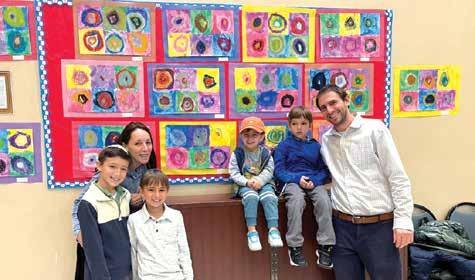
cakes, Chagall Stained Glass Cupcakes, Anna Thomas Jello Bricks and Jackson Pollock Splatter Rice Krispies Treats, which were served on plates depicting a painter’s palate. Beverages were served in champagne flutes to add to the cultural atmosphere of this most special evening.
While the artwork had all been created by the students, the guests were invited to help decorate an interactive Chagall
window board, thereby enabling all of the guests to help create artwork as well.
In reflecting on this magnificent event, Morah Trudy Rubinstein, Director of HANC’s Early Childhood Center, remarked, “This is such a fantastic way to introduce our youngest learners to the wonderful world of culture.”






The Out Loud Brachos contest, in its 19th is now being run in ten communities in the United States – the Five Towns, Queens, Monsey, West Hempstead, Passaic, Chicago, Dallas, Cleveland, Los Angeles and Atlanta.
The Five Towns sponsors this year

are Gourmet Glatt, Seasons Express, Kol Save, Chickies, Carlos & Gabby’s, and Pizza Pious.
Please reach out to outloudbrachos@ gmail.com with any questions.

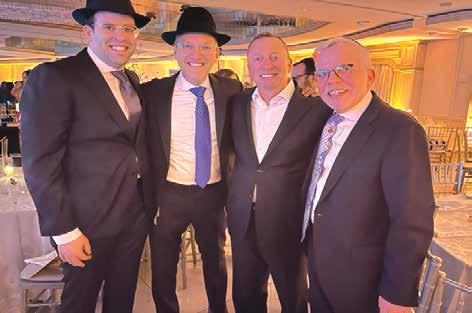
The Woodsburgh Minyan will be honoring Rabbi and Mrs Lewis Wienerkur at its upcoming 40th Anniversary dinner at The Woodmere Club on March 26. Rabbi Wienerkur has served for 35 years and has seen the shul transition from a Shabbos and yom tov schedule to daily minyanim throughout the year. The Minyan has an international reputation for its beautiful tefillot, as well as its warmth and sensitivity. Stanley and Marsha Haber are also be -
ing honored for the four decades of work Stanley has done for the shul and greater community. Reservations for the dinner

Last week, Bais Yaakov Five Towns held its inaugural crowdfunding event on Tuesday and Wednesday.
In an inspiring showcase of unity and support, BY5T parents, staff, and friends rallied together to raise necessary funds for their school. B’chasdei Hashem, the event successfully raised over $300,000, while also fostering a strong sense of achdus and camaraderie among all participants.
We want to take a moment to express our deepest gratitude to every parent, board member, and supporter. Your un-
wavering commitment, enthusiasm, and generosity have been the driving forces behind our success.
BY5T is proud to offer a school experience that upholds the tenets of a Bais Yaakov education while ensuring that curriculums are cutting edge and relevant for today’s Bas Torah.
For more information, please call: 516-500-BY5T or email: info@by5t.org.

In an era where the global stage witnesses the ebb and flow of peace and conflict, the community of Woodmere is poised to welcome a distinguished visitor from Israel’s parliamentary ranks. Member of Knesset Dan Illouz, representing the Likud Party, plans to share his perspectives and insights during a Shabbat speaking tour across the local synagogues. His visit, occurring amidst the ongoing conflict in Gaza, carries with it a weight of significance, providing a unique opportunity for the community to engage with the complexities of Israeli politics and its implications on global peace efforts.
Dan Illouz, at the age of 38, embodies the vigor and ambition of a new generation of Israeli politicians. With his roles on the Foreign Affairs and Defense Committee and as the chairman of the
Abraham Accords Caucus, Illouz is at the forefront of shaping Israel’s diplomatic and security policies. His visit to Woodmere is not just a routine speaking engagement; it is a bridge between the Israeli legislative halls and an American community keen on understanding the nuances of Middle Eastern geopolitics.
Illouz’s agenda in Woodmere is robust, encompassing a series of talks designed to illuminate the various aspects of Israel’s current challenges and opportunities. His firsthand experiences and active participation in key legislative committees provide him with a depth of knowledge on the defense strategies, foreign policy maneuvers, and peace initiatives that define Israel’s current geopolitical stance.
Moreover, his leadership in the Abraham Accords Caucus highlights a pivotal aspect of his visit. The Abraham Accords,
The much anticipated seventh and eighth grade YCQ girls’ Shabbaton began at the beautiful Holiday Inn in Piscataway, NJ, on Friday afternoon. Students swam in the indoor pool and participated in exciting “Pre-Shabbat ruach,” to welcome in Shabbat with singing and dancing. The energy continued throughout the evening.
After a beautiful tefillah, students gathered for seudat Shabbat. During the meal, students received “Shabbat-OGrams,” short notes that they had written to each other earlier that day. When the meal was over, students gathered in a circle to sing and hear divrei Torah from Leora Traeger, Gabryela Davydov, Tammy Matatov, and Liat Pinkhasov. Students then watched eighth grade students put on a hilarious skit, to help usher in the Adar spirit to the student body.
Talmidot then had the opportunity to hear from the absolutely incredible Mrs.
Jackie Biton, a world-renowned educator and inspirational speaker. She captivated the audience with a talk about “The Power of Our Actions!” After students heard from Mrs. Biton and an energizing oneg Shabbat, it was the Morot’s turn to put on their own hysterical skit.
Shabbat morning kicked off with tefillah that featured Rabbi Landsman’s insightful introductions to each aliyah and engaging parsha riddles from Rabbi Knapp. During kiddush, a group of students participated in a special initiative to complete the sefer Tehilim. After dividing up the 150 perakim, students completed the sefer as a zechut for those in Eretz Yisrael and for Cholim and Cholot.
The girls then participated in an entertaining custom YCQ themed game of Apples to Apples. After a delicious lunch that featured divrei Torah from Talya Shalamoff, Gabi From, and Moria Co -
as a landmark series of agreements, have marked a new era in Middle Eastern diplomacy. Illouz’s discussions will likely delve into the implications of these accords, offering an analysis of how they have reshaped regional dynamics and what they portend for future peace and stability in the area.
The significance of Illouz’s visit extends beyond the geopolitical insights he brings. For the Woodmere community, this event is a moment of unity and learning, an occasion to gather and reflect on the broader implications of global events on their lives and faith. It serves as a reminder of the interconnectedness of world Jewry, bound by shared heritage, values, and concerns for the safety and prosperity of Israel.
Woodmere looks forward to this unique opportunity.

hen, students had another opportunity to hear from Mrs. Biton.
More games were played with the Morot, including “Fe, Fi, Fo, Fum’’ and “Order in the Court,” which was followed by an exciting raffle that featured over 25 winners of some fantastic prizes. Faculty contributed individual prizes including lunch with teachers. Mincha and a meaningful seudat shlishit followed and included divrei Torah from Mia Aranbiev, Binah Baturov, Elisheva Schutzman, and Elisheva Katz.
After Arvit and Havdalah, the ruach train was full steam ahead with a musical Melave Malka that featured more singing and dancing. Sweatshirts were given out that will serve as a souvenir to remember all the amazing memories they created on the Shabbaton.
Special thank you to Morah Sarit Auerbach, Morah Rina Bienenfeld, Morah Alyssa Schussheim, Morah Mashie Ko -
HAFTR High School students recently competed in an intense Yeshiva League College Bowl meet on February 26. When the day ended, HAFTR’s Varsity and JV teams were
tied for first place in the Long Island Division with one more meet remaining. The JV team, led by Kayla Fauziev, Sasha Bokor, and Simon Mandelbaum, won three of the four games in the competition. The victories came against SKA, DRS, and Central. The Varsity team, led
by Jacob Wallach, Sean Harris, and Yaakov Lock, won all three of their games, defeating SKA, DRS, and North Shore. Both teams showed their knowledge, preparation, and teamwork, ranking first overall in the league, tied only with North Shore.

pelowitz, Mr. Jacob Grossman, Rabbi Landsman, Rabbi Knapp, Mrs. Cohen, and Mrs. Lowinger (and their families!) for all their hard work in organizing and attending the Shabbaton. It is thanks to them as well as Mrs. Fishman and the Business Office staff for making the Shabbaton so successful and truly one of the highlights of the year.
As the season progresses, the team hopes to continue their winning streak and look forward to earning a spot in the playoffs.
Achiezer Community Resource Center is thrilled to announce the appointment of Shragi Chafetz, LCSW as the new Director of Mental Health Services. With over a decade of experience in the field, Mr. Chafetz brings a wealth of knowledge and expertise to his new role.
After an exhaustive search, the board is thrilled that Shragi has been appointed to take over the reins from Dr. Brucha Lowinger who has loyally served as the Achiezer’s Director of Mental Health Services for over 13 years. During her tenure, Dr. Lowinger has made significant contributions to the organization and the community at large. We are confident that under Shragi’s direction and leadership, this department will continue to grow and flourish, serving the needs of our community.
Boruch Ber Bender, CEO and Founder of Achiezer, expressed his excitement about the new appointment, stating, “We are thrilled to welcome Shragi to our team. He has already made an immeasurable mark on the lives of numerous individuals and their families facing the most difficult of circumstances and crises. We are particularly excited that he’s going to do work to help coordinate and organize mental health services across the entire community.”
Elke Rubin, Achiezer’s Executive Administrator, expressed confidence that the transition would bring great benefits to the community. “We know that Shragi’s appointment will further enhance the quality and accessibility of mental health services in the Five Towns and beyond. On a personal level, he is a compassionate and caring person and a perfect fit to help people in their times of need and crisis. Through his many years of working in the Five Towns, he knows the struggles so many people have in dealing with their mental health and utilizes tried and true applications to each case, while thinking out of the box when necessary. It’s wonderful to have him on our team.”
Executive board member Ari Silberstein is encouraged about how this appointment dovetails perfectly with the organization’s vision for growth. “Our vision of expanding our mental health division is becoming a reality with Shragi

Chafetz at the helm. We look forward to seeing the positive impact his leadership will have on our community.”
Rabbi Bender elucidates some of the new initiatives Mr. Chafetz will be heading. “They include working tirelessly to expand the referral base; we all know how hard it is to find competent and appropriate mental health professionals. He will also be working on collaborating and networking with hundreds of other mental health professionals so that collectively we can expand our availability and services to the frum community.
“Achiezer is well known for its 24/7 crisis intervention team. Shragi joining gives an infusion to that elite team so they can respond to any crisis at any hour of the day. I don’t think such a multifaceted response team exists anywhere in any Jewish community. There are people who can help with different aspects of different crises, but to be able to call one phone number that does it all is what makes Achiezer unique.”
Mr. Chafetz is enthusiastic about the potential of his appointment. “Achiezer has given me the opportunity of offering help and support to people when they are in crisis and have nowhere else to turn. We are also working on creating a stronger resource network within the Five Towns and Far Rockaway mental health professional community. We are blessed to live in a community where even competitors are always happy to work together to help people. By coming together to meet each other with a chance to share resources and ideas. the people seeking help will have easier access to those services when reaching out to Achiezer or a therapist.”
Achiezer is dedicated to providing quality mental health services to the community and remains committed to supporting individuals and families in their journey towards wellness. They are grateful for the smoothness of the transition in directors and are always available to meet everyone’s needs.

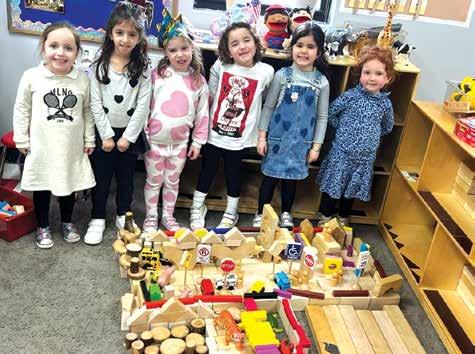



This past Sunday, DRS held its Annual Nidivei Lev Service Society Induction Ceremony. This special ceremony recognizes those DRS students that have shown exemplary service to their community and school through extraordinary acts of chessed and kindness. The ceremony honored members of the senior class who have served their school and larger community with great distinction. The ceremony was attended by the entire student body, as well as faculty and parents. What made the program truly unique was that the students were given awards by the directors and founders of many of the organizations that were the beneficiaries of the great chessed.
The keynote speaker was Rabbi Yechezkel Freundlich, rabbi of Congregation Beth Sholom in Lawrence. Rabbi Freundlich shared incredible stories of chessed that he witnessed on a recent mission to Israel that he took with his kehilla, emphasizing the importance of zerizus and caring for others when embarking on acts of kindness.
The following students were recognized for their incredible contribution: Bezalel England was honored for his volunteer work with the Woodmere Fire Department Juniors Department. Benny Kloc, Eliyahu Friedman, Gavriel Ostreicher and Ariel Gross were applauded for their steadfast commitment to Chabad’s Friendship Circle program. The New York Blood Center acknowledged the hard work and tremendous efforts that Ethan Mittan offers to their program. Avraham Schreck and Eitan Schaffer were mentioned for their work in publishing DRS’s weekly Torah publication, the D’Varim HaYozim Min HaLev. Yachad awarded Isaac Haskell for his many years of commitment on behalf of their organization. Lev Leytzan, a medical clowning program, lauded the dedication of Akiva Fink to their incredible program. iShine presented an award to Nadav Chelst and Zachary Rabe for their volunteer work. Shalom Task Force celebrated the contributions of Eliyahu for their participation in helping spread awareness of the organization. Kids of Courage was honored


to give an award to Joe Gamerman for his commitment to the program. Shlomo Alter and Daniel Steinman’s work in orchestrating and running the school’s broadcast operation, DRS Live, was recognized. Finally, Aron Cohen’s devotion to R’ Nerya Cohen’s Kehilla was commended.
DRS Menahel Rabbi Kaminetsky noted that all of the participants and guests were profoundly moved by the event: “Having been the beneficiaries of our students’ chessed programs here today has shown all of our students that when
they give of themselves, they can absolutely change another person’s life.”
Rabbi Kaminetsky began the program by thanking Director of Chessed Initiatives, Rabbi Kivi Naiman, who coordinates all of the Chessed activities that happen in DRS. Rabbi Naiman noted that “this program is important not only because it gives recognition to those have who have devoted their energy to helping others, but it also serves as an inspiration for our younger students to hopefully follow in the footsteps of these student leaders in giving back to the community.”
MTA talmidim, following up on a suggestion by MTA Yeshiva Fellowship Director, Rabbi Netanel Danto, began learning programs in their shuls. Jacob Hanian started Friday Night Learning in OT (Ohr Torah) in Edison, NJ. Jacob started this on his own, and it has been going strong for almost a year now. Through the existing Teen Minyan chat of his shul, Jacob spread the word about the new chavrusa learning on Friday nights, secures sponsors and helps arrange for the food. On average, 15 guys come to the learning and stay for one and a half to two hours every Friday night.
In a similar vein, and also pursuing the idea that Rabbi Danto presented them, Shua Ratzker and Netanel Schechter began a similar program in Congregation Beth Abraham in Bergenfield, NJ, a few months ago. Anywhere from 10-30 teenage boys come for an hour or two of

chavrusa style learning, in the newly-refurbished Donny Morris Beis Medrash. Cholent, kugel and drinks are served weekly, and sponsors are also found to help cover the cost.
MTA is proud of their talmidim for taking the initiative to be marbitz Torah and hope they will continue to be matzliach in this endeavor!

In a recent gathering at the Lawrence Yacht and Country Club, residents convened to address the growing concerns surrounding development in their community. Spearheaded by Paris Popack, Deputy Mayor of the Village of Lawrence, the meeting aimed to discuss the potential extension of a moratorium on development and its implications for the town. Approximately 80-100 attendees were present, with the majority expressing major concerns about current and future infrastructure issues.
One of the focal points of discussion was the upcoming Public Hearing scheduled by the Town of Hempstead on March 12, which seeks to prolong the current moratorium until June 18. Popack shed light on the recent rezoning of North Lawrence and Inwood as a transit hub district, proposing a vision centered around single-family housing, parks, expanded libraries, and cultural spaces.
Several attendees expressed apprehension regarding the pace of development and its impact on safety, infrastructure, and community cohesion. Judy Bernstein of the Lawrence Civic Association and Murray Forman, President of the School Board, emphasized the need for thorough consideration of these factors by local officials.
Assemblyman Ari Brown, also serving as Deputy Mayor of Cedarhurst, urged for comprehensive studies before proceeding with any development plans. He encouraged active community en-
gagement to ensure that residents’ concerns are adequately addressed. “I like aspects of it, I don’t like other aspects of it,” Brown said, “let’s have a conversation.”
Forman, speaking on his own behalf and not on the behalf of the School Board, expressed disappointment that no solution was proposed during the moratorium, claiming that the clock was stopped, but no solution was proposed. “It should not be a request from the community for the moratorium to be extended,” he said, “The Town should be coming to the community and offering the moratorium.”
Longtime resident Blanch Lerrer echoed sentiments about the need to balance development with preserving open spaces and enhancing infrastructure, cautioning against transforming the suburbs into congested urban areas. “Overdevelopment will drive people away, just like overdevelopment in New York City drove people to Florida and elsewhere,” Lerrer said. “The Five Towns is a suburb, not a city.”
Traffic congestion emerged as a significant point of contention, with residents expressing fears of compromised safety and accessibility. Paris Popack reiterated the importance of conducting thorough studies and coordinating zoning efforts among villages to mitigate adverse effects.
Popack, who announced her candidacy for Mayor of Lawrence in the upcoming election earlier that day, insisted that development in the area be done with extreme care. “I am not against devel-

opment. Development is not bad in the right areas,” she said, “we are overcrowded and congested now, without the extra development.”
She was adamant that the traffic studies were incomprehensive, claiming they were “conveniently scheduled” on Jewish holidays and other low traffic times. She also expressed that the Town of Hempstead is already rezoning without coordination from the villages, like when they opened up a new Amazon warehouse, which she fears will “cripple” the community. “We need a pro-family community zoning,” she said, and claims that “a moratorium is ultimately not enough” to applause.
Despite differing viewpoints, residents underscored their shared commitment to maintaining Lawrence’s unique
On Wednesday February 28, STEM teams from nearly 20 Jewish schools in the tristate area gathered in Industry City, New York, for the 2024 Hackathon sponsored by CIJE (the Center for Initiatives in Jewish Education). Each year, CIJE’s Hackathon provides high school teams with the opportunity to show their creativity and science acumen in a competition that requires them to work under pressure and in unison. This year’s competition was geared towards benefitting Leket Israel, an organization that gathers surplus food from many facilities to then distribute to hundreds of thousands of Israelis weekly. Teams representing the competing schools were provided with background
information and the details of the challenge, and then required to brainstorm, create, code and test a prototype device for a product that will benefit Leket Israel.
Led by Shevach High School Science teacher Mrs. Paula Berger, Shevach fielded two teams to the tense competition. Given just five hours to design, create, build and present, using all new technology, the students had to build a working model of the project they were given, and then deliver an effective presentation about their design. This year’s Hackathon Task was to learn of the different issues Leket Israel is working hard to address, then – in just five hours – utilizing the technology provided (for example, stu-
dents were required to use a NodeMCU controller for remote monitoring over the web using HTML) and meeting the other requirements set for the competition, create and present their useable solutions. In this fiercely competitive environment, both Shevach teams presented award winning projects and took second and third place!
Shevach’s second place team, students Temima Aeder, Sara Sirote, Tikva Shmulewitz, and Esti Tratner, designed, built and presented a product with which Leket Israel could more efficiently and systematically collect and store produce. Shevach’s third place team, students Malka Dym, Rena Hecht, Shana Kaminetsky, and Adina Tropper, designed, built and
character and quality of life. The meeting concluded with acknowledgment that addressing the challenges ahead would require collaborative efforts and community-driven initiatives.
As discussions continue, Lawrence residents remain steadfast in their determination to ensure that development aligns with the town’s values and priorities. Their voices serve as a reminder of the importance of balanced and inclusive decision-making processes in shaping the future of their community. Ultimately, each side of this debate shares the same goal: a strong community open to more residents.
“Help us keep the Five Towns as one of the jewels in the crown of the Town of Hempstead,” Popack concluded.
presented a model to assist understaffed farms plant crops in a methodical fashion.
Shevach High School, and especially the Hackathon team members, are truly grateful to Mrs. Paula Berger, Shevach’s STEM course instructor, for facilitating this incredible experience. The students had a great time putting their engineering skills to use for a great cause. Hopefully, those who are in need in Israel will soon be better off…and it may just be through the teamwork, effort, and ingenuity of students like the Shevach Hackathon Teams of 2024!




Getting ready for Purim at Shulamith ECC
It was the final week of the JSL 2024 Winter regular season by FM Home Loans this past Sunday, as the teams vied for good playoff season seeding. This past Sunday was also the first week of the Men’s Basketball Spring season, and it kicked off with some strong offensive performances.
K/P Hockey: It was a back-and-forth game, with Town Appliance scoring a pair of goals within the final 4 minutes to take down Posh Home 6 to 4. Sam Borenstein had an impressive hat trick as PIP Printing defeated Graber Interior Design. Although Graber Interior Design scored the first goal, PIP Printing’s defense clamped down, putting on an offensive clinic to secure the big win.
K/P Soccer: Ari Jaroslawicz had a goal and made several remarkable saves, leading Island Roofing to a very close 7 to 1 victory over SWS. Moshe Ganz scored the go-ahead goal with 3 minutes left, helping Simcha Day Camp beat Graber Interior Design 5 to 3.
Football: The JSL commissioner took some snaps at QB for Bright Futures, leading them on some impressive drives. However, Home & Stone led by Coach/ QB Dani Caller made some impressive plays and played great defense to secure the win.
1st: In the preview game for next week’s first-round playoff matchup, 5 Towns Central had a 3-goal lead before Bright Futures chipped away, making it
close but 5 Towns Central held strong to pull out the victory. PinIt Realty put on an offensive showing in their win over I Am Your Chef.
2nd/3rd: A beautiful goal by Yisroel Meir Aber helped Arielle Rosenblatt cruise to a 4 to 1 victory against Gourmet Glatt. Benny Markowitz put Target Exterminating up by 2 goals with a spectacular goal, and Dovid Perl’s incredible saves secured a 3 to 2 win against Built By Nate. CleverBee Academy stayed ahead with a crazy save from Alexander Pfeffer, ending the game 6 to 4 against Marciano Pediatric Dentistry. SDF Architect held on for a 5 to 4 victory against AdVenture Media in a close battle with 3 ties and 2 lead changes.
4th/5th: Abie Kreiser had a goal and assist, Yehuda Schwadel had 2 goals, and Eliezer Weinberg added 2 goals for JNT as they blew by Posh Home 5 to 0. Eliyahu Zachter scored an impressive 6 goals, and Ariel Heimowitz’s great defense and hustle helped secure an 8 to 6 victory for Miller Realty against Marciano Pediatric Dentistry.
6th/8th: Rephael Moskowitz scored a goal Asher Frankel played great allaround as BayRock Insurance held off a strong Wieder Orthodontics team 4 to 3. Dovid Kirschner continued his stellar season with 4 more goals, and Tully Newman was the focal point of the game, keeping the ball in 925 Sterling’s zone for most of the game to help JNT beat 925 Sterling 5 to 3.
: Issac Edery of King David’s

Contractors made some incredible plays and Eli Benedek had a career-high 12 points to lead King David’s Contractors to a 30-9 win over I Am Your Chef. Binyamin Sabo helped Miller Realty secure their first win of the season with a career-high 16 points and 8 assists.
5th-7th: Yehuda Fricker of TimePiece4Torah had 10 points, 5 blocks, and 5 assists, leading his team to an exciting 26 to 24 victory over Island Roofing. Yitzi Goldman secured the game-ending rebound and put up some key buckets, leading Wieder Orthodontics to a very close 3432 win against Five Towns Podiatry.
The Men’s 2024 Spring Basketball season tipped off this past Sunday night, as the league and competition continues to grow. Daniel Somech hit some clutch 3s in the 2nd half as Sliced just managed to hang on versus a young and talented Island Roofing team. Piu Bello was missing a few star players as they struggled against Future Care Consultants led by
Shoresh legend Yisroel Wasser, who scored 25 in the 72-52 win. The defending champs, Town Appliance, started off the season strong with Simcha Klien draining 5 three’s in the 1st half and Eitan Gettenberg finding the rhythm in the 2nd half with 7 three’s as they blew past Rita’s 76-62.
In 1st/2nd Football, PIP Printing matched up against PinIt Realty on a beautiful Sunday afternoon for this week’s game of the week. PinIt went out to an early 2 score lead but PinIt came back, tying it at halftime. In the 2nd half, Yosef Schiff made some unbelievable defensive and offensive diving plays to keep PIP Printing in the game. The game was tied going into the final drive. On 3rd and long, Coach/QB Yehuda Jacobs found Dani Grabie open along the sidelines who made the catch and proceeded to make a few defenders miss as he made his way into the endzone giving PIP Printing the exhilarating victory.



In a heartfelt display of solidarity and support, HAFTR Middle School has embarked on an inspiring initiative spearheaded by Sara Liba Tropper called “Chayal of the Day.” This remarkable program seeks to bridge the geographical gap between students in the Five Towns and soldiers fighting on the front lines in Israel.
Each day, during Shacharit, Middle School students are introduced to a specific soldier currently serving in Israel. They dedicate their learning and davening to this soldier, whose name is prominently displayed during these moments of devotion. Additionally, students recite Tehillim on behalf of the featured soldier and craft thank-you notes expressing their gratitude and best wishes.
The impact of this initiative extends beyond the confines of the school walls. Soldiers on the front lines have expressed their heartfelt appreciation for the students’ gestures of support and solidarity. The bond between the soldiers and the students continues to grow stronger, forging a connection that transcends

Tgeographical boundaries.
For the students, “Chayal of the Day” provides a personalized connection to the ongoing conflict in Israel, allowing them to feel empowered and impactful even from afar. Through this extraordinary program, HAFTR Middle School students are not only cultivating empathy and compassion but also fostering a profound sense of responsibility towards their fellow Jews in Israel.
Dr. Yali Werzberger, HAFTR Middle School’s Assistant Principal, remarked, “It has been gratifying to observe how invested students are in this program and how they take time out to talk about and pray for the chayal. I have been in touch with some of the families of the chayalim, and they find the letters from our students to be profoundly moving and inspiring.”
As the bond between students and soldiers deepens, “Chayal of the Day” stands as a shining example of the power of unity, compassion, and collective action in supporting those who bravely defend the land of Israel.
here has been great excitement building in the sixth grade in HANC’s Elementary School in West Hempstead. With the guidance of their morot, Mrs. Daniella Guterman and Ms. Aviva Sadigh, the girls have been delving deeply into the study of powerful women in Tanach. Utilizing project style learning, the girls researched women like Rachel, Leah, Miriam, Devorah, Esther and Chana, just to name a few. Each group then created a poster presentation to be displayed at the Bat Mitzvah breakfast. In addition, every girl selected a woman they most admired and created a personal slide depicting their personal connection to the matriarch and illustrating how she hopes to emulate her in the future.
On Sunday morning, the sense of celebration could be felt as the girls, their mothers and grandmothers entered the auditorium that was decorated to dazzle and reflect the special light that emanates from each student.
After opening remarks by Rabbi Ouriel Hazan, Head of HANC’s West Hempstead campuses, and Mrs. Michal Wasser, Assistant Principal, a delightful breakfast was served and enjoyed by one and all. During breakfast, the slideshow played, displaying the personal slides that the students had prepared. Two pairs of girls presented divrei Torah, focusing on the women’s role in the Purim and Pesach stories. After the presentations, the girls performed a medley of songs with their own original lyrics about righteous women in Tanach. Add-
ing to the simcha of the morning, Sorah Shaffren led dancing and singing and even sang a song that included the names of all of the sixth grade girls.
Following the student presentations, Barbara Deutsch, Associate Principal, addressed the students. She announced that thanks to the generosity of the Dafna Berman z”l Fund, each girl would be receiving a personalized siddur to help deepen their connection with tefillah. Morah Dafna was an extraordinarily talented member of the HANC faculty for many years, and shortly after her untimely death several years ago, this fund was established in her memory.
Reflecting upon this special event, Morah Daniella remarked, “It was powerful to see the girls learn about righteous women, both in groups and independently. They came up with artistic displays together, but their individual slides were played on a loop, with perhaps the most meaningful element being their reflections on how they could emulate these incredible women. It was really special to then look around the room and see our girls bonding with the inspirational women they get to interact with in their own lives.”
From the gleaming faces of all of the participants, it was evident that this most meaningful opportunity to be recognized and celebrated by their teachers, peers and family members at this momentous occasion in their lives was an experience they will cherish forever. Sharing it with their mothers and grandmothers was priceless.
While we always enjoy preschool music, morah often reminds us that the instrument she uses is not a piano but rather an electric keyboard. A real acoustic piano, the girls learned, does not have batteries. It does not plug into an outlet. You can’t turn it off and on, and you can’t charge it. How does it make music?
The girls couldn’t imagine. This week, thanks to the generosity of Mrs. Robyn Barsky and facilitated by Mrs. Marisa Kest and Mrs. Jessica Morgan, BBY has acquired an actual baby grand piano! Some preschool classes got a chance to go to the simcha hall and see how it works.
The girls took turns examining the strings, from the super long and thick ones that produce the low notes, to the itty bitty short and thin ones that play the high notes.

They even got to see what happens when a note is struck, watching the hammers move up and down to strike the strings while morah played!
Shabbos Parashas Ki Tisa celebrated senior Shabbaton for the Ezra Academy class of 2024. Almost all members of the class boarded the bus for New Jersey with happy faces, excited and ready for an incredible experience. Despite the long ride to Toms River, when the class arrived at the Devor home they were raring to go. Shabbos began with a beautiful kabbalat Shabbat led by Rabbi Eli Geller. Rabbi Eli Freilich set the tone for the event by discussing several important concepts of Shabbos and blessing each student personally. This was followed by a delicious home-cooked meal by Mrs. Rayle Devor. Divrei Torah were delivered by students before birkat hamazon. After the meal, an oneg with a special message about Shabbos delivered by Rabbi Adelman moved students and encouraged students to move forward in their own personal observances.
Shabbos day was even more excitement. Heavy downpours did not prevent the dedicated students from heading to shul for davening both in the morning and for Mincha. The continued flow of delicious homemade food and divrei Torah kept the seniors engaged all day, including another inspiring message this time from Rabbi Perl who expressed how

important it is to grab opportunities as they come. When Shabbos ended with a beautiful Havdalah, the students returned to their host homes and brought their luggage back to the Devor home. It was heartening to see that they refused to board the bus for home until they had a meaningful kumsitz and melave malka where students recounted their favorite moments from a Shabbos that passed way too quickly. Ezra Academy thanks the Devor family for opening their home to the class, the community in Toms River and the faculty members who joined for Shabbat, Mrs. Michal Rosenthal and family, Mrs. Esti Green and family, Rabbi Eli Geller and family, Mr. Mike Berezovsky who accompanied his wife
Ms. Sima Fish, and, of course, the founding dean of Ezra Academy Rabbi Eli Frielich.


A group of owls is called a parliament or a congress or, less commonly, a stare.






Hundreds gathered this past Motzei Shabbos to celebrate Rambam Mesivta’s 32 years of chinuch excellence at the Sephardic Temple for the Annual Scholarship Dinner.
The acknowledgment of educational excellence brings pride far beyond the Five Towns and far beyond the U.S. Congressional record, at the same time providing a “thinking program” in limudei Kodesh which have been extolled by yeshivas in Eretz Yisroel as well as prominent American rabbanim (Rav Hershel Schechter, Rav Herschel Reichman, Rav Tuvia Leiff and others.) Talmidim are taught to analyze using the “Brisker derech” and approach all matters analytically in the Torah framework.
The County Executive Bruce Blakeman, Honorable Congressman Anthony D’Esposito and NY State Assemblyman Ari Brown came to pay tribute and delivered congratulatory messages to the honorees.
Rabbi Zev Friedman remarked that each of our honorees are humble and tend to run away from honor. Honorees Jon-
athan and Ilana Sicklick, of Lawrence, Guests of Honor, were joined at the front section by Josh and Michele Justic, also of Lawrence, Machzekei Torah awardees, and Parents of the Year Dov and Rebecca Gordon, hailing from West Hempstead. In addition, Alumni of the Year awardees for the 10th and 20th year were given respectively to Yehuda Moskovits from the class of 2014 and Yoni Markowitz from the class of 2004. The evening was led by Joe Wertman, a proud alumnus and member of our current faculty, who served as the master of ceremonies.
Jonathan and Ilana Sicklick are actively involved in Rambam and the Young Israel of Lawrence Cedarhurst. Jonathan is the Gabbai at the early weekday minyan at YILC, and Ilana is the Rambam PTA President and Treasurer.
Josh and Michele Justic are always willing to lend a hand to help us when we need it. Whether it is Josh who occasionally serves as our school photographer or Michele being the co-President of the PTA, both answer the call to action with a smile.

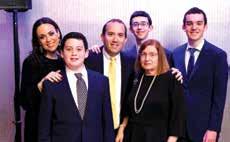
Dov and Rebecca Gordon are very much admired at Rambam for helping to create the next generation of Rambam men.
Both Yoni Markowitz and Yehuda Moskovits have maintained the friendships they made at Rambam despite geographical distance from their classmates. Both are still proud Rambam men.
All the honorees spoke glowingly about the school and noted that the students get personal attention because the school has always appreciated and highlights the interest and needs of the individual. Parents, grandparents, staff, alumni parents, and alumni all came together to celebrate and express their Ha-
karas Hatov to the Yeshiva.
In a moving display of solidarity, a tribute table was prominently featured at the entrance of the hall, dedicated to our alumni who are serving or have served in the IDF. Over 50 Rambam graduates have served, and each name was spotlighted. Yehoshua Konig, of the class of 2004, who lives in Israel and was recently released from IDF miluim, sent a special video expressing his hakarat hatov to Rambam for all that they have done to support him and his IDF unit during these challenging times.
All in all, it was an evening by the reciprocal appreciation of students and parents to the school and vice versa.
Students in the sixth grade at Mercaz Academy in Plainview have burnished their Torah-teaching skills along with their tech abilities in their cross-curricular weekly podcast on parshat hashavua.
The project was made possible by a technology microgrant from the Jewish Education Project. Mrs. Lynda Last, Director of Educational Technology, used the funds to create the first Mercaz Acad-
emy Media Lab in the form of a video recording studio, complete with a new iPad for recording and editing, a green screen, and a teleprompter. Rabbi Moshe Rubel, sixth grade Chumash teacher and Director of Programming, offered his students the opportunity to record their thoughts on the weekly Torah portion to be shared with parents and fellow students.
The biweekly podcast is completely created by these sixth graders who write
the script, deliver the material on camera with the aid of the teleprompter, and do the filming. When filming is completed, the students edit the video and insert the background, adjusting it with iMovie for appearance and timing it to their performance. As the year progressed, students worked together, deciding who would rotate roles for each production. Although Mrs. Last provides encouragement and instruction, the podcast is a sixth grade
production from start to finish. Experience has boosted their technological prowess, with increasingly sophisticated backgrounds and production values in each installment.
Mercaz Academy students love learning the new technology along with their Torah, and these sixth graders relish the opportunity to bring it all together in their parshat hashavua podcast.


While on the HALB Mission to Israel, some HALB parents had the opportunity to visit and bring letters to Mordechai, an IDF soldier who was seriously injured in Gaza. During their visit, Mordechai played his violin which once belonged to his great-uncle who lost his life defending Israel years ago. That hospital visit at Tel Hashomer was the start of a special connection between Mordechai and HALB. Mordechai was so moved by the letters he received from HALB students, once he was recovered enough, he decided to make the trip to America and visit.
On Monday, Mordechai came to HALB, starting the day with the lower school. He joined the morning program
Tens of students from 15 colleges in New York and New Jersey gathered at Touro’s Lander College for Women/The Anna Ruth and Mark Hasten School (LCW) last week for the College’s 7th annual all female Hackathon. Over the course of 12 hours, the students collaborated with teammates from various colleges in a competition to solve real-world problems faced by companies of all sizes by utilizing coding and creative programming skills. Teams of three to five students huddled together and considered unique solutions to a choice of three challenges provided by the Hackathon organizers.
“Take hold of the other women who are sitting here in this room today, because this year, and the next four years in this country, and the next 10 years in the world, our country, this city, and our communities will need a lot of smart help,” said keynote speaker Raquel Schreiber, who runs The Gearworks Group, a business and technology advisor for impact-driven technology. “By virtue of being in this room today, statistically, it’s you. I’m so grateful. And I’m so excited for what you’ll build. Crush it today.”
One of the challenges was to develop innovative solutions to mitigate or eliminate bus bunching, the phenomenon in urban public transportation where multiple buses on the same route “bunch” together instead of spreading out over time, which creates long wait times and uneven passenger distribution and overall efficiency. Another was for the stu-
with Mr. Altabe, spoke to the students, and led them in song as they sang Hatikvah, the Mi Sheberach and Acheinu. He then spoke with the Middle School and led them in song and gave them words of chizuk. Finally, he visited SKA seniors and shared his whole inspirational story. Mordechai’s biggest message to HALB students, and all of us, was the following: He may be physically fighting in Israel, but the students here are soldiers too –davening and doing anything they can to support Israel from far and with their tefillot and mitzvot. It was an incredibly moving and inspirational day for students, teachers and Mordechai.
Am Yisrael chai!

dents to create an AI-like software that could provide individualized recommendations for books, films, or music based on inferred tastes and preferences to enhance their leisure activities.
“Our goal today was to create a supportive environment for women to enhance their programming skills through hands-on experience, and for them to build confidence in contributing their unique perspectives in solving challenges,” said Chaya Moussia Adry, a junior majoring in finance and computer science, who was one of the organizers of this year’s competition. “The hackathon presents students in tech with valuable networking opportunities, as well as the chance to build a sense of camaraderie and mentorship among participants.”
“I am passionate about shaping a future where women thrive in STEM fields, knowing their contributions are both impactful and necessary,” said Sheila Reiff, a junior majoring in computer science who was also one of the event organizers. “But the Hackathon is also about developing teamwork, time management, and problem-solving abilities that will serve participants well in their future careers.”
The opportunities for networking were highlighted by the competition’s five judges, all professionals who have worked in the tech sector or in corporate technology departments, including a robotics startup, a FinTech startup, Bank of New York Mellon, L3Harris (a defense contractor and technology company), and Microsoft.
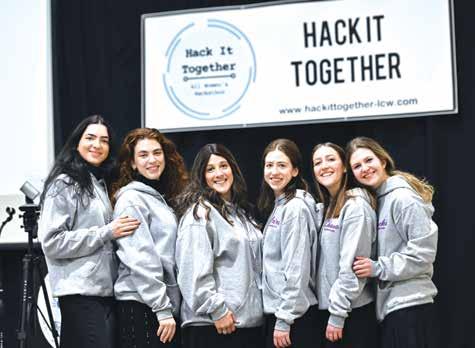
When all the challenges were completed, the respective teams made short presentations to the judges, who then asked the students how they had approached the problems, and their solutions. A team made up of students from Baruch College, Pratt Institute, and Farmingdale State College came in first place for the Bus Bunching challenge; another team of students from New York University and Farmingdale State College won for their music recommendation system solution that creates a buddy system based on similar music taste; and a team of students
from Lander College for Women and the Lander College of Arts & Sciences won the third challenge, developing innovative algorithms, strategies, and solutions for solving various two- and three-dimensional puzzles.
“This Hackathon offered a unique opportunity for women across universities to recognize the power they have by collaborating with others to solve problems and create new technology products,” said Dr. Marian Stoltz-Loike, dean of Touro’s Lander College for Women. “The Hackathon helps build confidence in our abilities to use technology to transform the future.”

The HALB Sports Club attended last week’s Rangers game and had a blast! 160 students, parents and
staff attended. Not only did they enjoy the game, but they also got a chance to go out onto the ice.

The fifth grade students in Mrs. Lowenstein’s ELA Enrichment class at Yeshiva of South Shore have focused on BookClub meetings this year to study several books. The two clubs work independent of each other reading different books. BookClubs are student run and evaluated. Assignments, leadership, and discussions are managed on a rotating basis. Each book completion has emphasized a different type of writing to follow up.
The current book, The Phantom Tollbooth, by Norton Juster, is the first book both clubs are reading concurrently. Known to be a zany book of much nonsense about worlds turned upside

Tech in Check at Yeshiva of South Shore, now three years strong, had a very exciting day this week! To reward and celebrate the boys (and families) that are committed to this way of life, a massive raffle ensued. The boys experience something unprecedented – to display to all just how important this is, the Yeshiva brought every single talmid from 1st to 5th grade together into the shul to participate in the event. Gift
cards, class ice cream parties and pizza parties, Slurpees and of course the MASSIVE candy gift baskets were all raffled off. It was an incredible chizuk for the boys already participating and a source of inspiration for boys to jump on the Tech in Check Train. Congratulations to all the winners and may your dedication be a source of nachas and bracha for your families and Klal Yisrael!
down and conventions totally reversed, The Phantom Tollbooth is great fun and evokes much laughter. Writing to accompany it is also funny; the students are writing a parody about school.
In fact, to break one convention, the students took their second drafting activity to the new school building’s Conference Room (with permission), which is reserved for important meetings. Their writing session was quite important, of course, and great work was accomplished in such a dignified setting, despite occasional peals of laughter. Note: Students were careful not to spin completely around in the executive chairs.




An “anagram” is a word (phrase or sentence) formed from another by rearranging its letters. For example, “angel” is an anagram of “glean.” In the following sentences, two numbers are given in each sentence that need to be replaced by words. Each word is an anagram of the other. The numbers represent how many letters are in the word (that is why the numbers are the same...aha, ding-dong). Ready, set, go:
1. We had driven over a (4) to find a restaurant that served key (4) pie.
2. Read further, and you’ll see that he (4) on the (4) of March.
3. I love fruits, especially (6) and sour (6)!
4. The raised (4) (4) listeners by making it possible for the crowd to see the speaker.
5. It is amazing how Joe (4) his (4) through his opponent’s guard to land a punch.
6. Her face became (4) when she thought that he was going to (4) from the balcony.
7. What a (4) life the gangster did (4).
8. He used a special (4) to break into the safe and make off with the (4).
9. He did not (6) vision in his right eye after the damage to his (6).
10. The (5) bit her when she leaned against the (5) tree.
After working for many years in the garment business, Bernie decides to retire. He tells his friends of his plans, and they ask him what he plans to do with his free time.
“Well,” he says, “I plan on joining the New York Athletic Club.”
“The New York Athletic Club? They’ll never let a Jew in there.”
“Just wait and see,” says Bernie.
So one day, after he retires, Bernie gets up in the morning and puts on a blue blazer with gold buttons. He buttons up a pinstriped shirt, dons a red tie, puts on khakis and tassel loafers, and heads out to the New York Athletic Club.

When he gets there, he is ushered into an ornate sitting room. The interviewer starts to ask Bernie some questions.
“Your name, sir?”
“It’s Bernard Stratenhaus, III,” Bernie answers.
“And your profession?”
“Well, I’m retired now, but I used to own a boutique advertising firm on Park Avenue in the City.”
The interviewer nods.
“Are you married?”
“Yes, my wife Mary is very active in the Junior League.”
“Do you have any children?”
“Yes,” Bernie responds, “we have two children –Chip and Bunny. They are both attending Harvard and Yale, respectively, and should be graduating with honors.”
“And your religion?” the interviewer asks.
“Oh, yes,” Bernie replies. “We’re goyim.”
U It doesn’t bother you to use an airport named for a man who died in an airplane crash. (Will Rogers World Airport in Oklahoma City is named for...you guessed it… Will Rogers, who died in a plane crash.)
U You have used the phrase “fixin’ to” during the last three days.
U Someone you know has used a football schedule to plan their wedding date.
U You’ve been excused from school because “the cows got out.”
U You can recall hot summers by the year they happened easier than you can remember your mother’s birthday.
U You have owned at least one belt buckle bigger than your fist.
U A bad traffic jam involves two cars staring each other down at a four-way stop, each determined to be the most polite and let the other go first.
U You aren’t surprised to find lunch, ammunition, and bait all in the same store.

U Your “place at the lake” has wheels under it.
U A Mercedes Benz is not a status symbol. A Ford F150 4x4 is.

U The toothbrush is a family heirloom handed down from one generation to the next.
U When the tornado siren goes off, you go into the yard to gather up the old kitchen sinks.
U The ironing board doubles as the buffet table at family gatherings.
U You crossed state lines on more than one occasion to get beer.
U You learned how to shoot a gun before you learned how to do multiplication and division.
U You have had this conversation: “You wanna Coke?” “Yeah.” “What kind?”
“Dr. Pepper.”
A man drank some spiked fruit punch at a party and then left later on. Other people at the party who drank the same punch died of food poisoning. How did the first man escape death?

punch while they were still frozen and so he was saved. When the other partiers drank the punch with the melted, poisoned ice cubes, they were poisoned.
Answer: The poison was frozen in the ice cubes in the punch, which gradually melted later on. The man drank the
 By Rabbi Berel Wein
By Rabbi Berel Wein
One of the main questions raised by the commentators to this week’s parsha is why the Torah again discusses the prohibitions of the Shabbos. The Torah had done so in the previous parshiot of Shemos, so one might question this seemingly unwarranted repetition. In their comments, I feel one of the ideas presented to be especially relevant to our world.
We do not find that at the time of Creation, the Torah sanctified any given place or location on the face of the earth. The entire idea of the uniqueness of the Land of Israel does not appear in the Torah until the time of our father Abraham. And there it appears as a promise of a homeland to Abraham’s descendants without any mention of holiness or sanctification.
Holiness only appears regarding


a place and location in the story of our father Jacob and his heavenly dream at Beit El. Already in the first section of the Bible, in the story of Creation itself, we read that the L-rd sanctified time. “Therefore, did the L-rd bless the seventh day and sanctify it.” Time is the holiest of all factors in human life. It is the one thing that, since Creation, has been blessed, sanctified, and made very special. It is no wonder that the holiness of the Shabbos is emphasized in the Torah.
The L-rd gave Israel detailed instructions how the Mishkan and its artifacts should be constructed and designed. Even though holiness of space, location and of actual structure is necessary for human service of G-d, it must be done solely under G-d’s conditions. There can be many designs to build a Golden Calf. To build a Tabernacle to G-d there can only be one ordained holy design and plan. Even when building a Mishkan according to G-d’s plan, the Jewish people
Shabbos never stopped accompanying the Jews wherever they lived and under whatever the circumstances.
In human behavior and thought, time is as important as wealth or location or the accomplishment of any human deeds. The Torah comes to warn us not to succumb to such a viewpoint or behavior pattern.
The holy Mishkan, according to most commentators, was ordered and built after Israel sinned in the desert by worshiping the Golden Calf. These commentators saw this Mishkan as an accommodation, so to speak, of Heaven to the human condition. People somehow require a tangible place of worship, a holiness of space and locality, something solid that can represent to them the invisible and eternal. The Mishkan, in a sense, came to replace the necessity for a Golden Calf created by human beings.
were instructed and inspired to remember that holiness of time is always greater than holiness of place and of structure.
Shabbos, which has accompanied us from the time of Creation, takes precedence over all else except for human life itself. The Mishkan and its succeeding Batei Mikdash were all temporary and subject to the events of time. Even the holy Land of Israel disappeared from Jewish history for millennia. But Shabbos never stopped accompanying the Jews wherever they lived and under whatever the circumstances. And this is why this lesson is drummed into us in the narrative of the Torah.
How pertinent this lesson is in our time and in our environment.
Shabbat shalom.

 By Rav Moshe Weinberger
By Rav Moshe Weinberger
Adapted for publication by Binyomin Wolf
We must understand how the events at the end of last week’s parsha, Ki Sisa, and the beginning of this week’s parsha connect to one another. After Moshe obtained forgiveness for the Jewish people from the sin of the Golden Calf, he descended from Har Sinai with rays of light shining from his face. The Jewish people were afraid to look at Moshe’s face, so he covered it with a mask (Shemos 34:29-35). Then, at the beginning of this week’s parsha (ibid. 35:1), Moshe gathered the entire Jewish people together. He commanded them about the mitzvah of Shabbos (ibid. 35:23) and finally, Moshe commanded them regarding the donations of gold, silver, and copper, and other materials to the Mishkan (ibid. 35:4 et seq.).
The Ohr Hachaim (on ibid. 35:1) offers a straightforward explanation of the connection between the end of last week’s parsha and the beginning of this week’s parsha. The Jewish people distanced themselves from Moshe because of his great holiness which was apparent because of the rays of light shining from his face. Moshe therefore had to gather them back to him at the beginning of Vayakhel. With the Ohr Hachaim’s foundation, we can now begin to understand why these events were followed by the mitzvos of Shabbos and the donations to the Mishkan.
The seforim hakedoshim explain the importance of teshuva on erev Shabbos. It is known that erev Shabbos in the home of the Rebbe Reb Elimelech of Lizhensk, zy”a, was like erev Yom Kippur. It has been related by a woman who worked in the kitchen of the Rebbe’s home that the Rebbe came into the kitchen every erev Shabbos to beg for forgiveness for

anything he may have done to hurt or offend them. She related that the spirit of teshuva overtook the whole home and everyone cried and begged forgiveness from each other. Whenever we approach someone or something whose holiness we appreciate, we are overcome with feelings of unworthiness and, consequently, teshuva.
This pattern of approaching holiness, being filled with regret, and then doing teshuva is built into the nature of Creation. The word for embarrassment, boshes, has the same letters as the word for repentance, teshuva – tashuv – because when one is embarrassed about his past, he is moved to do teshuva. And once he has done teshuva, he then merits to reach the holiness he was initially too embarrassed to approach. That holiness is personified by Shabbos, also spelled with those same letters. When a person looks back at his week, he thinks, “Is this how a Jew spends his week?” He is embarrassed and so he does teshuva on
erev Shabbos, and that embarrassment/ teshuva process is precisely why he merits the holiness of Shabbos.
According to this, we can understand why Moshe gathered the people to him. They saw the holiness on his face and looked at themselves, disgusted that they sunk to the level of the sin of the Golden Calf. Moshe therefore drew them close as if to tell them, “I understand that you are embarrassed to look at me because of what you have done. But you know that it is precisely your feeling of unworthiness that makes you worthy to come closer.” Approaching a tzaddik has the same effect as approaching Shabbos. My father told us that he remembers lining up with others to see the Ahavas Yisroel of Vizhnitz, zy”a. He recalled how the anticipation of seeing such a tzaddik caused everyone in line to cry and wail, literally like erev Yom Kippur. The way to merit contact with holiness is contemplating how distant we are from that holiness. Ironically, we come closer
by focusing on how far away we are. We see in the parsha how we merit to approach Shabbos and the tzaddik through the embarrassment/teshuva process. But how do we see this played out in the way we merited the Mishkan, the medium through which the Divine Presence rested on earth?
The Ramban comments on the difference between how the Torah describes the men’s versus the women’s donations to the Mishkan. With regard to the men, the pasuk (Shmos 35:22) says, “Every man who waved a waving of gold to Hashem.” But with respect to the women’s donations, the pasuk merely says (ibid. 35:24) that they “brought” their donations. We can understand the difference between these descriptions based on a teaching of the Rebbe Reb Simcha Bunim of Peshischa, zy”a. He explains the phrase “who chooses musical songs” from Yishtabach a homiletical level. The word for musical, b’shirei, is related to the word for “left over,” sherayim. According to the Rebbe Reb Bunim, Hashem gets great nachas from – He “chooses” – that which is left over after our songs, after our davening. What does this mean?
After a person finishes davening, learning, or doing a mitzvah, if he is sensitive, he has a leftover feeling that he did not do everything that he could have done. When someone finishes davening, he has a lingering feeling, “Did I daven the way I was supposed to? How much was I thinking about Hashem and the words I was saying just now? How much was I thinking about everything else under the sun?” And when a person finishes learning daf yomi for the day, he may feel, “Did I actually learn anything? How would I feel if someone tested me on the simple meaning of the Gemara and Rashi right now?” And after Shabbos, when a
person makes havdalah, does he feel, “Did I immerse myself in the holiness of Shabbos? How much of the time did I spend thinking about weekday matters instead of learning, davening, singing, and spending more time with my family?” The Rebbe Reb Bunim teaches us that these leftover feelings are extremely precious to Hashem.
The Chidushei Harim, zy”a, expands on this teaching of the Rebbe Reb Bunim based on the pasuk (ibid. 36:7) regarding the donations to the Mishkan: “the work was sufficient for them…and to leave over.” After the people finished donating to the Mishkan, there was something left over. They remained with the feeling, “I wish I gave more! I wish I gave with a greater feeling of love. I’m so embarrassed that I didn’t give with loftier intentions.” Hashem gets great pleasure, He “chooses” those feelings when His children give with a desire to do more. That leftover feeling of broken-heartedness after a mitzvah gives Hashem so much nachas.
We can now understand the difference between the Torah’s description of how the men gave to the Mishkan versus how the women gave. The pasuk (ibid. 35:22) says that “the men came to the women.” Rashi explains that this means the men came with the women. But the Chidushei Harim offers an amazing explanation. He says that the women never committed the sin of the Golden Calf, so all of their gold was still available to donate to the Mishkan. The men, however, had already donated their gold to the appeal held for the building of the Golden Calf. They had nothing left to give to the building of the Mishkan! Humiliated, they had to approach their wives and ask, “Do you think I could borrow a ring or necklace?”
The men brought whatever little gold they were able to borrow from their wives and daughters and brought it to Moshe with such embarrassment and broken-heartedness. The Torah simply says that the women “brought” their donations. The women brought their donations in a normal way because they had nothing to be ashamed of. The embarrassment and feeling of unworthiness with which the men brought their donations, however, caused a great stir in Heaven. That is why, with regard to the men, the pasuk describes more of a tumult when “every man who waved a waving of gold to Hashem.” Through their embarrassment/teshuva, they achieved a high level of holiness and merited to draw the Divine Presence
down into the Mishkan.
The desire to give and do more sometimes means even more than one’s actual accomplishments because it comes with that leftover feeling of embarrassment and teshuva that makes a person worthy to touch holiness.
The power of desire even when one does not have the ability to attain one’s goals is illustrated beautifully by a wellknown story about Rav Yitzchak Vorker, zy”a. The Rebbe had two chassidim who were neighbors: Reb Moshe, who had some money, though he was not wealthy, and Reb Yankel, who was extremely poor. Reb Yankel borrowed money from Reb Moshe from time to time when he was in need. Sometimes, he paid him back, and sometimes, he was not able to. When he did pay him back, it was sometimes sooner and sometimes later, though it was usually later. Reb Yankel approached Reb Moshe one day with a special request. Reb Yankel needed one thousand rubles to marry off his daughter. This was an exorbitant sum for Reb Moshe, but Reb Yankel promised him that he desperately needed the money for his daughter and that he would do whatever he could to pay it back.
Reb Moshe lent the money though it was such a sizable sum for him that he truly needed to be repaid. The wedding passed, and weeks and months went by. As often happens when one person owes a debt to another that he cannot repay, Reb Yankel began davening at a different shul from Reb Moshe because he could not bear to look at him in the face without the money to repay him. Desperate to get his much-needed funds back, Reb Moshe visited Reb Yankel, but every time, his wife told Reb Moshe that Reb Yankel was “not home.”
One day, Reb Moshe saw the Rebbe, Rav Yitzchak Vorker, paying Reb Yankel a visit at Reb Yankel’s own home! Seeing his opportunity to ask for the Rebbe’s assistance, Reb Moshe walked over to Reb Yankel’s house and knocked on the door. The Rebbe himself answered the door, asking how he could help Reb Moshe. Somewhat embarrassed, Reb Moshe said, “Rebbe, I feel bad bringing this up, but I saw an opportunity for a private moment with just the Rebbe and Reb Yankel. You see, Reb Yankel borrowed a thousand rubles from me to make a wedding for his daughter. I am not a rich man by any means, and I very much need these funds back. Is there anything the Rebbe can do to help?”
The Rebbe turned to Reb Yankel and
asked if Reb Moshe’s words were true. Reb Yankel confirmed everything Reb Moshe said and admitted sadly that he wanted more than anything to pay his friend back but that he simply had no money to repay the loan. The Rebbe then told Reb Yankel to scour the house and search for every kopek with which to pay back Reb Moshe. Reb Yankel began searching every corner of his little house like he was searching for chometz before Pesach. Eventually, he brought the Rebbe everything he was able to collect – fifty-seven kopeks, not even a single ruble. Yet the Rebbe exclaimed, “Reb Yankel, amazing! This is even more than I expected. Let us sit down together to count out the money so you can repay Reb Moshe.”
When they were seated at the table, the Rebbe began counting the kopeks one by one: “One, two, three, four…” He continued counting, “fifty-five, fifty-six, fifty-seven…” But instead of stopping there, he continued counting the same coins as if there were more there: “fifty-eight, fifty-nine…” He continued counting: “ninety-eight, ninety-nine, one ruble!” But the Rebbe did not stop there. He continued counting the same rubles for a couple of hours until finally he
said, “nine hundred ninety-nine rubles and ninety-nine kopeks, one thousand rubles!” He then turned to Reb Moshe, handed him the fifty-seven kopeks, and said, “Here you go Reb Moshe. Full repayment of the one thousand rubles from Reb Yankel and even a bit extra…”
It goes without saying that Reb Moshe soon built a great fortune with Reb Yankel’s fifty-seven kopeks. Just like Reb Yitzchak Vorker taught Reb Moshe, Reb Yankel’s desire to repay Reb Moshe produced much more “profit” than the actual money Reb Yankel could repay.
We, too, should not dismiss our davening, Torah, or mitzvos as inadequate. Rather, we must embrace our embarrassment at not being able to do more and realize that it is precisely that feeling that makes us worthy to approach Hashem. May that feeling of embarrassment and the teshuva we do because of it make us worthy to draw down Hashem’s ultimate dwelling place, the Beis Hamikdash, may it be rebuilt soon in our days.
Rav Moshe Weinberger, shlita, is the founding Morah d’Asrah of Congregation Aish Kodesh in Woodmere, NY, and serves as leader of the new mechina Emek HaMelech.

As the days become longer, the time for havdala comes later and later. This is a problem for young children. The Mishna Berura says that once a child understands what Shabbos is, he should be trained to hear havdala. What should a parent do if the time for havdala is 9:30 p.m. or later? It is understandable to let the child stay up a little later. However, what if havdala is way past his bedtime?
Piskei Teshuvos suggests that a child should employ the leniency of reaching havdala after plag hamincha. If the time for havdala is 9:30 p.m., plag hamincha would be around 7:00 p.m. This is a creative solution but controversial. The Shulchan Aruch (293:3) writes that in extenuating circumstances, an adult can recite havdala after plag hamincha. He will not be permitted to perform any forbidden labor until nightfall. Therefore, he cannot recite the blessing on the havdala candle. However, the Mishna Berura cautions against using this leniency. First, he says it appears bizarre to recite havdala while it is still daytime. Moreover, since one recited havdala, one may forget that it is still Shabbos until nightfall and perform melacha. If the Mishna Berura cautioned against using this leniency for adults, one can argue that he would certainly be against impressionable children using this leniency. They need to be trained that Shabbos is over at nightfall and not at plag hamincha.
Another suggestion is to have the children get a regular night’s sleep and let them recite havdala on Sunday. The Shulchan Aruch rules that if someone did not recite havdala on Motzei Shabbos, he recites havdala on Sunday morning. Indeed, the Shevet HaLevi rules that an elderly or infirm individual who cannot stay up should rather recite havdala on Sunday morning than recite havdala after plag hamincha on Shabbos. Therefore, this leniency can be

employed for children. They can recite havdala on Sunday morning. However, they would not recite the blessing on spices or the candle. They would simply recite “HaGefen” and the last bracha of havdala, “Hamavdil.” Indeed, it is re -
Therefore, if a child missed Shacharis, he would not be obligated to recite a make-up Shemoneh Esrei after Mincha. If a child missed kiddush Friday night, he would not be obligated to recite it Shabbos morning. If a child forgot Ret-
There is no mitzvah of chinuch in causing physical pain.
ported that this is what Rav Elyashiv, zt”l, advised parents to do.
Still, the idea of obligating children to recite havdala on Sunday is not without controversy. The Shu”t B’tzel Hachochma writes that based on a Gemara in Bava Metzia (5a), children should not be obligated in make-up mitzvos. He reasons that Chazal instituted the mitzvah of chinuch for children. They did not make a secondary obligation to make up the mitzvos they missed.
zei in bentching on Shabbos, he would not have to repeat it. If a child missed havdala on motzei Shabbos, he would not be obligated to recite havdala on Sunday morning. This is in contradistinction to adults, who are obligated in all these compensatory mitzvos. One may suggest that we wake the sleeping child up for havdala. However, this goes against the mitzvah of chinuch. For chinuch, we do not make children endure physical discomfort.
We allow children to eat before davening and kiddush; chinuch does not require that they go hungry. If a child would be physically uncomfortable with wearing inappropriate footwear on Yom Kippur, we allow them to wear regular shoes. (Rav Elyashiv writes that nowadays there are plenty of footwear options available, and this leniency would not seem to be applicable.) Rav Shlomo Zalman, zt”l, writes that there is no custom for children to fast on fast days before their bar mitzvah. There is no mitzvah of chinuch in causing physical pain. However, withholding candy and cake on fast days is appropriate because that does not cause physical pain. (Still, because of the chumra of Yom Kippur, there is a concept of fasting for a few hours on that day.) Therefore, depriving children of sleep for the sake of a mitzvah is inappropriate.
Rav Chaim Kanievsky, zt”l, was asked, “What should be done with chinuch age children regarding hearing havdala on a cup of wine where they go to sleep before the end of Shabbps? Should they recite it before sunset or during twilight? Should they recite havdala on Sunday? Should they do nothing?” He responded in his usual brief fashion: “peturim m’havdala – they are exempt from havdala.” (Halichos Chaim 1:292)”
Rabbi Simcha Bunim Cohen likewise writes that he spoke to many poskim, and the widespread custom is that children do not recite havdala on Sunday. They will simply miss havdala when it is late.
Rabbi Avrohom Sebrow is a rebbe at Yeshiva Ateres Shimon in Far Rockaway. In addition, Rabbi Sebrow leads a daf yomi chaburah at Eitz Chayim of Dogwood Park in West Hempstead, NY. He can be contacted at ASebrow@gmail.com.
Please note: The halachos mentioned in this column are for discussion purposes. Please check with your own rav or posek as to how to proceed exactly on a personal level.
There is a famous story cited in the book, “HaGaon HaChasid MiVilna,” originally appearing on Yashar’s biography of the Chofetz Chaim (p. 253-254).
It was late on a Friday afternoon in Vilna. Rav Chaim, the tailor of Vilna, was in a bind. It seems a question had arisen on the kashrus of the chicken being cooked in his kitchen. He quickly dispatched one of his children to pose the question to the Vilna Gaon.
The hour was late. Normally, of course, the Vilna Gaon did not serve in the capacity of a rav. But here, on account of the lateness of the hour, the Vilna Gaon made an exception. Upon examining the chicken in question, the Vilna Gaon could only come up with one answer to the question posed: The chicken, unfortunately, was treif.
Meanwhile, unbeknownst to our tailor, his wife Malka had also not known the status of the chicken. She dispatched another one of her sons to see the Rav of Vilna, the great Rabbi Shmuel. Rabbi Shmuel, the official rav of Vilna, ruled leniently. The chicken, in his opinion, was permitted.
Both children rushed into the tailor’s home excitedly to report the responses. Not knowing what to do, Rav Chaim quickly ran to Rabbi Shmuel’s house and explained to him that the Vilna Gaon had forbidden the chicken. Rav Shmuel, the Morah D’Asrah of Vilna, remained firm in his ruling permitting the chicken. He instructed the tailor to prepare the chicken and said that he and the Vilna Gaon will come that Friday evening and taste it.
Rav Shmuel went to the home of the Vilna Gaon and said, “My Master and rabbi, I am nothing – like dust under your feet. However, I was accepted as the Mora D’Asra here in Vilna by its residents in regard to halachic rulings.

Since I ruled in this matter and I did so in the proper manner with the proper research, the halacha is in accordance with me. I ask of you to come with me to the house of the tailor, and we shall both partake of the chicken so that the residents of Vilna will understand the full authority of the rav and that there will be no one who argues or criticizes.”
– that says a lot. How many people in our times would be willing to do that?
The reader might object that this is merely a story and that we cannot rule based on a story.
We do find, however, that Rav Hamnunah placed a ban upon a student who ruled like Rav Shimon in regard to muktzah in one particular city. The Gemara
The rabbi of a shul or community has a siyata dishmaya in his rulings.
The Vilna Gaon agreed. They both entered Reb Chaim the tailor’s home and sat to eat. All of a sudden, before they had a chance to taste of the chicken, a piece of chailev (unkosher fat) fell from the candle above.
There are a number of fascinating insights from this incident. First and foremost, we see the authority of a rav in his community or shul. If the Vilna Gaon was willing to sit and eat something that he had deemed to be unkosher
(Shabbos 19b) objects that the halacha is actually like Rav Shimon in this case! The Gemara answers that the city under discussion was one where Rav was the outstanding Torah luminary. Rav did not rule in accordance with Rav Shimon in that case. Placing someone under the ban is a very serious matter. Clearly, undermining the authority of a rabbi in his community or shul is equally a very serious matter.
The halacha is further quantified in the ruling of the Ramah in Yore Deah
(245:22). He discusses when and where it would be permissible to conduct a chuppah ceremony in the domain of another rav. He concludes: “However, one should not rule in forbidden and permitted matters or to lecture in a manner that shows authority in the city of his friend.”
It would seem quite clear that the Ramah’s ruling not only applies to a community, but also to the modern-day application of community and shul rabbis.
The Rivash rules on a similar case (Volume I #271) and states that no other rabbi may rule outside his domain against the opinion of the local rav. What is fascinating is that the Rivash’s response deals with a spiritual issue and not a halachic matter. Nonetheless, the Rivash is quite clear that even in outside matters, the authority of the rav should not be undermined. The Rivah’s ruling is part of normative halacha. The Chasam Sofer (Choshain Mishpat #41) quotes the Rivash authoritatively.
The issue is also seen from the words of Rashi in his explanation to Chulin 53b. He writes, “It is unseemly [the Hebrew is lav orach arah] to permit something in a place where the other rav forbade it.” There are numerous other passages in the Talmud where this issue is brought to light. For those who wish to research further, see Shabbos 130a, Eiruvin 94a, Psachim 30a and Yevamos 14a.
The bottom line of all this? The rabbi of a shul or community has a siyata dishmaya in his rulings. It is unseemly and against the Torah to undermine his opinion. This is true, even if one happens to have the erudition of the Vilna Gaon. Certainly, it is true in our times, too. As mentioned earlier, however, please check with your own rav or posek regarding this issue.
This article should be viewed as a halachic discussion and not practical advice. The author can be reached at yairhoffman2@gmail.com.

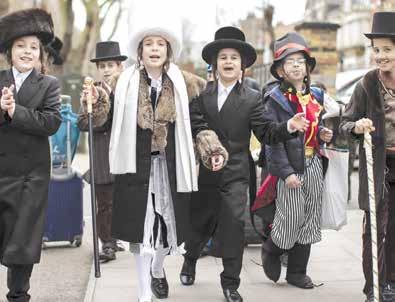
After the Megillah is read, it is customary to recite Shoshanas Yaakov, which is the final stanza of the pizmon Asher Haini. This paragraph poetically describes many of the events within the Purim narrative. Each word of this pizmon was written with great precision and exactitude, and we have license to study the choice of each word that is employed. The stanza begins: “Shoshanas Yaakov tzahalah v’sameicha b’rosam yachad techeiles Mordechai, The rose of Yaakov was jubilant and glad when they jointly saw the techeiles of Mordechai .”
This line refers to Mordechai leaving the palace clothed in royal garments, as the pasuk states (Esther 8:15): Mordechai was wearing techeiles, turquoise wool, chur, white wool , ateres zahav gedolah, a large gold crown , tachrich butz, a mantle of fine linen , and argaman, purple wool . We should ask why, out of these five royal garments, the techeiles is singled out in the pizmon. Furthermore, what was it specifically about the techeiles that made Klal Yisrael rejoice?
Rav David Cohen asks, why is emphasis placed on the fact that Klal Yisrael were together when they saw Mordechai? Why does the paytan go out of his way to note that this sight was beheld in a manner of “b’rosam yachad ”? Had everyone observed him wearing the techeiles separately, would that not have stimulated the same simcha? Why did they all need to be gathered as one?
The reading of Parshas Shekalim marks the beginning of the month of Adar and heralds the upcoming
yom tov of Purim. In Maseches Megillah, the reason behind this practice is revealed.
When the month of Nissan would begin, the korbanos would have to be brought from the newly donated shekalim. The daily korban tamid, which was offered on behalf of all of Klal Yisrael, was required to be purchased with communal funds. The Torah employs the instruction “tishmiru,” indicating that each and every Jew has to be a partner in the korban tamid. The only way to fulfill this requirement is for each member of Klal Yisrael to contribute toward its purchase.
The korbanos in Nissan were to be purchased on behalf of and in partnership with every member of Klal Yisrael. To ensure that there were adequate funds donated prior to the onset of the month, the beis din would begin collecting the machatzis hashekel, a half-shekel, in Adar. Every adult member of the nation contributed a machatzis hashekel to the Beis HaMikdash. The korbanos tzibbur, communal offerings, were purchased with these funds. Thus, through this national collection, each member of Klal Yisrael had a share in the communal korbanos
As it was necessary for each member of Klal Yisrael to have a chelek, portion, in each communal offering, every adult male gave money to augment the funds for purchasing korbanos tzibbur
The Alshich HaKadosh wonders why the sum of money that each male adult had to donate was a machatzis hashekel. Whatever coin would be selected, they ought to have required the entire coin be donated to the Mikdash. Why was it specifically legislated that
everyone should give only a half-shekel?
In Maseches Megillah, we find a connection between Purim and the shekel, which provides an additional explanation as to why we read this parsha before Purim.
When Haman presented his scheme to Achashveirosh, he declared: “If it please the king, let it be recorded that they be destroyed; and I will pay ten thousand silver talents into the hands of those who perform the duties, for deposit in the king’s treasuries” (Esther 3:9). The Gemara quotes Reish Lakish, who explains that Hashem foresaw Haman offering money in the form of silver shekalim for permission to kill the Jews in Achashveirosh’s kingdom.
The mitzvah of donating shekalim to the Beis HaMikdash was given to Klal Yisrael in order that there would be a sanctified use of the shekel that would preempt Haman’s offer. The zechus of the shekalim that the Jews donated to the korban-fund saved them from the shekalim offered by Haman. At the very beginning of the month in which Haman willingly offered a large sum of money for the right to kill the Jews, we proclaim the commencement of the collection: “B’echad b’Adar mashmi’in al ha’shekalim.”
Tosafos in Megillah offers an amazing allusion to this teaching. Haman offered ten thousand talents of silver, which is the exact amount of silver that would be contained in six hundred thousand machatzis hashekel coins, the number of coins needed for each adult male between twenty and sixty years of age who

were redeemed from Egypt.
We begin to donate shekalim to the Mikdash on the first of Adar so that our donations precede Haman’s offer and provide a zechus to overcome his gezeirah. Nowadays, we read Parshas Shekalim before Purim as a zecher for that contribution.
We will explore why our monetary donation toward korbanos was able to provide the necessary zechus in order to triumph over Haman.
In the sefer Maasei Rokeach, Rav Eliezer of Amsterdam poses the following question: The Mishnayos of Maseches Shekalim discuss the halachos of the machatzis hashekel that is collected annually to provide funding for the Beis HaMikdash.
The mitzvah is to give a machatzis hashekel, not a complete shekel. Why, then, is the masechta named Shekalim? “Maseches Machatzis HaShekel” would be a more accurate description and therefore a more appropriate choice. Throughout the entire masechta, why does Rebbi constantly refer to the mitzvah as shekalim? This seems misleading, since the mitzvah was performed with a half-shekel, not a complete one. It is, in fact, prohibited to donate a complete shekel, so why does the masechta never mention the actual coin that was obligated to be given? Why is the masechta titled with the coin that may not be given?
At the end of Parshas B’Shalach , we read, “For the hand is on the Throne, keis, of G-d; Hashem maintains a war against Amalek, from generation to generation” (Shemos 17:16). Rashi points out that the word “kisei ” in this pasuk is missing the aleph, and the Name of Hashem is abbreviated; in place of YudKei-Vav-Kei, it has been shortened to Yud Kei. Rashi explains that Hashem swore that as long as Amalek continues to exist, His Name and Throne remain incomplete.
The Ben Ish Chai writes that Haman realized that the gematria of the two words as written — keis and Yud Kei — is ninety-five, the same as his name, Haman. He took this as a sign that he was capable of fighting against Hashem and Klal Yisrael, and he believed that his campaign would be successful.
The sefer Bris Kehunas Olam points out that adding the phrase “milchama l’Hashem” to keis and Yud Kei arrives at a total gematria of 274 (Hashem spelled out as Yud-Kei-Vav-Kei, with a value of 26). This is the same as the gematria of Mordechai, who waged war to restore Hashem’s honor against Amalek.
Thus, Haman, as a descendent of Amalek, caused a diminution in Hashem’s Name. Where do we see that this is true? Where in Megillas Esther, or even in Maseches Megillah , do we find Haman doing anything to abbreviate the Name of Hashem? Where do we find that he performed any act that rendered Hashem’s Throne incomplete?
Nowhere do we encounter anything that Haman did to fracture Hashem’s Name and reduce it to just the first two letters. We never find him chiseling away (literally or figuratively) at Hashem’s Throne and disposing of
any part of the Kisei HaKavod. We likewise do not find any mention in the Torah of Amalek doing anything of this nature. What, then, is meant by the pasuk?
Achdus is one of the most fundamental principles in Judaism. It is of such paramount importance to the Ribbono Shel Olam that its absence prompted the destruction of the Second Beis HaMikdash. However, as important as it is, it is a concept that is often misunderstood.
Why is it so important to Hashem that we all get along? Why can’t I do mitzvos in my home and you in yours? Let every Jew observe all the mitzvos on his own and avoid violating any aveiros. Why is it necessary that we have a sense of unity and friendship?
Of course, Hashem loathes bickering and discord. But why would it not be sufficient for each of us to peacefully and amicably go our separate ways and live our individual lives? Why do we actively have to like each other?

ON
KlA
Y ISRAel IS ReDeeMeD AND RecOGNIzeD cAN HASHeM’S HONOR be PROPeR lY ex A lTeD AND celebRATeD.
We will demonstrate that Jewish unity, achdus , is much more than a nebulous warm feeling that comes from being together with others. There is something about achdus that is critical to the very essence of what it means to be a member of the Am Hashem. This attribute is an essential component of the makeup of the Jewish people.
The Mesillas Yesharim writes that it is impossible for Hashem’s honor to be amplified except through the redemption of the Jewish people and through their honor. Only when Klal Yisrael is redeemed and recognized can Hashem’s honor be properly exalted and celebrated. The honor of the Jewish people and the kavod of Hashem are dependent on one another. G-d’s kavod is, kavayachol, reliant on ours, and vice versa.
The Jewish people are Hashem’s ambassadors, representing and reflecting His Name throughout the world. It is our duty to be the lens through which the rest of the world views Hashem. When the world looks at our nation, we are the prism through which they are looking at Hashem.
Whenever Klal Yisrael is in a low, downtrodden state, Hashem’s Honor is similarly lowered. When the Jews are worthy of kavod and respect, Hashem is also elevated to a position of honor.
This concept is manifest in many places in our tefillos. For example, three times a day we recite: “Hashem and His Name are holy, and therefore the Jewish people are holy as well.” We reflect the identity of G-d.
One of the most important concepts of the Torah is Achdus Hashem. There is only one G-d. This is articulated in Shema Yisrael, one of the first prayers a child is taught to say; it is often expressed in the final words of someone who is about to leave this world.
As Hashem’s ambassadors to the world, then, we must embody and reflect this idea, or we will not be able to portray Hashem’s Oneness to the world. Hashem’s being One, being Echad, is promulgated to the world when we display unity through peace, harmony, and friendship.
When the Jewish people are Am Echad, one cohesive nation, then the reality of Hashem being Echad is reflected.
We clearly state this idea in the Shemoneh Esrei of Mincha on Shabbos: “Atah Echad, v’shimcha Echad, u’mi k’amcha Yisroel goy echad b’aretz.” This sentence begins by mentioning Hashem being One and His Name being One, and then concludes that the same is true of the Jews — they, too, are one unified nation. What is the connection between Hashem’s Oneness and that of the Jewish people?
Clearly, since Hashem is One, so, too, are His ambassadors to the world. They reflect Hashem’s singularity through their unity and cohesiveness. Klal Yisrael’s achdus is therefore an integral component of the praise that is offered to the Ribbono Shel Olam. When the Jews are at peace with one another, that proclaims to the world that Hashem is One.
When the Jews do not get along, when there is discord among them, Hashem is perceived as fragmented as well.
This gives new meaning to what we declare, in the Pesach Haggadah, in response to the challenge of the son who is labeled a rasha.
When the second son challenges the rituals of the Pesach Seder, we turn to one another and bemoan the fact that this unfortunate son is undermining the entirety of Judaism. By not participating together with everyone else, he is a kofer, a heretic! This is quite an extreme criticism. He is not questioning the existence of G-d or denying His Torah; why is he considered a heretic?
By the rasha excluding himself from the rest of the Klal, he is not only publicly displaying his lack of unity with the Jewish people, he is demonstrating that the term echad may not be applicable to Hashem Himself either. His separation from the Jewish community causes fragmentation that then impacts the Oneness of Hashem as well.
The Ramchal writes that every Jew needs to know and recognize the fact that Hashem is One. Hashem’s illumination is strengthened only through the medium of another entity that coalesces into a single co -
hesive unit. Even though each member of Klal Yisrael has a distinct identity and personality, the Jews are still considered goy echad, a single nation. Because they, too, are one, they are worthy that Hashem’s Oneness should be strengthened through them.
The only way Klal Yisrael can promulgate the Oneness of Hashem throughout the world is by having achdus. Jewish cohesiveness is not meant just for the betterment of our society, but much more importantly, it conveys Hashem’s identity to the world. Jewish achdus proclaims to the entire world that Hashem Echad!
The converse is also true. If there is discord and dispari ty among the Jews, then the message of Hashem’s be ing One is lost, and, chas v’shalom, a different message is conveyed. If there are multiple ambassadors, there must be multiple kings. This alternative message is heresy!
This is the fundamental nature of achdus among Klal Yisrael.
In a similar vein, the Vilna Gaon revolutionizes the meaning of the pasuk Shema Yisrael It does not merely mean “Listen, Israel.” We are not telling people to “Listen up! There is only one G-d!”
er people’s and they do not observe the king’s laws; therefore it is not befitting the king to tolerate them” (Esther 3:8).
Rav Shlomo Alkabetz writes that Haman’s key point to Achashveirosh was that Klal Yisrael is “me’fuzar u’me’forad, scattered and dispersed .” He claimed that there is no achdus among the Jews, that they are a people of schism and discord. Haman asserted that he would be able to overcome the Jews because they have no sense of community and cohesiveness. Haman knew that achdus and unity among Klal Yisrael reflects the Oneness of Hashem. He understood that achwould protect the Jews from his efforts to kill them.

When Shaul HaMelech wanted to muster the troops and galvanize them to fight against Amalek, the pasuk states, “Vayishma Shaul es ha’am, Shaul had all the people summoned” (I Shmuel 15:4). Shaul was gathering Klal Yisrael, urging them to unite and wage war against Amalek, and the word used to express this idea is “vayishma.”
When we recite Shema Yisroel, in truth we are saying that we are gathering and uniting with all the other Jews of the world. Then, because Shema Yisroel, because Klal Yisrael has gathered as one, what follows is the reflection of that: Hashem Elokeinu, Hashem Echad. Hashem is One!
Shema Yisrael is not merely a declaration regarding Hashem’s singularity. Actions speak louder than words, and reciting Shema i s an active demonstration of the achdus of Klal Yisrael. When we are together as one, the obvious message is that Hashem is One as well.
With this incredible idea, we can now answer the questions we posed earlier.
Where in the Megillah do we see Haman chiseling away at the Name of Hashem? Here is what we find. When he came to Achashveirosh to state his case for ridding the world of the Jews, he stated:
“ There is a certain people scattered abroad and dispersed among the people in all the provinces of your realm. Their laws are different from every oth-
entity. Regardless of any differences that may exist between individuals or communities, all Jews need to identify as parts of one whole. Klal Yisrael needs to be goy echad b’aretz, which will, in turn, reflect Hashem as atah echad v’shimcha echad
There is one G-d, one Torah, and one nation, therefore Hashem will protect his people. However, if there is discord and machlokes among Klal Yisrael, they can no longer claim the status of being am echad, and they will no longer be granted the protection of Hashem and the Torah.
Haman was causing a diminution in Hashem’s Name by fragmenting the Jews into many factions and separate components. Breaking apart the Jewish people is tantamount to breaking apart the Name of G-d as well. By establishing that the Jewish people are not a goy echad b’aretz, Hashem would no longer be viewed as “atah echad v’shimcha echad.” His Name would no longer be regarded as One.
This is how Haman followed in his ancestor’s footsteps and rendered Hashem’s Name incomplete.
The Kli Yakar points out that Amalek had taken the same approach when he attacked Klal Yisrael in Refidim. The letters in the name Refidim are the same as in the word “peridim,” separate and disparate. The Torah is alluding to the fact that when Amalek attacks Klal Yisrael, it is always when they are in a state of peridim, when they do not conduct themselves as a single unified entity.
Rav Yonasan Eibeschutz writes this same idea, adding that when Klal Yisrael are unified, no outside entity can dominate us. Haman recognized this reality and tried to capitalize on what he thought was a state of conflict and discord.
Rav Yonasan Eibeschutz and the Shelah HaKadosh write that Esther recognized that there was only one solution to counter Haman’s efforts. She therefore instructed Mordechai, “Go, assemble all the Jews” (Esther 4:16). There was no need to do anything more than to simply gather them together in an open and public display of achdus
The solution to triumph over Haman is to come together as a unified people. We need to act as one body, as a single entity. We can dress differently, speak differently, look different, and have different customs, but we must consider ourselves as members of one
The Vilna Gaon makes two incredible observations in the Megillah The pasuk states, “ The rest of the Jews that were in the king’s province assembled and defended themselves” (Esther 9:16). “Nikhalu,” they assembled , is followed by “v’amod,” literally meaning “and he stood .” Why is this second word in the singular? The appropriate term should be “v’amdu,” and they stood . Why, asks Vilna Gaon, does the pasuk uses the word v’amod ?
We find a similar use of the singular verb a few pesukim later. “V’kibeil ha’Yehudim, The Jews undertook” (ibid. 9:23). Here, too, it seems that the plural would have been more correct. The pasuk ought to read “v’kiblu ha’Yehudim” and not “v’kibeil.”
The Gra comments that there is a message contained in this seemingly odd choice of words. V’amod is teaching us that Klal Yisrael joined together b’achdus gemurah, in total harmony and complete unity. V’kibeil is employed in place of v’kiblu because all of Klal Yisrael were acting in unison.
The Jews were combatting Haman’s claim; the Megillah confirms here that they were, in fact, acting with achdus . They were the worthy ambassadors of Hashem, and as such, their state of unity indeed reflects the identity of Hashem. They took Esther’s message , “Go, assemble all the Jews” to heart and acted accordingly.
The Maharal wonders why there is mitzvah of mishloach manos on Purim. Of all the festivals we celebrate, why is the mitzvah of mishloach manos mandated only on Purim?
The Maharal explains that the mitzvah of mishloach manos is a direct attack against Haman, against Amalek. Their self-proclaimed raison d’être is to fragment the Name of Hashem.
Klal Yisrael declare twice a day that Hashem is One and His Name is One. Klal Yisrael parallel Hashem, and therefore is also a singular unit. Like Hashem, the Jewish people are one.
Purim is the day on which we celebrate our triumph over Amalek. We seek to publicize that we have the achdus necessary to overpower Haman. Our unity is testament to Hashem’s Oneness as well. This serves to weaken Haman, to render Amalek incapable of harming us. Thus, we support our indigent brethren and gift mishloach manos to other Jews to establish that we are all brothers, part of one entity.
Rav Shlomo Alkabetz, the great paytan and author of Lechah Dodi, wrote a commentary on the Megillah called Manos HaLevi as a form of mishloach manos .
He proposes the same idea, that this is the reason for the mitzvah of mishloach manos. Our act of sending gifts to other people is a direct response to Haman’s argument that Klal Yisrael is mefuzar u’mefurad. We give mishloach manos to demonstrate our
and oneness.
The Maharal and the Manos HaLevi are challenging to understand. Amalek seeks to fragment the Name of Hashem, not Klal Yisrael. While sending gifts can serve to bring people closer together and improve unity, it does nothing to counter Amalek’s efforts to tear Hashem’s Name apart.
Clearly, as we have presented, our state of being, our level of achdus , directly reflects upon Hashem’s Oneness as well. Unifying the Jewish people through mishloach manos declares the Oneness of the Name of Hashem.
The Alshich HaKadosh addresses the curious practice we have of giving a machatzis hashekel, a half-shekel, to the Beis HaMikdash. Why not give an entire shekel? He quotes Rav Shlomo Alkabetz, who explains that giving only a half-shekel is testament to the fact that Klal Yisrael has achdus . We understand and believe that no Jew can stand alone. Without the other members of Klal Yisrael, we are not whole. As individuals, we are only half an entity, and we need the rest of the community to complete us.
Giving only part of a shekel highlights that each person is a part of a whole. Every single member of Klal Yisrael plays a critical, irreplaceable role, and with the absence of any given individual, we are lacking.
The Maasei Rokeach writes that the word shekel has the same gematria as nefesh. A complete shekel is a complete soul. A half-shekel, on the other hand, reflects half of a soul.
Giving a machatzis hashekel shows that each individual person recognizes that he is not a complete being without his fellow Jew. We only become a nefesh, a whole soul, when we join together with one another. Only when we have achdus are we complete.
Rav Yitzchak Isaac Chaver points out that this message of the machatzis hashekel is further highlighted when we look at what it was used for in the time of the Mishkan.
When Klal Yisrael was in the Midbar and they constructed the Mishkan, the machatzis hashekel coins that were donated were melted down to form the adanim, the support sockets that held up the beams of the Mishkan.
Thus, the foundation of the edifice that was Hashem’s residence among the Jewish people was achdus . Clearly, then, the machatzis hashekel directly counters the efforts of Haman and Amalek.
We are now poised to understand why Klal Yisrael was filled with happiness and joy “b’rosam yachad techeiles Mordechai.” The Vilna Gaon explains that the techeiles referenced here is that which was con-

tained in Mordechai’s tzitzis.
Maseches Chullin teaches why, of all colors, we are commanded to specifically add strings that are dyed the blue of techeiles. The color of the techeiles is similar to the color of the ocean. The ocean, in turn, is reminiscent of the color of the sky, which is similar to the color of the even sapir, the sapphire stone. The Kisei HaKavod, Hashem’s Throne, is the same color as the sapphire, and therefore, the techeiles serves as a reminder of the Kisei HaKavod. It stirs us to envision Hashem, in all His glory, sitting on His heavenly Throne.
When Mordechai was seen walking wearing techeiles, the Jews were overjoyed. This signaled to Klal Yisrael that Hashem’s Throne, the Kisei HaKavod, was being brought to completion. They understood that this monumental feat was accomplished with their achdus , which overpowered Haman’s claim of discord.
This is the import of the word “yachad.” Klal Yisrael was jubilant when, united as one single entity, they witnessed Mordechai wearing techeiles.

GI v ING A MAcHATzIS HASHeK el SHOWS THAT eAcH INDI v IDuA l PeRSON RecOGNIzeS THAT He IS NOT A cOMPleTe beING WITHOu T HIS FellOW JeW.
The Shach al HaTorah provides another explanation as to why only a machatzis hashekel is given. There is a system of gematria that is known as At Bash. In this scheme, the first letter of the aleph-beis, aleph, is exchanged with the last letter, tav. The second letter, beis, is swapped for the second to last letter, shin. This continues throughout the aleph-beis, with each subsequent letter changed to the letter that is the same distance from the end of the aleph-beis as this letter is from the beginning.
In At Bash, the word shekel translates to beisdaled-chaf, which has a gematria of twenty-six. This is the precise value of the gematria of Hashem’s complete Name, Yud-Kei-Vav-Kei.
The reason we do not bring a full shekel is to symbolize that while in galus, Hashem’s Name is not complete, and at present, it does not total twenty-six.
Thus, we have come full circle. The Maaseh Rokeach uses this principle to explain why in Shas
the masechta that discusses the machatzis hashekel is named Shekalim and not Machatzis HaShekel.
According to the Shach, the reason we give a half, incomplete shekel is because Hashem’s Name, symbolized by the shekel shaleim, full shekel, is not complete now. It stands to reason, then, that l’asid lavo, when Hashem’s Name will be complete and will once again total twenty-six, we will give a complete shekel.
The Maaseh Rokeach points out that this is, in fact, alluded to in the Torah. When instructing us in the mitzvah of machatzis hashekel, the Torah writes, “Machatzis hashekel b’shekel hakodesh, a half-shekel of the sacred shekel” (Shemos 30:13). The redundancy in the pasuk can be explained in the following way: The first clause, the machatzis hashekel, is what must be given in the era until the Final Redemption. Then, when Mashiach comes, we will be obligated in the second clause, b’shekel hakodesh, a complete shekel hakodesh
Generally, the word hakodesh is spelled with a vav. In this pasuk, it is spelled without it. This is because the gematria of shekel hakodesh without the vav is the same as the phrase “bi’as Mashiach ben Dovid.” The shekel hakodesh will be brought when Mashiach comes.1
Further support for this electrifying idea is contained in the piyutim that are recited in Mussaf on Shabbos Parshas Shekalim Rav Eliezer HaKalir writes: “I will offer a complete shekel in the Beis HaMikdash.” Why does he not use the words machatzis hashekel ? But as we have explained: When the Beis HaMikdash will be rebuilt, we will bring a complete, whole shekel.
Rebbe chose the name of Maseches Shekalim with an eye on the future, when the ideal form of the mitzvah will be performed. He titled it for a time when we will give a full, complete shekel.
Until then, we give a half-shekel, representative of the incomplete nature of Hashem’s Name. As we have learned, the diminution of Hashem’s Name is caused by a lack of achdus in Klal Yisrael. Therefore, we should contribute to the machatzis hashekel with the proper intention, with the recognition that without our friend, without another Jew, we are incomplete; we should contribute the half-shekel as a way of joining together with the entity of the Jewish people and work to achieve a state of goy echad b’aretz, to merit the realization of atah echad v’shimcha echad. Then, Hashem’s Singular Name will be recognized all over the world, and we will see the fulfillment of “ba’yom ha’hu yehiyeh Hashem echad u’shemo echad,” and we will rejoice when we all see, b’yachad, the techeiles of tzitzis that represent the complete and intact Kisei HaKavod
1These two phrases equal this gematria, 841, when adding to each phrase the number of words contained in it.

Henry Kissinger recently passed away at the age of 100. Blessed with lucidity until the very end, he gave an interview to the Jerusalem Post a mere two months before his death. I was going to write an article posing the question whether a street should be named in his memory but, lo and behold, the question is moot as Henry Kissinger Street can be found in Rishon LeZion. The obvious next question is: Should a street have been named for him?
Henry Kissinger’s relationship with Jews and the State of Israel was complicated, and experts disagree whether he was a friend, foe, or something in between.
Henry Kissinger was an assimilated Jew who lacked pride in his Jewish identity and habitually disparaged Jews in public settings. Some of his more infamous statements include, “I’m going to be the first Jew accused of antisemitism” (obviously, he was oblivious to the term “self-hating Jew”), “If it were not for the accident of my birth, I would be antisemitic,” and “Any people who has been persecuted for two thousand years must be doing something wrong.” Kissinger also mocked politicians who defended Jews and Israel, such as the legendary Daniel Patrick Moynihan, and once scornfully inquired whether Moynihan wanted to convert to Judaism.
In 1975, otherwise mild-mannered Rabbi Norman Lamm lambasted Kissinger. After mentioning several of Kissinger’s previous anti-Jewish indiscretions, Rabbi Lamm focused on Kissinger’s trip to his native city of Furth, Germany, where he failed to even mention the Holocaust. Rabbi Lamm minced no words, when stating: “All Jews living today are alive only by a twist of fate – a twist of fate that, at the same time, condemned six million to death. The Kissingers were lucky, very lucky. Could there be no mention, then, of those less fortunate than they, the Jews of Furth who never got out on time? Does one just forget them?”
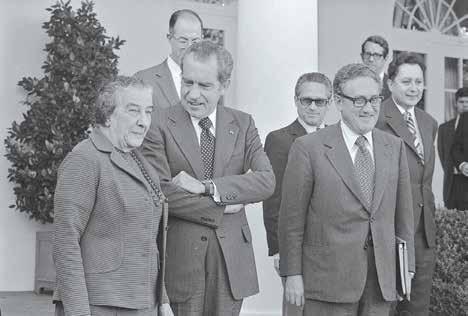
Rabbi Lamm added, “He wants not to be a part of our people — its history and its destiny, its suffering and its joys. So be it. … Let us grant him his obvious wish to be dis-united with us.”
sibly unknowingly, compromised Israel’s security. The most well-known example occurred on Yom Kippur morning in 1973. Kissinger was awakened by Golda Meir who informed him that Egypt
How thrilled Sadat and Brezhnev must have been upon hearing how Kissinger’s helpful actions in restraining Israel supported their war efforts.
Others took the middle ground and viewed Kissinger as a “conflicted” Jew who was uncomfortable – and probably ashamed – of his heritage.
Understandably, Henry Kissinger was looking out for the interests of the United States, and therefore sought to use the Arab-Israeli conflict to advance the U.S.’s objectives. However, he sometimes, pos-
was about to commence a major assault against Israel and gave her commitment that Israel would not launch a preemptive strike.
Kissinger immediately called the Soviet ambassador to inform him that the Israelis had no intention to attack and warned that the USSR should not make “a precipitous move.” Kissinger then called a
senior Israeli diplomat in Washington and cautioned against taking any preemptive action “because the situation will get very serious if you move.” Finally, Kissinger called the Egyptian foreign minister and informed him that he warned the Israeli ambassador, “If Israel attacks first, we would take a very serious view of the situation, and have told him on behalf of the United States that Israel must not attack, no matter what they think the provocation is.” How thrilled Sadat and Brezhnev must have been upon hearing how Kissinger’s helpful actions in restraining Israel supported their war efforts.
Nevertheless, although no one would regard him as an unwavering supporter of Israel, a few archived conversations cast Kissinger as a friend of Israel. For example, in 1971, Kissinger guided Deputy Prime Minister Yigal Alon how to protect Israel against the U.S. State Department’s efforts to give back land it gained in the Six Day War. These experiences, though infrequent, were probably the reason why Kissinger received Israel’s Presidential Medal of Honor in 2012 for his “significant contribution to the State of Israel and to humanity.”
Kissinger was a complex person and his complicated relationship with Israel doubtless reflected his inner turmoil. Israel’s leaders, though, evidently understood Kissinger’s conflicts. When Henry Kissinger told Golda Meir that he considers himself “an American first, Secretary of State second, and a Jew third” and Golda legendarily responded that “In Israel, we read from right to left,” perhaps she was also reminding him of the values of his buried heritage.
Gedaliah Borvick is the founder of My Israel Home (www.myisraelhome.com), a real estate agency focused on helping people from abroad buy and sell homes in Israel. To sign up for his monthly market updates, contact him at gborvick@gmail.com.


Our grandson Ezra lives in Canada and goes to a great school in Toronto called CHAT, where his dad is the Head of School. As so many schools, shuls, organizational groups and concerned individuals, young and old, have done since the war against the Hamas terrorists broke out, Ezra is part of a CHAT mission in Israel.
Ezra is not a chatty guy; until his bar mitzvah – ironically during Covid – we were not sure his vocabulary extended beyond sports, the Strat O’Matic board game, and playing hockey.
Ezra sends a WhatsApp roundup of his days spent traveling around the country listening to politicians, chayalim, survivors and widows.
Ezra, when asked about his day’s highlights, recounted, “I can’t really call it a highlight but listening to the woman who lost her husband in Hostage Square. The fact that she is pregnant and the kid will never meet their father. Someone asked how she stays strong through all that happened, and she said because she had to because she’s a mother.
“I’ll never forget it.”
Two HANC colleagues went on separate missions last week: Jamie and Michal. Jamie went with her shul, IPM, and Michal with a “friends since high school” group. Both are bright, hardworking, young mothers, full of energy and spunk.
They both went determined to witness and to make a difference. Before she left, Michal collected a suitcase full of donated costume jewelry to distribute to any woman who puts out her hand.
Michal came back with stories of fields of flowers and Jamie told of fields of cats.
I also spoke to Judi, the grandmother of our granddaughter Michal D (many amazing Michals in my life), upon her return from her own “senior citizen mission.” She described the completeness she felt during her journey; Judi sponsored and attended barbecues, danced, sang and listened to words of inspiration from the people she met. In contrast, our good friend Valeri, also on a senior mission, described heartache and despair.
Listening to the many stories made me wonder how all of these people explored the same places, interacted with similar people, and returned to share their differing perspectives.
We are all products of our own life’s journey and the history of our past colors our point of view. I remember talking to my beloved survivor motherin-law Edith/Anyu and listening to her describe the wonder of an orange – the color, the feel, the aroma made me salivate for a taste of my own. Anyu worked with gold and diamonds and yet that first orange that she bought with saved pennies in the New York City fruit store still resonated with her.
Jamie told me that growing up, her grandfather spoke of life in the old country: “We had a wonderful experience, lived in a beautiful community, just like here in the Five Towns, had everything we could ever want – until the day we didn’t.”
Jamie described scenes of devastation and loss on the kibbutzim in the south and was reminded of her grand-
father’s words of warning.
Jamie is pragmatic and straightforward; she knows what needs to be done and does it. It’s a gift to be in her circle of friends and colleagues.
Michal and her band of high school cohorts “celebrated” their big birthday milestone doing what they liked to do best in all of their years of friendship: celebrating with a purpose to do some good together. Everywhere they visited, hosting barbecues, listening to stories, bearing witness, they found their purpose.
Within Michal, there is a joy and complete deep-rooted faith that is obvious to all; it pours out of her overflowing warmth and trust in her ability to make things happen.
An addition to Michal’s Friends Mission was a friend of a friend, Tali. When everyone gathered in the airport, Tali approached Michal and said, as we often find ourselves saying, “Hey, don’t I know you from somewhere?” Yes, they did. Both Michal and Tali had been on a high school trip, March of the Living
to post-Holocaust Poland, more than 20 years ago. Ironically, when they found their seats on the plane, it was Row 45 right across the aisle from each other. These were the very same seats as the ones that they were assigned to on their journey to witness the horrors of the past.
When Michal, Jamie, and I began our conversation in school, we figured we would nail the interview in a 40-minute school period. That did not happen. The more we talked, the more there was to share, wanting to talk even more. It was interesting to watch Jamie’s facial expressions as Michal talked and vice versa. They inspired and supported each other with the scope of their shared experience.
Two of the questions that we explored together were: What did you bring home? Are you glad you went?
Michal: “As soon as the war started, I knew that I had to go. I have not been to Israel in a very long time – kids, work, family obligations. But as soon as the war began, I felt pulled, drawn, and I knew I had no choice. I had to be there.
“Israel needs us and we need them to survive, we cannot take for granted that
we have this magnificent homeland!”
Jamie: “I went because my shul was going, and it made sense to be a part of such an important cause when the opportunity presented itself. I have family and people that I love living there, and I wanted to see for myself what was happening. Until I walked the devastated
us. There is no ‘us’ without Israel. Chutz La’Aretz has no choice but to send and give more of whatever it will take to maintain and save our homeland from all evil and peril.”
“Until I walked the devastated fields and saw and cried with the people, war was not the reality that it became.”
fields and saw and cried with the people, war was not the reality that it became. I was devastated by the destruction and devastation I found.
“Even though it was a grueling three nights and four days, it was important that I went. When I first got there, I went with the impression of how much Israel needs us; I came home knowing that we need Israel more than it needs
My cousin Miriam (everyone in my circle calls her Cousin Miriam) and I grew up as sisters. Neither of us has one. Miriam found herself on the same mission as Michal; I spoke to her, too. Miriam’s cousin in the IDF is a victim of the war; his grandparents are close to her. Miriam and the group went to Har Herzl to pay their respects. She wanted to visit his resting place. Cousin Miriam described rows and rows of Yahrzeit candles with silent soldiers marching in tribute to the lost chayalim.
“Each chayal ’s name is inscribed in a brick next to his grave. The bricks are raised to be easily located. They are not placed on the cold ground out of respect for the departed and the visitors. I will never forget those images.”
Miriam took pictures of the gravesite and sent them to his grieving family.
Ezra is still in Israel. We get smiling images of him baking challah, shocking really, and at play. Looking at his beautiful, bearded face, tears fill my eyes as I come to the realization that he is just a year or two younger than many of the chayalim defending us in Gaza.
We must continue to pray for the day when there will be no more need for missions, no more crying widows, no more hostages and when the chayalim are all home with their families for Shabbos.
Mrs. Barbara Deutsch is currently the associate principal at HANC 609 and a longtime reflective educator, parent, grandparent, and new great-grandparent. Even after all these years, she still loves what she does and looks forward to working with kids every single day.


 By Hershel Lieber
By Hershel Lieber

It was only this past June 2023 that we spent a week in Utah touring the magnificent National Parks. We had already been in Utah for full day in 2004 when we explored Zion National Park. The Park was inspiring, and it enticed us to return to see Utah’s other four National Parks.
We left on Sunday the 25 th and had a four-hour delay at Newark Airport. We
did not arrive in Salt Lake City until 4 a.m. Monday morning. Until we reached our motel it was almost 6 a.m. We davened immediately and went to sleep. We only slept about two hours and then took an Uber to pick up our rental car. After driving twenty minutes, we realized that Waze was not working and returned for them to make some adjustments so it would function. It still did not give voice

commands, but we were able to follow the driving directions on the screen. We stopped at Smiths supermarket and stocked up for the next few days to supplement the “Meal Mart Amazing Dinners” and other hard to get kosher items that we brought along. It was after 1 p.m. when we finally headed out towards Bryce Canyon. The lodge that we booked was rather decrepit, but our main objective was the

natural wonders that we planned to visit. We did not allow ourselves to despair over this minor inconvenience.
We had a full itinerary slated for the next day, Tuesday. We got up at 6:30 a.m. and were on the road by 9 a.m. Our first stop was Bryce Canyon National Park, about twenty minutes away. I had seen photos of this unusual park and always dreamed of actually seeing it. The park


is known for its blazing crimson-colored hoodoos, which are spire-shaped rock formations. They were caused by a combination of weather and erosion. There are twelve distinct amphitheaters with thousands of awe-inspiring hoodoos. The Southern Scenic Road includes nine scenic overlooks, including Sunrise Point, Sunset Point, Inspiration Point and Bryce Point. There are several natural arches within the park and many hiking trails. It was hard for us to tear ourselves away from this incredible sight, but we still had another major attraction on our schedule.
Kodachrome Basin State Park is only thirty minutes away on the Southern Scenic Road. The park is best known for its up to 170 feet high sandstone chimney pipes which change colors throughout the day. The Basin is surrounded by the layered Grand Staircase Escalante on three sides, which is renowned for its labyrinths, slot canyons and unusual rock configurations. The landscape is truly a photographer’s dream. We did not do any hiking, rather we just drove through a section of the park and made numerous stops to take in the scenic beauty along the way.
Our next objective was to bring ourselves to the town of Torre where we would stay overnight. This was still a two-and-a-half-hour drive away. We were well compensated by driving along Utah’s State Route 15, one of the most scenic routes in the United States. This


unexpected gem was well worth the time that it took to get to our destination. Every twist and turn in the road brought us vistas of grandeur and delight. There were many pull-offs where we made stops to gaze at the marvelous views and to immortalize them in the form of photos. We stopped briefly at the Petrified Forest but were not up to the two-mile hike that was needed to see the entire area. We had just seen a Petrified Forest during a recent trip to Arizona, so we were not so
lands National Park. The park preserves a colorful landscape eroded into numerous canyons, mesas, and buttes by the Colorado and Green Rivers. There are towering rock pinnacles known as the “Needles,” the remote canyons of “The Maze” and whitewater rapids flowing through Cataract Canyon. One cannot help being impressed and overwhelmed. We felt so small and insignificant from the towering majesty that surrounded us. We spent the next two nights in the nearby town of
Every twist and turn in the road brought us vistas of grandeur and delight.
disappointed that we couldn’t see them here. It was an amazing day, fulfilling our aspirations of seeing Hashem’s beautiful world in its full glory.
Wednesday morning at 9 a.m. sharp we were at the entrance of Capitol Reef National Park. The scenic eight-mile, two-hour drive was a spectacular show of nature at its best! It is the largest exposed monocline in North America with newer and older layers of multi-colored earth folded over each other in an “S” shape. We really had no words to describe the park’s attractiveness; suffice to say, we were rendered speechless. Our day was far from over, as we still managed to tour Canyon-
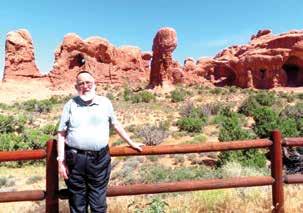
Moab which was close to Arches National Park, which was Thursday’s agenda. We got up at 6 a.m. so that we could be there by 9 a.m. When Arches is overrun by tourists, it is hard to get close to major attractions. We figured that we would beat any potential crowds, especially since it was a few days before the Fourth of July holiday. It was before the weekend, and to our good fortune, the Park was not crowded at all. We spent a total of four hours gasping at Hashem’s wonders and creations. Mountains, plateaus, caves, rock formations in every imaginable shape, towering arches in various sizes and shapes, and dangling


rocks balancing on monolith pinnacles are just some of the sights that greeted us. The shades of the desert and mountains ranged from every hue of the color spectrum – a blend of brown, terracotta, orange and yellow that alternated with blue and purple, depending on the time of day and the position of the sun. There is no way that we could do justice in describing the grandeur and beauty that we were privileged to behold.
Friday was a travel day. We left Moab and drove a distance of 235 miles in about four and a half hours. We passed plateaus, mountains, and forests until the natural scenery gave way to developed industrial and residential towns and cities. We were heading to Park City, a forty-minute drive from Salt Lake City. We had made arrangements with the Chabad shliach, Rabbi Yudi Steiger, to have our Shabbos seudos at his home. We checked into a very large condominium complex called Westgate, which was a half-hour walk to his house. Westgate itself was the location of the Chabad shul. We had registered for a pretty but small condo apartment where we unpacked our luggage and got ready for Shabbos.
Friday night’s Kabbalas Shabbos and seudah were at Rabbi Steiger’s home. We drove there before Shabbos and were greeted by the Rav and Rebbetzin. We soon realized they were having a huge gathering of mostly locals for the Friday night seudah. The reason was because they were hosting a celebration for the re -

covery of an eighty-year-plus gentleman after being hospitalized for an entire year. The man, who was very active and athletic, had fallen off a 100-foot cliff while hiking. It was nothing short of a miracle that he lived to celebrate his full recovery. The atmosphere was very festive with delicious food and the Rav’s divrei Torah. We did feel a bit out of place since everyone was part of the closeknit community, and we were sort of strangers at this event. Nevertheless, people befriended us and tried to make us feel included. The main difficulty we encountered was our walk back to Westgate. It was all uphill on a steepish incline for the entire time. It was a dark night, and we could not read the street signs. A Chabad bochur, Yitzchok Shor, offered to walk us and he led the way until the door of our complex. We were so thankful to him as the walk (more like a hike) was quite stressful and took an hour for us to complete.
The next morning, we were gratified that the Chabad shul was in our Westgate complex. Davening in Chabad always begins at 10 a.m., and we finally had a minyan by the time we reached Yishtabach. We had decided that whatever food we had in our condo would serve as our Shabbos seudah and we would not go the rabbi’s house and face the uphill re -
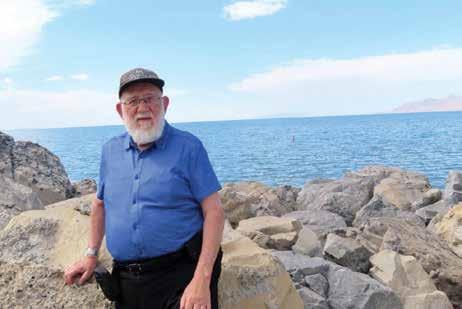
turn trip. We hoped that there would be some challah by the shul’s kiddush which would enable us to start our seudah there. Baruch Hashem, not only was there challah and wine, but we also had a full multicourse meal including herring, egg salad, potato salad, coleslaw, hummus, chopped liver, cold cuts and a steaming hot cholent. We ended our seudah with cake and tea. After Mincha with a minyan, we took a short walk and a long nap.
Later, we walked downhill to Rav Yu-

di’s house, and I finally had the opportunity to engage him in some conversation. He came originally from Antwerp, from a Galicianer family who became Lubavitcher chassidim. He shared with me his personal journey and told us about the community and his activities. We finally became acquainted and shared life experiences with each other.
Sunday was a light day. We took the gondola ride, gliding over the nearby hills, which are usually inundated with tourists in the summer and skiers during the winter. We took a tour bus to Park City, and the driver pointed out the different sights during the ride – not many. We spent ninety minutes walking around the town’s turn-of-last century buildings on Main Street and browsing in the shops. The town was founded by traders who provided life’s necessities for the silver miners in the area. Today, tourism, especially for the skiing industry, is its lifeblood.
Monday, our last day, was dedicated to Salt Lake City. We took a trolley tour with a cast of humorous guides dressed in the garb of the late nineteenth century. The hour-long trip introduced us to all the famous historical sites as well as explaining Utah’s Mormon heritage. Then we went to the world-famous Mormon Family Research Institute where, with the guidance of staff members and the use of computer, tried to garner information about our families’ ancestry. We were able to obtain some data, most of which we already knew. Though we


gained very little information, the experience was keenly interesting.
Later, we drove to see the Great Salt Lake, the largest saltwater lake in the Western Hemisphere. The lake has shrunk to half its size during the last decades. Scientists think the lake could disappear in five years. It was hard for us to believe that, when we viewed the beautiful mass of blue water. The salinity level ranges from 5% to 27%. (The Dead Sea’s, Yam Hamelech, level is a steady 33% but is also drying up.) We stayed a short while, then went to eat at a trailer restaurant called Yalla, in the parking lot of Salt Lake City’s Chabad. The Israeli style food was delicious, and we met Rabbi Benny Zippel who invited us to eat in the auditorium of his beautiful shul.
We then returned to Park City and started to pack. Tomorrow we were going back home. Life would be returning to routine, but our memories would be enriched forever.


There are many people in this world who view life as a race, and in turn, transform many aspects of our existence into a competition. All too many believe that the goal of life is to get ahead of others, to finish first, to be better than everyone else. To those who live in such a world, the success of others is a threat to their own prosperity, while the failure of others is cause for celebration.
Competition and ambition are, of course, important ingredients of a successful life – albeit only when used in
modest quantities. But one who seeks superiority over everyone – to the point where they’re fine with pushing others down in an effort to achieve their own goals – will only find themselves lonely and unfulfilled, with no one to call a friend.
Perhaps the only true way to a successful life is achieved through walking the path of kindness; by possessing integrity, honesty, and a sincere desire to help others. Or at least that’s the philosophy of Hillel Fuld, a top marketer and business advisor in the Israeli tech industry.
imagine if, in every meeting you have, whoever you’re meeting – all you think about during that meeting is: how do i help this person?
” Focus on value, and money will follow. When you do good for others, it leads to good things. Period. When you help others win or you pave the road for others to go on their way to success, you join them on that road.
” you can succeed in a merica despite being a Jew, but in israel, you can succeed because you’re a Jew. israel is the place for a Jew to be. ”
Hillel, along with his four siblings, grew up in New York. His father was the principal of a prestigious Jewish elementary school in Riverdale, and his mother was a talented teacher who worked in many different institutions. But when Hillel was fifteen years old, his parents decided that it was time to leave New York behind and set down roots in the eternal homeland of the Jewish people: Eretz Yisrael.
“I came in the middle of high school, which is by no means an easy age to move to Israel. But I can tell you now, thirty years later, that it was the best thing that ever happened to me by a long shot – and I mean that both professionally and personally,” Hillel said.
His deep love for Israel was especially fostered by the unbelievable sacrifices his family made to live in the country. His older brother, Ari Fuld, was, in Hillel’s words, a “warrior” who, as an IDF soldier and devoted Zionist, defended and loved Israel with all his might until the day of his tragic death.
On Erev Yom Kippur, around five and a half years ago, Ari was shopping in Efrat when a seventeen-year-old Palestinian teenager suddenly stabbed him in the neck. Although he was mortally wounded, Ari, in the last minutes of his life, chased down the terrorist, who was about to attack his next victim, and shot him.
“Ari, literally in his last breath, ran after him, jumped over a wall, got down in a shooting position, and shot him, and then Ari collapsed and died,” Hil -
lel said. “He was awarded the national hero award. I can’t help but think of my grandmother in Auschwitz – if you had told her that one of her grandsons would be a national hero of the state of Israel, I don’t think she’d be able to even digest that information.”
As an advocate for the Jewish state, Hillel’s love for Israel is unspeakably powerful. He praises Israel for its incredible progress in the past few decades and highlights how, not too long ago, it was far more difficult to live comfortably in the Holy Land. But now, Israel is highly technologically advanced, boasts many occupations, and offers the same luxuries as any developed country. Thus, making aliyah today no longer entails the same sacrifices that it used to, explained Hillel.
But the more important reason why Hillel Fuld encourages Jews to make aliyah is because of antisemitism, particularly in the United States, where anti-Jewish rhetoric has become progressively mainstream as of late. Simply put, when Jews live in Israel, they aren’t at the mercy of other nations.
Aside for his love for the Jewish state, Hillel has a deep passion for one of the many things Israel is fantastic at: technology.
“I’m a guy who loved tech well before it was cool to love tech; before there were startups, before there was social media, before there was an iPhone – I just had a deep passion for technology,” Hillel Fuld explained. “I found myself out of
college with a degree in political science, not knowing how I was going to get into tech, but it was clear that I was going to get into it.”
As part of his first tech job, Hillel wrote user guides for companies such as Verizon and AT&T, but he quickly found himself bored with the repetitive task of crafting manuals. For fun, he decided to write articles on the internet about technology, and eventually his “blog” started attracting a large number of people and companies who wanted his advice.
“Startups started to reach out to me: ‘I read your article; I’d love to meet you.’ I met these entrepreneurs, and I realized that a lot of these guys are really good at building tech and really bad at building businesses,” he said. “I’m not even oversimplifying when I say that I built an entire career out of just trying to help people.”
In addition to giving business advice to startup companies, Hillel writes for nearly every leading tech publication in the United States, works with big tech companies such as Google and Microsoft, and interviews industry leaders.
Hillel’s policy is that by helping others – especially for free – you will inevitably benefit in the business world. And it’s not about “karma” or some abstract spiritual benefit, he explains. Rather, by genuinely helping others, you will succeed, because by doing acts of kindness, everyone will see how much integrity you have and how valuable you are, and they will want to work with you.
“What I’ve learned over and over again is that when you help others win or you pave the road for others to go on their way to success, you join them on that road. Period,” Hillel said. “When you provide real value, what you do is you show a company what you can do for them. Let them reach the conclusion

that they want to pay you. Focus on value; money will follow.”
Although Hillel has countless stories that demonstrate the importance of kindness, networking, and helping others without immediate expectations, there is one amazing anecdote in particular that illustrates the true value of his unique approach:
Around ten years ago, Hillel received an email from a nineteen-year-old boy, asking for help in finding investors for his startup company. Hillel agreed to help, introduced the teenager to a few investors, and that was that, as far as Hillel was concerned. But a few years later, the boy reached out to Hillel again with some great news: he had successfully sold his business thanks to Hillel’s help. Then, the boy made an odd request: he asked Hillel to meet his father.
“He said, ‘My dad wants to know who this guy is who helped his son without asking for anything in return.’ I’m like, ‘OK, who’s your dad?’ He told me his name, I googled him, and he was a top cancer research expert. I’m like, ‘Wow, I’d love to meet your dad,’” Hillel recalled. “I met him; he’s an amazing, really fascinating guy.”
The meeting with the boy’s father, whose name was Peter, was an incredible experience for Hillel. But, as far as he was concerned, that episode of his life was over. And as per his expectations, over the next seven years, Hillel had little to no communication with the man.
Around two years ago, Hillel was spending some time with his parents at their home in Yerushalayim when suddenly his mother received a phone call. In an instant, she grew pale, as her expression transformed into one of sorrow and surprise. Her childhood friend had just been diagnosed with pancreatic cancer.
It was at that moment that Hillel re -
membered his meeting with Peter, the top cancer researcher whose son he helped.
“I WhatsApped this guy, and I said, ‘Peter, how are you? I have this family friend who has pancreatic cancer.’ And he responded: ‘Here are the ten best pancreatic cancer doctors; here are their names, here are their emails, here are their phone numbers,’” Hillel recalled. “I took that information and gave it to the patient.”
Taken aback, his mother’s friend asked if they could communicate directly with Peter, a favor that the cancer researcher was more than happy to fulfill.
A few weeks later, Hillel received a call from his family friend.
“The guy is an angel. He will not leave my side,” the patient explained to Hillel. “He’s introducing me to doctors, he’s bringing me to hospitals, he’s just nonstop. And I said to him, ‘Peter, you don’t even know me. Why are you helping me in this way?’
“And Peter looked at him in the eye and said: ‘Listen, what Hillel did for my son ten years ago – whatever you need, I’m here.’”
“Do you think when I met this entrepreneur ten years ago, that I thought that maybe, one day this will, if not save someone’s life, at least enhance their life in a real, significant way?” Hillel expressed.
Hillel’s main advice is as follows: always ask yourself how you can help the people around you. If you do that, he adds, not only will you strengthen your relationships, learn how to solve diverse problems, and have a “bank of favors to call upon down the road,” but you will also become indispensable in the eyes of others. Most of all, you will have attained the incredible sense of satisfaction that comes with knowing that you’ve touched the lives of others, and one might rightfully say: that alone makes the human experience well worth it.
This article is based on a podcast, “Inspiration For the Nation,” hosted by Yaakov Langer. To catch more of this conversation, you can watch it on LivingLchaim.com or YouTube.com/LivingLchaim or listen wherever you listen to podcasts (just search for “Inspiration For The Nation”) or call our free hotline: 605-477-2100.

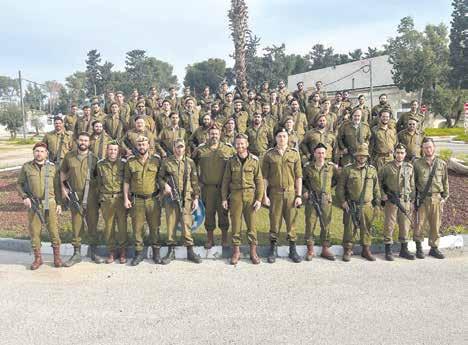
October 7 changed Israeli society in many ways. Since the war began, hundreds of chareidim have signed on to join the IDF through a basic training program called Shlav Bet. Rabbi Aron White, who himself joined the program, writes about the important program and the potential it holds for Israel’s future.
Ifyou would have told me a year ago that I would be training for the IDF together with Gerrer Chassidim and Chabad Shluchim, I would probably have laughed in your face. But October 7 changed many things, and indeed this improbable scenario became my reality a few weeks ago. Thanks to a program called “Shlav Bet,” over 800 Chareidim have joined the army since the war began, completing a basic training course before going on to serve as IDF reservists. I joined the sixth round of this training, so was able to experience this program firsthand.
Since the first days of the war, it has been reported that many Chareidim were interested in joining the army. Some Chareidim joined Netzach Yehuda/Nachal Chareidi, the Chareidi combat brigade that just celebrated its 25th anniversary. This involves months of training with the goal to become a combat soldier. However, for Chareidim over the age of 26 who can no longer join this combat brigade, there is another route into the army – the Shlav Bet program.
This program is a basic training program, after which graduates can serve in a variety of non-combat roles in the army. The overwhelming majority of those serving in the IDF (and most armies) are not combat soldiers – there are so many jobs, from engineers, to truck drivers, to army psychologists and so much more, that one can do without going through the eight months of training needed to be a combat soldier. This route into the army has existed for many decades, and before the war, there would be on average two rounds of training a year. Since the war began,
interest in the program has skyrocketed, and there have been Shlav Bet programs running almost constantly. I took part in the sixth round of Shlav Bet, and at the time of writing, over 800 people have taken part in this program since Simchat Torah. Many of those who trained through Shlav Bet have already been serving as IDF reservists now for a few months.
There were 55 people participating in my two-week training. Among the group, each person had a different story for his motivation for joining.
“I had wanted to join the army for years,” said Yossi from Givat Zeev, “but I just never felt I could due to the social pressure. After October 7, I think that has changed, and I realized that I should be doing what I think is right to defend our country.”
Dovid, a 32-year-old Bobover Chassid from Beitar Ilit, also felt that October 7 changed things for him. “I work for Yedidim, and on October 7, we started to get hundreds of calls to help people fix the doors to their safe rooms, or to fix cars of soldiers heading to Gaza. I felt this burning desire to be in a uniform and fighting with the soldiers – and then I saw three buses full of soldiers my age heading out of Beitar Ilit! Many of them had done the Shlav Bet program, including some friends of mine who I hadn’t known about, so after that, I decided I wanted to do it. I spoke to the Rebbe, who said that he wouldn’t tell me what to do, but if I felt I could maintain my ruchniyus, then that is a setting that I can go to.”
Since graduating the program, Dovid has become a truck driver running logistics for the IDF.
I was unsure what to expect in terms of the chevra –one of the myths thrown around is that Chareidi programs
in the army aren’t really that Chareidi. It only took a few minutes of arriving at Tel HaShomer, the army base in Ramat Gan where all soldiers begin their training, to see that this really was a Chareidi program. In the group, the most represented city was Bnei Brak, with many Chassidim and Sephardi Chareidim from the city. Our group had Chassidim, Litvaks, Chabad and Sephardi Chareidim, from Yerushalayim, Bnei Brak, Beit Shemesh, Modiin Ilit, Betar Ilit, Tzfat and more. There were a number of remarkable stories. One person on the course, Baruch, is a member of the chevra kadisha from Elad. On October 8 and 9, he went to kibbutzim to help with the chessed shel emes. At one point, a hidden group of terrorists fired at him, and the group from the chevra kadisha managed to get away from the flying bullets. One remarkable participant Queens made aliyah from the U.S. just to take part in this program!
The people in my room were a typical cross-section of those who joined the program. Eliasaf is a graduate of Chevron Yeshiva who now works as a lawyer. Yehuda is a Gerrer Chassid from Bnei Brak with six children whose brother-in-law and father also had completed this program. Avi grew up as a Lelover Chassid, but now does not have Chassidish peyos but sends his daughter to Beis Yaakov. Yehuda is originally from Manchester and went to Gateshead and Mir Yeshiva and now lives in Yerushalayim. Mendy is a Chabad Chassid who got married last year; he’s originally from Tzfat and now lives in Yerushalayim.
Krav Maga and “Ani Maamin”
The training itself that we did is called rovai 02 and is the same training that all non-combat soldiers in the IDF begin with. The training includes technical aspects, like


first aid and how to operate a gun, and other aspects, such as learning about army discipline, the different units of the IDF, and the ranks in the army. Many of the physical aspects are more challenging in a group of men aged 25-50 – there is a reason people join the army usually when they are 18! After the day’s schedule of pushups, Krav Maga and gun training would end, most of us would crash into bed, absolutely exhausted. Other parts of the experience also pushed us in new ways; as we all scrubbed the floors and tidied our rooms in seven minutes, many of the married men said, “Don’t let my wife see this and get any ideas!” It is also quite a culture shock, but a big part of the experience, to go from professional and family life to not being on your own schedule and having orders shouted at you by commanders as young as 21. Everything from when you wake up to how long you have for meals is decided by your commanders, and it is quite an experience.
The program is run through the Minhelet Chareidim, the section of the army in charge of all Chareidi programs in the army, and great care is taken to make the program accommodating to those who are religious. When we arrived on base, the first thing that we had was a talk in the shul by the kashrus mashgiach of the base. He told us about the high standards of army kashrus in general and then listed five or six options of private mehadrin hashgachos that were available for anyone to choose – Machpud, Eidah Chareidis, Chabad Anash and more! Three tefillos a day in the shul was a given (that is an official right of all soldiers wherever they are in the army), and we also had an hour of learning after Maariv – either individual learning or a Shiur from a visiting Rav. All of our mefakdim (commanders), from the junior mefakdei kita to the more senior mefaked plugah, were religious. At our daily ceremony each morning, after singing “HaTikvah,” we would also sing “Ani Maamin.”
The culture part of the program was also catered to a Chareidi group. One evening, when there was a more fun program, involving physical and intellectual competitions between the different divisions of the program, the blasting background music was Chassidish music by Beri Weber and Lipa Shmeltzer. For the other soldiers on the base, it was definitely something they were not used to compared to typical Israeli army music!
Graduates of Shlav Bet since the war began have gone
on to do fascinating things.
“I was recently visiting some soldiers in Gaza,” said Rachamim Chugi, the head of the Shlav Bet program, “and someone calls out from a truck, ‘Chugi, thanks for Shlav Bet!’ The soldier was on one of the Shlav Bet programs at the beginning of the war and had really pushed hard to get into a particular logistics unit and was now driving a truck in Gaza!”
From spraying down planes in the Air Force to fixing cameras for tanks, graduates of Shlav Bet are in all sorts of units, all over the country. Many people from the program also go on to serve in the Rabbanut – this unit is involved in positions in kashrus hashgacha, as well as the unfortunate chessed shel emes that happens during the war. Many of
“I spoke to the Rebbe, who said that he wouldn’t tell me what to do, but if I felt I could maintain my ruchniyus, then that is a setting that I can go to.”
them have already served for months in Miluim.
One of the interesting things about the program is it’s almost like a language immersion course. The army is by far the biggest organization in Israel – it is massive, multi-faceted and literally has a sub language of its own, with ranks, units and abbreviations. When my friends joined the army 10 years ago, I got lost trying to follow their conversations. Experiencing the army and having classes explaining different aspects, even only for a few weeks, makes a huge difference in starting to understand things better. I feel the news now looks different to me than it did before; previously, I just saw a long list of titles and units, that didn’t mean anything to me, in news reports, and now it feels intelligible and meaningful. I even interact with people differently. For example, I always knew that
my second cousin was a senior officer in the reserves – but now after my training, I actually understand what he does!
As someone with a background in politics, it also became clearer to me the challenge Israel has to explain its story in the West. As one spends time in a military setting, it becomes clear that it is a whole world and way of thinking that most people in the West are today totally unaware of. The level of professionalism and skill required of even a basic combat soldier is remarkable. The types of situations they face are totally unlike anything most Western 18- and 19-year-olds will ever face. Western society (certainly in Europe) is largely devoid of a military culture – in Israel, most of the country has spent years in the army. Things that are obvious to Israelis require a lot of explaining to people who aren’t used to the military. The biggest language gap between Israel and the West might not be Hebrew versus English, but a military culture versus a non-military culture.
A number of soldiers also commented on how the program is an incredible lesson in mussar.
“I learned about the value of time,” said Meny, a Chabad Chassid. “But in the army you really learn the value of 30 seconds. If you are running late for the roll call and haven’t straightened your uniform, you suddenly realize how much you can do in that time! One day, our mefaked heard someone make a comment to the head of the kitchen that there was nothing to eat. Before we started training that day, he marched our whole machlaka to the kitchen, and brought out the head of the kitchen for all of us to applaud and say a thank you to him. The mefakdim really taught us middos as well as the technical training.”
One major topic of discussion among the group was whether we represented a more local phenomenon or a change within Chareidi society as a whole. Currently, only 10% of Chareidim serve in the IDF, and this has been a major point of tension for decades. This war has exacerbated the tensions – the Knesset is considering passing laws to increase the amount of army service soldiers and miluim Chareidim need to do, so there is a lot of political pressure to change the equation of Chareidim and the army. How does the Shlav Bet program, and the hundreds of participants in it, fit into this?


One aspect is that there is much more openness in the Chareidi community to older, more established Chareidim serving in the army than 18-year-olds.
“I don’t think I would have done this as a bochur,” said Yehuda, a 38-year-old Chassid from Bnei Brak. “Now, baruch Hashem, I am married with six children. I am established, I am working. When the war broke out, I didn’t see a reason now why I shouldn’t serve and do my part like everyone else.” (He is currently working on a base in central Israel repairing tanks engines.)
An increase in the number of people serving in this
Shlav Bet program in their mid-20s and 30s does not necessarily mean that there will be more 18-year-old Chareidim going to the army. However, in and of itself the Shlav Bet program is tremendously valuable. During this war, over 220,000 Israelis have been called up to serve as reservists. If thousands of Chareidim become trained as reservists, they are still able to make a meaningful contribution during this and future wars.
At our tekes siyum, our official swearing in ceremony to the IDF, Moshe Malayef, a Chabad Chassid from Kiryat Malachi, spoke:

“When the war started, we knew that we had to get up and defend our country. We are proud of who we are. We are Chareidim, and we are committed to defending Israel. We are Chareidim, and we are part of Israeli society. We are Chareidim, we are Israeli, we are brothers. Our message is clear: we call on others to join the IDF to defend our country together.”
These messages are incredibly important, and maybe symbolize that just as the IDF is not the same IDF as it was at the founding of the State, there are pockets of change within the Chareidi community, too.


February 25, 1996, began for most people in Jerusalem like any other Sunday morning. For Dana Pinhasov, born and raised in Jerusalem, this day would start like any other Sunday when she was home from duty. At 21 years old, Dana was a medic with the Border Police. She was home for Shabbat in the Katamon neighborhood. It was time for her to return to base. Her mother drove her to the Central Bus Station.
Dana took the Number 18 bus. Near the Jaffa Gate, a suicide bomber boarded the bus.
“The place that I was sitting was horrible because it was exactly above the gas tank,” Dana recalls.
The bomb turned the bus into a fireball. Dana was knocked unconscious as her lower body was engulfed in flames. The terrorist’s suicide bomb had contained nails, ball bearings, and bullets and tragically killed 26 people and injured 49 others.
Dana was rushed to Hadassah Hospital. She was “unidentified victim number one.” Eventually, she was identified. Her parents were called. Dana’s father told news reporters shortly after arriving at the hospital, “I said to myself, ‘I am going to collect my daughter’s corpse.’” Dana had suffered severe burns to her body as well as internal damage to her lungs.
Her parents and three brothers had

faith and kept a constant bedside vigil while she remained unconscious and connected to a respirator.
“It’s a matter of time. With G-d’s help, she’ll make it. She’s strong enough to make it,” Dana’s father told media at the time.
Ten days later, Dana awoke with no recollection of how she got there. But that moment of consciousness marked the beginning of “three long, excruciating months of pain,” she said. Dana needed 17 surgeries, skin transplants and grafts.
There was also the emotional damage that Dana had to endure.
“I was in pain and thought I didn’t deserve this. I am 21. Why? Why did I get this?”
She tried to push away her boyfriend, but he wouldn’t leave. “I didn’t want anyone to stay because he is sorry for me.” She asked him why he remained by her bedside. His response was simple: “You are still the same person I fell in love with and I’m not going anywhere.” Dana’s boyfriend never left. Two years after her injuries, they married.

ily grew to include four children. But the combination of her injuries, motherhood, and working for the Border Police were eventually too much, and by the age of 27, Dana was forced to retire.
“I still wanted to be influential in the world – and it didn’t have to be a day job.”
Dana knew she wanted to do more. She started volunteering, first in children’s shelters, then retirement homes, and then it occurred to her to give back to the place that gave her so much. Dana began volunteering at Beit Halochem “to show younger veterans that there is a light at the end of the tunnel” – but she still had more to contribute. She became the first woman on the National Board of Directors of Beit Halochem Israel.
In 2014, collaborating with Beit Halochem Canada, Dana launched Kids of Courage. She is the volunteer coordinator of the annual initiative that brings 40-60 bar and bat mitzvah-aged Israeli children of severely disabled veterans to summer camp in Canada. The program provides a break from the daily challenges of being the child of an injured parent. In Israel,
“I knew that if I pause for a moment to feel sorry for myself, or to cry for my fate, life will go on without me.”
Dana eventually returned to work at the Border Police, striving for normalcy as much as possible. Young, scarred, and feeling ashamed, it was a difficult transition. Each day after work, Dana visited Beit Halochem Jerusalem where she swam and underwent physio and hydrotherapy. It was “the one place where I did not feel different or unusual, and no one stared at my big, ugly scars. It is a comfortable second home for me.”
It was a difficultjourney, and her fam-
parents are happy knowing their sons and daughters are simply being kids and having adventure after adventure. At camp, friendships quickly develop as the Israelis and Canadians discover more similarities in their lives than differences. It is a confidence-building, life-altering opportunity for these children of our injured heroes.
Dana’s latest efforts have culminated in the launching of Now, Me!, an innovative, new program for women. This is the first time that women injured in the line
of duty will have their own peer group to help ease the feeling of social isolation. Following Beit Halochem’s mandate, Now, Me! will enhance the quality of its members’ lives – both personally and professionally. While topics such as family and relationships will be candidly and openly discussed, so, too, will subjects such as starting a business or seeking a new direction in their professional lives. Now, Me! is one more avenue to advance the rehabilitation of the disabled women veterans of Beit Halochem – with warmth, sensitivity, and, most of all, understanding. Dana does this in addition to managing the Achiad post-traumatic
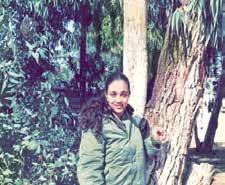

stress disorder support group of which she is an active member.
Dana’s efforts are now extremely important. With the current war, the treatment of the mental wounds suffered by our soldiers is as important as their physical wounds. In conjunction with Beit Halochem Centers and the Ministry of Defense, PTSD treatments are being emphasized as they are often the silent injury that haunts and disables a soldier with no apparent physical injuries.
“Each year, I have two birthdays: November 7, the day I was born, and February 25, the day I was reborn,” shares Dana.

For the past few years, she has penned a letter to herself on the anniversary, to understand “how that single event has affected the person I am today.” In last year’s letter, Dana mused on all that she went through at the time of the bombing.
“I could, back then, 22 years ago, have given up. I was disabled, a scarred woman, and terrified of the new situation. But something within me simply went on without going over the obstacles.”
She writes of how she eventually learned to “embrace herself with love” in order to flourish, and with acceptance of her new reality was able to reinvent
herself to create a full life.
“I knew that if I pause for a moment to feel sorry for myself, or to cry for my fate, life will go on without me. Today, I understand that this is one of the gifts that I received when I chose to continue living – that inner understanding that we must continue forward even if bumps on the road slow us down.”
Beit Halochem Centers are the rehabilitation and recreation centers established by the Zahal Disabled Veterans Organization and have now over 54,000 members. They are supported by Beit Halochem friends organizations throughout the world.


Jordana Klein’s art has been displayed in the Israeli Knesset and on the pages of Vogue, GQ, and House & Garden magazines. The American-born Israeli artist was the Artist-in-Residence at the 5th Quarter Art Gallery in the Cardo, the ancient Roman street inside Jerusalem’s Old City, from 2014 to 2017.
Klein speaks using Facebook Live from the studio inside her one-floor house in Modiin, Israel. In the background are cubbies with her artistic challah covers and other pieces of Judaica.
“We have them sorted in every room in our house,” she chuckles.
She was awoken by sirens at midnight that day we spoke, warning of incoming missiles fired by Hamas. She didn’t get to the safe room in her home this time but is OK. In the past, she’s heard the booms of Israel’s Iron Dome shooting down Hamas’s missiles.
Three soldiers who lived on the same block Klein did in Ramat Shemesh from 1998 until 2023 have died in this war.
Klein is doing “a whole series of war paintings now. Somehow, the emotions are coming to me. I don’t know what I’m going to paint when I sit down for these war paintings.”
One of her paintings has the names and ages of all the Israeli children kidnapped by Hamas on October 7.
“Here you have very childlike lethal colors and movements. You look at it, and it just feels like an explosion at a birthday party of confetti,” she explains.
“And in one way, those kids’ lives are frozen at that moment, the moment before. They will never again be nine years old if they went in there as a nine-year-old. They will be a mini-adult to deal with the trauma forever. It’s capturing the joy of who they are and the sadness that was taken away from them – that their childhood ended on that day.”
She adds, “Israelis are very resilient. There are Israelis who strongly believe that they will recover and that you can recover from such a thing because it’s a country that’s done it before. So they’re not going to say that their childhood ended but they certainly pivoted and they’re certainly not going to be as easy and gleeful.”
Klein is “trying to convey as many scenes from the war as I can without being literal and to get the feeling across more than anything else.… It’s really hard to paint atrocities without being something nobody could look at.”
Klein gets notes from people after posting her paintings online saying that “it’s helping them deal with their emotions. It’s a way for them to process their grief.”
Painting is also helping Klein work through her own trauma. She is thankful but feels guilty her three sons are not currently in the Israeli Army while so many of her friends’ children are. Klein said it’s her job to communicate other people’s pain.
“This is what makes me cope,” she says.
Klein smiles often and is open to questions and conversation. She wears a royal blue blouse with white flowers that is not flashy. Down-to-earth seems an apt description of Klein.
She is the daughter of Rabbi Benjamin Blech who led the Young Israel of Oceanside for 37 years. Rabbi Blech has been teaching at Yeshiva University since 1996 and has written 16 books.
Rabbi Benjamin Blech received semicha from HaRav Joseph Soloveitchik.
“Rabbi Soloveitchik’s Judaism was beautiful,” says Klein. “It was philosophical and psychological. It was almost like life coaching. What does this parsha teach us in relation to what’s going on in the world this week?
“So, to me, Judaism and the Torah is the best self-help book in the world.”
Rabbi Benjamin Blech is the 10th consecutive generation of rabbis in the family. His father was the rosh yeshiva of Mesivta Toras Emes in Brooklyn. Rabbi Benjamin Blech’s son, Ari, received semicha in 2020, continuing the rabbinical dynasty.
Richard Joel, past president of Yeshiva University, was Jordana’s Youth Director at
By davId schneIer Jordana Kleinthe Young Israel of Oceanside. Joel conveyed a Judaism “only positive, only beautiful. He used to play the accordion for us – like who plays the accordion anymore?”
Twice a year, when she was younger, Jordana met non-religious Jews at five-day seminars at hotels. Richard Joel ran the seminars so religious Jews “could talk kid-tokid.” Jordana listened to the questions from the non-religious children – like why tragedies happen – which made Klein think hard and go to her father for answers.
Having gone to the Hebrew Academy of Long Beach and the Hebrew Academy of the Five Towns influenced her art.
HALB “focused a lot on Judaism as being happy, holidays, etc. We learned the mitzvot, what we can do, and what we couldn’t do. There was singing. It was a nice atmosphere. There was nothing to scare you.”
Jordana earned a bachelor’s degree from Yeshiva University in Political Science and Fine Arts and a master’s from Columbia University in International Politics. Her summer internship was at the prestigious think tank, the Council on Foreign Relations. Her research assignment was how and why Israel was surprised by the Yom Kippur War in 1973. Her report was used as a case study at Harvard’s Kennedy School of Government.
“Unfortunately, this situation [of October 7] mimics quite a bit of what happened then,” she said.
Jordana was a vice president at Bank Leumi and her husband, Aryeh, was a lawyer at a top law firm, Proskauer, Rose LLP, when they made aliyah in 1997. Aryeh now works in Israel as a lawyer affiliated with a U.S. law firm.
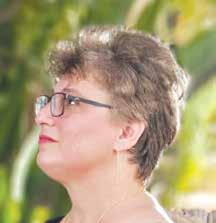
Klein was “thinking or hoping” about getting involved in Israeli politics, but her eldest son was disabled, which required a lot of her attention. Klein took various part-time jobs so she could take care of him while also earning some money.
“That’s what you do,” she shrugs.
The Kleins have three sons: Ilan played for the Israel Baseball League and is finishing his engineering degree; Shai re -


cently moved to Florida and is getting married; Adin is at Hebrew University in Jerusalem.
Starting at age 8 and until the end of high school, Jordana and her friend, Naomi Skolnick, took drawing and painting classes with Mrs. Page in the basement of Jordana’s home.
“I love doing it, and it was easier than sending me to a psychologist,” she quips.
Klein took classes at art schools at Parsons, the Fashion Institute of Technology, the School of Visual Arts, and the New School. While taking Advanced Painting at the Israel Museum in 2002, her teacher told Klein she should be selling her art.
“I never wanted to do art professionally in an industry. I wanted my art to be my own. So, I am not going to illustrate a book, and I’m not going to be a graphic artist. That’s just not what my art is to me. I just want to paint what I want to paint.”
Klein now does four to six paintings at the same time.
“At least one of them has to be a very different style.”
She wants the colors and the feelings “to be alive.”
“There are certain themes I paint over and over again in different ways. I love Jacob’s ladder because you physically see where man is and the heavens and the connection. We are connected to a bond. There’s always an opening. I love that.”
She paints the “Burning Bush” a lot. She compares it to “where we are in Israel right now. The bush burned but was not destroyed. That was G-d’s little warning for us. Not to just to prove to Moshe that’s who He (G-d) was but I take from it, strength.”
She shares, “I love Creation. The order in which things were created is fascinating…. I don’t have to prove anything that happened in the Torah. It’s there for a reason.”

Fibromyalgia and other health issues have Klein officially classified as disabled now by the State of Israel. Klein rarely leaves her home in Modiin because it exhausts her. Her husband, Aryeh, does the shopping, cooking, and cleaning. It leaves her “free to focus all my energy on my art.”
The current state of the Israeli public health system is beyond a doubt the toughest thing she and her husband have faced since making aliyah in 1997.
“It’s capturing the joy of who they are and the sadness that was taken away from them - that their childhood ended on that day.”
It takes months to see a doctor, to get an MRI, to wait for the results of an MRI. “It’s not what it used to be. It used to be so good.” The Israeli health system has also been inundated since the start of the Gaza War.
Klein needs 11 hours of rest and napping but does art “most of my waking hours, when I am strong enough, because I love it and it gives me sustenance.”
Klein’s art is neither abstract nor stark realism. People will understand what’s there. Half of her paintings are nature-themed, and the rest are Jewish, Biblical, or Israel-themed. “Anything can inspire me,” she says. “I like everything because everything interconnects in our lives in different ways.”
She adds, “No matter what I’m painting, it’s always emotional. So it’s like Expressionist and Impressionist with my own kind of bold colors thrown in because it’s just alive.”
This year, Klein has put her art onto kiddush cups. In the past, kiddush cups were mostly made of silver “but with the fine wine that they have nowadays, it doesn’t taste good with metal.” Her kiddush cups are ceramic “so it’s sturdier and it’s covered with my art.”
All of her Judaica items were paintings before technology made it possible to transpose them onto kiddush cups, challah boards, and other Judaica. “I don’t create the challah tray. I create the artwork,” she says. “I choose which paintings might be appropriate to print on a material.”
She wants the story of Bereishis, lighting Shabbat candles, “to be on the table. I want my art to be the challah tray. I want my art to be the challah cover.”
Klein’s art is “very popular, especially with the youth today, because of the immense color that she puts in all the items she makes,” shares Aaron Fulda, head of Direct Sales and Wholesales at the Jerusalem-based JudaicaWebstore.com, a marketplace selling Klein’s art.
Brides and grooms often put her art on their wedding registries. Her seder plates, challah boards, and challah covers are the bestsellers.
“Most of our artists are born in Israel. She’s one of the few exceptions… She’s an excellent artist,” said Tsvi Shain, a customer service representative at the JudaicaWebStore.com.
Klein’s silver-plated Jerusalem necklaces are new additions to their online store.
Jordana asserts, “Color is how you tell the story.”
To see more of Jordana Klein’s artwork or for more information, go to jordanaklein.com or judaicawebstore.com.

To give you some background, I am 23, have been dating for three years, and am more yeshivish than my family. I have three sisters who all married YU guys, much more on the Modern Orthodox side. I am dating a guy (I’ll call him Yoni) who is learning full time. I have a job as a bookkeeper in my father’s business and I’m paid well and work well with my dad.
My relationship with Yoni feels different than any of my other previous ones. I really feel like this could be it. As we approach our eighth date, my parents are breathing down my back constantly about whether I have thought this through. Do I really want to marry a guy who does not have a degree? Do I really want to support him while he learns? Their questions don’t end. They’ve always been good parents and involved, but in this situation, I feel like they are off base. I’m sure that this is what I want, but I can’t emotionally handle their judgments and questions. The worst part about it is feeling like my parents are looking down on me. What do you recommend?
Thank you,
Shani*
Shani, there are several issues here that bear addressing.
One is marrying a young man who doesn’t have specific plans for parnassah. Have you discussed this in depth with Yoni? Are you afraid to discuss this with him? What are his expectations? Do you have confidence that the two of you will figure out a plan for parnassah that can sustain a family?
Two is the learning lifestyle. Have you seen what a kollel lifestyle is close up? Do you know what is involved? Not just when it is newlyweds. Have you seen this a few years out? Do you know about costs, budgets, rent, etc.?
Three is shouldering responsibilities.
All couples do this. It can be reasonably argued that if you wanted a full-time learner, what was your preparation for the financial end of it. Most young women who marry boys like Yoni go for higher education which will enable them to enter higher paying professions. What were you planning?
Fourth is the feeling that your family members are looking down at you. Your family members believe that you haven’t prepared at all for this lifestyle by choosing to be a bookkeeper in a family business. Their sense of your inadequate preparation makes them come across as doubting your maturity.
Think, talk to Yoni, educate yourself, and more. Take your time in this relationship. You have to identify why you like him and whether the two of you have what it takes to build a life for which you may not be prepared. You may not be ready for a commitment to the lifestyle he wants to live.

“Love is blinding” is one of the most common and cliche sayings that go along with dating. Your relationship with Yoni is clouding the past 23 years of love and care your parents have given to you. Suddenly, you feel like their advice and questions are “off base.” I urge you to recognize though, that their questions and advice are all coming from a place of care, concern, and love.
It is hard to ascertain this from your letter,but hear me out. If you have high class taste, and have always lived a more affluent lifestyle, the thought of supporting a full-time learner might sound totally ideal. To you. Your father, however, is thinking of whom you may think is going
You may not be ready for a commitment to the lifestyle he wants to live.
to support this lifestyle, which most likely will be him. If that is not within his means or ability, then it is absolutely his business to make sure you understand what you’re doing.
I have heard too many stories of women who settle down with someone learning only, without a plan for parnassah, who end up suffering immensely because they were not prepared. Absolutely nobody wins in those cases. The bochurim

who are learning feel resented because their wives are unhappy, the wives are resentful because they still want to shop at their favorite high-end boutiques, and the parents have to remortgage their homes to help their kids’ shalom bayis.
One can think that the kollel life is beautiful, however, you may not be cut out for living it. Just as not every young man is cut out for the learning in kollelfull-time-as-long-as-possible life, not every young woman is cut out for that lifestyle. Do you think your parents haven’t heard about these stories? You have to understand where they are coming from. Frankly, just the fact that you do not understand where they are coming from concerns me.
If this is a completely thought-out decision and you have a game plan, thoughtfully communicate it with your parents while also validating their concerns. Come to them with a thought-out game plan. Discuss with Yoni what his plan for making a living eventual-
ly will be and bring that as part of the equation.
I am hopeful that as soon as you relay all of these thought-out details to your parents, showing them you have a plan of action, they will ease up a lot.
Your parents are doing what parents do best – worry and care for the wellness of their children. I understand their concern as they want to ensure you have financial security and will be taken care of. All the questions you mentioned lead to significant lifestyles that are financial sacrifices for the sake of a kollel life. As with any relationship or lifestyle choice, these questions are a big deal. Since they
are trying to support you in your decision, I would recommend trying to work with them instead of against them. If this is the choice you’re making, ask them how you can make it work in a responsible way.
They care so much about you. All of these concerns are a manifestation of that.
Dr. Jeffrey Galler
Torah is certainly our greatest treasure, and it is very admirable for you and your boyfriend to consider devoting yourselves to a life of Torah study.
Please consider the following:
1. Have you and the young man discussed how long he will be studying fulltime?
2. Have you discussed how he will eventually earn a living?
3. Will he be going into chinuch
Dear Shani,
Thank you for your email! I can certainly appreciate your feelings for Yoni and wanting your feelings and visions for your adult future validated or at the least respected. It never feels good to be consistently questioned.
I feel a little silly offering you areas of exploration in light of you being questioned by your parents, but still, I would be remiss if I didn’t ask you about your process…
There are many women who love living this lifestyle. They truly believe
in their choice and are con- tent with the burden of being sole breadwinner be - cause they believe it is for a greater purpose. They truly believe in the reason behind their supporting their husbands – so he can learn Torah. Is this something you 1,000 percent believe in? I think a basic tenant of this life working is that you are fully on board not only in your feelings for Yoni but that you believe strongly in what Yoni is doing. There are other women who
have taken on this lifestyle who are very unhappy and resentful because it is an awfully large responsibility to shoulder alone.
Something to ask Yoni is: “If the responsibility of supporting the family becomes too much for me down the line, how would you feel about that?” These are things couples of every walk of life should discuss before getting engaged. Your parents may truly be overbearing or not going about this in the right way, but do they have valid concerns? Have you thought about how you will support yourselves? Will anyone be helping you financially? If not, are you prepared to live a modest life without the comforts you are accustomed to?
I would recommend trying to work with them instead of against them.
(Jewish education) eventually?
4. Will you still be working full-time after, be”H, you are blessed with raising a family?
5. Will your father be working in his business, and continue to pay your salary, for the next 40 years?
6. Have the boy’s parents indicated that they plan to help you financially?
7. Will it bother you emotionally, if and when your sisters are financially better off than you and enjoy a more affluent lifestyle than you?
I do not mean to discourage you by posing these questions, but it is important for you to know what you’re getting yourself into.
Ultimately, we all are entitled to make our own decisions and ultimately for parents, we need to come alongside our children and be supportive (that doesn’t mean financially necessarily; but emotionally).
I recommend you speak with people living this life and get a sense of what it is like for them. I want you to have a full, real ,and honest picture before you make the biggest decision of your life.
If you are truly ready to take this on because you share this value with Yoni, I hope your parents will accept this and offer you oodles of emotional support.
Sincerely,
Jennifer
Last week’s article included peer interactions as one of the many potential stresses a child can face. Commenting on that portion of the article, a friend told me, “That should really be its own topic.” Recognizing the important role that peers play in a child’s life, I had to agree with her.
Throughout our life, peers assume a primary role. This is true both for adults and children. As the Mishna in Avos states, “Knai l’cha chaver,” acquire for yourself a friend. We need to ensure we have friends in our lives.
Hashem created us to be social creatures. We need companionship in life, as well as interactions with others. We can all recall the terrible feelings of isolation many felt during the heights of the COVID pandemic. Despite the many jokes we introverts make, even we require closeness to others.
As simple as it sounds, there is a lot to discuss regarding the role friends should play in a child’s life. While this article will not be able to answer every question, I wanted to bring up some general thoughts. Parents should reach out to a professional familiar with their child regarding specific questions.
There are many that feel friends should become the primary influence in a child’s life. Perhaps this will be controversial, but it’s my humble opinion – and those of many others – that friends should never replace family. Friends can, and do, play an important role, but we shouldn’t hand over our child’s primary relationship to another person – certainly not to a child.
As children get older, so does their connection to peers increase. Teens, in particular, are known for the importance they place on the opinions of their peers and their fears of being different. As parents, we are always there to maintain an important place in our child’s life. While that role will change and evolve as they grow, it’s still there. The biggest adjustment comes as our children become adults – particularly after marriage – but we’re still present. While we naturally step back after marriage, when their spouse becomes primary in their lives, there is a big difference between friends that come and go and a spouse that is a lifelong partner.
Children (and adults) are very influenced by those they are surrounded by,
particularly their friends. Just as we put thought into where we live, daven and eat, we need to choose wisely which people surround us and our family. Good friends lead us on a positive path, and sadly, the reverse is true, too. Many adults recognize how different they can act depending on the group they’re with – this is even truer with children. It’s very hard to remove a child from a bad influence, and children – teens especially – give much credence to their peers’ opinions. It’s frightening that a child can easily view emotionally unhealthy behavior as a paradigm for themselves, chas v’shalom.
Usually, kids become friends by physical proximity and not forethought. They become buddies with the children on the block, in their shul, school or camp. While there are many factors that go into choosing the best makom for your child to learn and daven, the peers they will associate with can certainly be an important part of the decision.
When children are younger, we naturally have more input into who they associate with. We’re the ones that arrange playdates and oversee their socializing. As children become teens, they become more independent, and we have less of
a chance to become involved. We should take advantage of those younger years to educate them on positive choices and introduce them to good friends.
While there is no need to conduct an FBI search before allowing a child to speak to another, it’s wise to be aware of who a child spends significant time with. It’s surprising how many adults are shocked when they discover their child has had a longtime friend they knew nothing about.
Some children are naturally better than others at recognizing a potential bad influence. We tend to encourage kids to be social and speak with others, but there can be a sound reason why a child is avoiding a classmate.
We often hear the phrase, “Kids can be so cruel.” Sadly, it’s too true. Children tease each other, exclude others, and use mean nicknames.
It takes time for children to be able to see the world from another’s perspective. Yes, they may know it’s not nice, but they may still not fully comprehend how deeply they are hurting another person. Children also find it challenging to stand
out from the crowd and may get involved in taunting or teasing another child simply out of fear they will be next if they protest. While some kids are naturally more aggressive or hurtful than others, even the nicest and gentlest child can join “the mean side.”
There are different levels of “meanness” between children, and it’s important to differentiate the normal interactions (some positive, some negative) between children from bullying. According to the APA, bullying is defined as “a form of aggressive behavior in which someone intentionally and repeatedly causes another person injury or discomfort. Bullying can take the form of physical contact, words, or more subtle actions.” The APA also notes how the bullied child generally can’t defend themself and has done nothing to cause the bullying. There is usually some form of power imbalance between the children.
Bullying is a serious situation and can cause both short- and long-term damage to the bullied child. Bullying needs to be addressed and should not be pushed aside as “kids being kids” or a child “needing to toughen up.” Studies have found negative outcomes for the bully themself. Whether you suspect your child is the bully or
the victim, it’s important to step in and address the situation. The help of a professional can be crucial in successfully guiding families through this challenge.
It’s upsetting that even normal, good kids can mistreat other children. As parents, it’s hard to see your child’s been hurt or is causing pain to another child.
ing child’s parent. I will note that being rude to the other child’s parent does not set a good example for the children, nor does it gain you sympathy. It’s a normal part of development for children to face challenges throughout their life, and we can’t – nor should we – shield them from every boo-boo.
We should take advantage of those younger years to educate them on positive choices and introduce them to good friends.
It’s challenging to know how to act and what a child needs. I’m including some general guidelines, but please reach out to a professional with any questions.
Generally, parents don’t need to intervene every time their child has a negative interaction with a peer. One child calling their classmate “baby” or some other infantile phrase doesn’t require a call to the rebbi/morah. It certainly does not necessitate a nasty text to the offend-

response is appropriate will depend on the actual situation.
Don’t ignore it if you see your child is the one being mean. Good middos are important, and children only acquire them through chinuch. Sometimes, the child simply doesn’t understand how to say what they’re feeling, and it comes out in an aggressive way. In an age-appropriate manner, explain what you expect and a better way they could have handled the situation. This should be dealt with similar to any other chinuch matter but may require consultation with a professional, depending on the cause.
Despite the inevitability that a child will be teased at some point, it doesn’t make it easy for them. Children can fight over anything. We need to remember that as silly as the situation may seem to us, to a child, it’s very serious. Be available for your child to talk to, validate their feelings, and encourage them. Teaching a child how to firmly respond back, ignore the taunting, or act confident are skills they can use in the future. Which
Friends bring joy into our lives, and everything is more meaningful when shared with another person. A good friend can help us fulfill our potential and improve our avodas Hashem. Helping our children create and build good friendships is necessary for their growth and development. May Hashem guide us in this crucial task.
Sara Rayvych, MSEd, has her master’s in general and special education. She has been homeschooling for over 10 years in Far Rockaway. She can be contacted at Rayvych Homeschool@gmail.com.

Dear Etti,
Parents are quick to call any conflict that happens in school “bullying,” and they will demand that I take care of the problem. Obviously bullying is unacceptable, but am I right to say that not all fighting between students is bullying?
Please clarify.
Thank you.
A:Dear Teacher, Bullying is a term that has become misused. Unfortunately, any altercation between children is often called bullying. But is it?
When someone unintentionally says or does something hurtful, and it happens once, it is called rude.
When someone intentionally says or does something hurtful, and it happens once, it is called mean.
When someone intentionally says or does something hurtful, and it happens even after they are told to stop, that they are hurting your feelings, and it is obvious that it is upsetting you, it is called bullying.
Bullying is malicious and is done with the intention to harm, humiliate, or intimidate. A bully preys on people who seem weaker, as the bully is stronger or smarter and likes to be in control and show off to others. Often, bullying is done over time and for an audience.
(This is why it is inappropriate to tell children to work matters out for themselves. If it is an unmatched situation, the bully is always going to continue bullying and the child being bullied doesn’t have the skills to stop it.)
When something happens, we have to determine what happened and what it is before labeling it as bullying.
Over my 27-plus years of being a classroom teacher, I have received phone calls from parents complaining of bullying, and I had to explain that there was a fight – and their child gave as good as he/she got! Fights are not okay, can cause pain…but are not bullying. Evenly matched, one-time disagreements are not bullying. Even long-term, evenly matched conflicts are not bullying. There is no imbalance of power, as uncomfortable as the situation is. (Dealing with fighting properly is another topic, for another article!)
The common advice given to children and adults about bullying is to report the behavior to an adult.
Dr. Izzy Kalman, author of Bullies to Buddies and a nationally certified school psychologist who has been working in schools and private practice since 1978, says this is a mistake. He explains:

If your neighbor is making a racket every night until the wee hours of the morning, you could report him to the police. You would be well within your rights. But is that the smart thing to do?
The smart thing to do would be to try to talk to him. To make some sort of compromise and be nice about it. While it might or might not work, trying to win the neighbor over with kindness will help you much more in the long run. Calling the police, on the other hand, will guarantee an instant enemy who might be plotting revenge and committed to making your life even more miserable.
Empowering the child, building them up, and practicing with them is the way to help the child deal with the bully best.
When we tell children to tell an adult, the problem might be stopped in the short run, but now the bully is even angrier and will make the life of the bullied child worse when the teacher is not around.
Empowering the child, building them up, and practicing with them is the way to help the child deal with the bully best. When a child is confident and responds in a way that deflects the insult or accepts the affront, making fun is no longer the entertainment a bully is looking for.
An example Dr. Kalman uses is a child who is told he’s fat. When the child protests, it just makes the bully say it more. When the child accepts it, perhaps answering, “You think I am fat? Well, I think you are skinny,” the fun goes out of the game, even if the bully tries to keep it going a little more.
If a child comes over to a parent or teacher, they could confront the bully, but it would be to the detriment of the complaining child. Instead, he counsels the adults to say something like, “Are you an elephant? If the other kid says you are an elephant, wouldn’t it be silly? So he says you are fat. It’s like saying you are an elephant. Who cares?” It might take (a lot of) practice, but having children become resilient and able to handle mean comments will make them bully-proof.
A child could even learn to say “Thank you” to a taunt.
Another strategy is to sincerely ask the offender, “You seem angry at me. Is everything OK? Did I do anything?” Even if the offender comes up with an answer (“You were in my way” or “I needed a phone so I took yours”) the wronged party could just answer nicely, disarming the bully (“Oh, I didn’t mean to be in your way. Glad you told me” and “You can use my phone, no problem. Glad I could help.”).
I am concerned that I am not being clear enough – and I want to be as clear as possible BECAUSE I HAVE SEEN THIS WORK. It is incredible how much more effective it is to understand that both the bully and the victim are both suffering from social skills deficits, and when we teach them social skills, many of the issues go away. Teaching skills is more beneficial than turning the child being called names into a victim.
I have been fortunate to attend two workshops that Dr. Kalman has given. Though you can’t easily attend his seminars, you can check out his website, www.izzykalman.com, and see his TED talk, his articles, his videos, and some of his workshops. You can read his book Bullies to Buddies; How to Turn Your Enemies into Friends, or the Jewish version Bullies to Buddies: A Torah Guide for Turning Your Enemies into Friends.
Adults can use his strategies, too. Instead of stewing when someone hurts us, we can remember that it might be rudeness, meanness, or bullying…and we do not have to become a victim. We can choose to make them a friend, or at the very least, make them someone who doesn’t have power over us.
After all, our goal is shalom.
I hope this clarifies the terms.
- EttiMrs. Etti Siegel holds an MS in Teaching and Learning/Educational Leadership and brings sound teaching advice to her audiences culled from her over 35 years of teaching and administrative experience. She is an Adjunct at the College of Mount Saint Vincent/Sara Shenirer. She is a coach and educational consultant for Catapult Learning, is a sought-after mentor and workshop presenter around the country, and a popular presenter for Sayan (a teacher-mentoring program), Hidden Sparks, and the Consortium of Jewish Day Schools. She is a frequent contributor to Hamechanech Magazine and The Journal for Jewish Day School leaders. She will be answering your education-based questions and writing articles weekly for The Jewish Home. Mrs. Siegel can be reached at ettisiegel@gmail.com.

 By Aliza Beer MS, RD, CDN
By Aliza Beer MS, RD, CDN

Children may be full of energy, but it’s essential for them to maintain a proper nutritional intake to support themselves when participating in sports. Nutrition is an important part of their performance and allows for growth and development. Encouraging healthy eating habits early on can contribute to the overall well-being of children, supporting not only their sports performance but also their long-term health. Let’s discuss methods you can utilize to properly fuel your kids before sport games, share examples of healthy meals and snacks, and highlight the importance of hydration and sleep.
In order for your child to have enough energy, it’s important for them to eat healthy meals that include a variety of macronutrients and micronutrients. Macronutrients include carbohydrates, protein, and fats, and micronutrients include vitamins and minerals. Carbohydrates provide your child with energy or fuel for games. When choosing carbohydrates, opt for whole-grains like brown rice and wholewheat bread, and fruits and vegetables. Fat provides long-lasting energy since muscle burns through carbohydrates fast. Choose healthy fats like nuts, seeds, and avocado.
Protein is needed for muscle building and repair and can be found in fish, eggs, poultry, lean meat, beans, low-fat dairy products, and soy.
While all vitamins and minerals are essential for health, these are the key micronutrients to focus on for child athletes.
1. Calcium: Calcium is important for building strong bones to decrease the risk of fractures. Low-fat dairy products (like yogurt, cottage cheese, and milk), salmon, and leafy greens are great sources of calcium.
2. Vitamin D: Vitamin D is also critical for bone health, calcium absorption, and muscle function. Vitamin D can be found in eggs, mushrooms, and fortified breakfast cereals.
3. Iron: Iron is a component of hemoglobin which is needed to carry oxygen to different tissues and organs of the body. Adequate iron levels are essential for optimizing oxygen transport to working muscles during exercise. Sources of iron include beans, chickpeas, broccoli, sweet potatoes, beef, turkey, and chicken.
Here are examples of kid-friendly meals you can make that include these essential nutrients:
1. Yogurt parfait with low-fat Greek yogurt, fresh berries, chia seeds, ground
flaxseeds, and high-fiber cereal.
2. Whole-grain peanut butter sandwich and salad.
3. Whole-wheat grilled chicken wrap with mushroom soup.
4. Turkey meatballs with broccoli and whole grain pasta.
5. Avocado toast on whole wheat bread, and eggs with spinach, mushrooms, and onions.
It’s important to ask your kids what foods they prefer to eat since they’ll be less likely to eat a healthier meal if they dislike the foods in it! For example, if your child prefers chicken over turkey, substitute turkey meatballs with ground chicken instead.
Try to limit giving your child foods that are high in added sugar. Sugary foods can be eaten in moderation but should not be their main source of energy. These include sport and energy drinks, soda, chips, cookies, candy, and chocolate. In excess, sugar can lead to obesity, high blood pressure, type II diabetes, and irritability.
Try these kid-friendly snack ideas with lower added sugar content:
1. Apples with peanut butter
2. Low-fat cheese with whole-grain crackers
3. Egg muffins with diced peppers and mushrooms
4. Frozen fruit popsicles
5. Dark chocolate
6. Hummus with baby carrots
On game days, your child’s performance will depend on the food they eat that day. Tips your child can use include:
• Eating a meal 3-4 hours before a game that includes healthy carbohydrates, protein, and fat.
• If a child wants to eat 3 hours or less before a game, they can have a lighter meal or snack that has easy-to-digest carbohydrates like crackers, bread, or fruit.
• Your child should eat within 30 minutes after the game to replenish energy and rebuild muscle.
Adequate water intake is important for preventing dehydration. Physical exercise causes children to sweat and become worn out, which can affect their physical and mental performance. Your child should drink before, during, and after exercise. You can pack your child’s lunch bag with a refillable water bottle that has time-stamps of when they should drink. Buying low-cal-
orie or sugar-free flavored drinks can also be an option if it’s difficult for your child to only drink water. Sport drinks may be an option if the child is active for more than an hour, but water should generally be enough for most kids.
It’s tempting for kids to want to stay up late to watch TV, play video games, or talk to friends on the phone. While it’s important for your child to have downtime, it’s critical for them to get enough sleep as well. Sleep is important for child athletes since it plays a significant role in their physical, mental, and overall health.
Here are a few reasons why adequate sleep is crucial for child athletes:
1. Physical Recovery: During sleep, the body undergoes repair and recovery processes that are important for your child’s health. Getting enough sleep helps repair muscles, tissues, and bones, supporting children’s growth and development. Sleep is also essential for replenishing energy levels so that your child can wake up feeling refreshed and ready to participate in their school and sports activities.
2. Cognitive Function: Sleep is critical for cognitive functions such as memory,
attention, and decision-making. Children benefit from improved mental focus and reaction time when they get enough sleep, which can help improve their academic and sport performance.
3. Emotional Well-being: Lack of sleep can lead to mood swings, increases in anxiety and stress, and irritability. If your child isn’t in a good headspace, it can impact their overall well-being and performance.
sistent wake-up times. This can establish consistency and regulate their body’s internal clock.
2. Creating a relaxing bedtime routine to signal to the child it’s time to wind down. This can be done by reading a book or by taking a warm shower or bath.
On game days, your child’s performance will depend on the food they eat that day.
4. Optimal Performance: Children perform best at sports when they are well-rested. Their coordination, reaction times, and overall athletic skills will improve with proper sleep.
Since school and sports activities can be demanding for children, you should emphasize the importance of establishing consistent sleep routines for child athletes. A consistent sleep schedule can be done by:
1. Setting regular bedtimes and con-
3. Making their sleep environment comfortable so it’s easy for them to fall asleep. This can be done by providing your child with comfortable pillows and a comfortable mattress, appropriate room temperature, and minimal noise and light.
4. Being a role model to your kids can demonstrate good sleep habits by maintaining your own consistent sleep schedule. Children often learn from observing their parents’ behavior.
The American Academy of Sleep Medicine recommends the following guidelines for children:
a) Preschoolers (3-5 years): 10-13

hours per night
b) School-age children (6-12 years): 9-12 hours per night
c) Teenagers (13-18 years): 8-10 hours per night
In conclusion, making sure your child athlete has proper nutrition is essential for their overall health and performance. By promoting a well-balanced diet rich in carbohydrates, proteins, fats, vitamins, and minerals, you can support your children’s growth and development. Limiting high-sugar snacks, encouraging hydration, and focusing on nutritious meals on game days contribute to sustained energy levels and optimal athletic performance. It’s also important to establish healthy sleep patterns, as adequate sleep supports physical recovery, cognitive function, emotional well-being, and overall athletic skills. All these tips will ensure not only immediate success in sports but also long-term health benefits.
Aliza Beer is a registered dietitian with a master’s degree in nutrition. She has a private practice in Cedarhurst, NY. Patients’ success has been featured on the Dr. Oz show. Aliza can be reached at alizabeer@gmail.com, and you can follow her on Instagram at @alizabeer

 By Naomi Nachman
By Naomi Nachman
With Purim just around the corner, I thought this recipe with some liquor (which won’t make your shicker) would be a cute recipe to share this month.
◦ 3 eggs
◦ 1¾ cup sugar
◦ ¾ cup oil
◦ Zest of an orange
◦ ½ cup triple sec or orange liquor
◦ 1 teaspoon vanilla extract
◦ 1 cup cocoa powder
◦ ½ teaspoon salt
◦ 1 ½ cups flour
Glaze:
◦ 2 Tablespoons orange juice
◦ 1 Tablespoon triple sec or orange liquor
◦ ¼ teaspoon vanilla extract
◦ 1½ cups powdered sugar

1. Preheat oven to 350°F. Grease a 9x13 baking pan and set aside.
2. In a medium bowl, whisk together eggs, sugar, oil, half of the zest, triple sec and vanilla extract until combined.
3. Add cocoa, salt and flour; stir until combined.
4. Pour batter into prepared baking pan. Bake for 30-35 minutes, until set. Set aside to cool completely before glazing.
5. Prepare the glaze: Combine orange juice, triple sec, vanilla extract and remaining half of the zest in a small bowl. Add powdered sugar and stir until combined and no lumps remain.
6. Spread glaze over the cooled brownies. Set aside until glaze sets, then cut into squares.
Recipes from Perfect Flavors by Naomi Nachman published by Artscroll.
Naomi Nachman, the owner of The Aussie Gourmet, caters weekly and Shabbat/ Yom Tov meals for families and individuals within The Five Towns and neighboring communities, with a specialty in Pesach catering. Naomi is a contributing editor to this paper and also produces and hosts her own weekly radio show on the Nachum Segal Network stream called “A Table for Two with Naomi Nachman.” Naomi gives cooking presentations for organizations and private groups throughout the New York/New Jersey Metropolitan area. In addition, Naomi has been a guest host on the QVC TV network and has been featured in cookbooks, magazines as well as other media covering topics related to cuisine preparation and personal chefs. To obtain additional recipes, join The Aussie Gourmet on Facebook or visit Naomi’s blog. Naomi can be reached through her website, www.theaussiegourmet.com or at (516) 295-9669.

This column features business insights from a recent “Mind Your Business with Yitzchok Saftlas” radio show. The weekly “Mind Your Business” show – broadcasting since 2015 – features interviews with Fortune 500 executives, business leaders and marketing gurus. Prominent guests include John Sculley, former CEO of Apple and Pepsi; Dick Schulze, founder and Chairman Emeritus of Best Buy; and Beth Comstock, former Vice Chair of GE; among over 400+ senior-level executives and business celebrities. Yitzchok Saftlas, president of Bottom Line Marketing Group, hosts the weekly “Mind Your Business” show, which airs at 10pm every Sunday night on 710 WOR and throughout America on the iHeartRadio Network.
Since 2015, Yitzchok Saftlas has been speaking with leading industry experts on the “Mind Your Business” show, sharing insightful business and marketing strategies.
In this article, we’ve collected some of the top tips from these experts on how to establish a positive and productive culture within your company.

When I was developing one of my projects, it started with my vision, my intuition, and it took a while to get my

team to understand me intuitively. I used to feel that I needed to micromanage, that I had to watch every step of the way. Today, with an established culture in place, I’m able to sit back and run my business without needing to oversee every person and every detail and know that my team is doing what we want done. If I can show up at the execution stage of a project, when it’s done, that’s how you know your culture is strong. And that starts by just being present and walking the ground floor of your business.
I think the most important thing is being on site, being able to communicate and share your vision, your ideas. I was once on a Zoom call with a team of architects out in Chicago that were working on our business there. We were talking, and I said, “We have to stop. We’re going to be out there next Monday. I want you to come and walk the site with me.” So, they said, “But Ralph, we were there. We walked the site.” I said, “Yes, but you’re new, and you didn’t walk with me. We’re going to walk

in together with my team, with my design team, with my construction people. We’re going to walk, and I want you to get into my head, into our collective heads chair, and then design it. Otherwise, we’re just never going to be satisfied.” Walking the floors is so important to really communicate your vision, be able to let go, and not need to micromanage.

When you’re building your team, it doesn’t matter how qualified and skilled an applicant is if they don’t have a curious mindset. You can teach plenty of things, but you can’t teach curiosity. They could be a great accountant, but you can’t learn the culture of a business and you can’t learn how to interact, unless you have a curious mindset. That’s how I believe culture is built.
es, the culture hasn’t been intentional, it’s just evolved on its own. And if we continue to just allow it to evolve without guidance, because of this swirl of change that’s around us, we’re going to have a hard time attracting and retaining the people we need to sustain and grow our businesses going forward.
what they’re great at, but what I’ve come to learn is that a lot of people are good at various things, however, that doesn’t mean they love to do it.
A strong corporate culture promotes self-improvement, but not comparison: “I don’t want to be better than you, but I want to be better than I was yesterday.” It’s an attitude of continuing and accepting change. If you’re not changing for the better, you’re getting worse. That idea of continuous improvement should stretch to all areas of your company. We had hired a Chief Culture Officer to help establish this growth mindset. We wanted to help people grow in the four areas of their life: emotional, intellectual, physical, and spiritual. The emotional is your family and your friendships. The intellectual is how you educate and mentally stimulate yourself. For example, what books you are reading. The physical is about taking care of your personal health. Finally, the spiritual is all about establishing a strong base. Many people ignore and don’t talk about the spiritual. However, in the Orthodox community, you can see how they make it an important part of their everyday lives.


There are two sides to trust. There’s the competency side. “I trust this person can get this done.” And then, there’s the honesty side. And when someone walks into an interview knowing nothing about your business, but they’re really competent at that job, they have only one side. It’s kind of like the NFL Draft. Many times, you’ll see a team pick a player for a position that they’re pretty deep in. So, why are they picking that player? Because they’re the best player available. So, sometimes you’re hiring for talent, but you’re not necessarily always hiring for skill set.
Be i ntentional
dirk Beveridge, Founder of UnleashWD
Company culture is everything in today’s day and age. I was once doing a presentation, and the presenter before me was a demographer. He made the statement that HR is going to be bigger than finance going forward. Just think about that. I think there’s a new emerging pillar in business that we need to be thinking about, what I call the “people forces.” The typical corporate landscape is changing. Think about everything from the hybrid work environment to the shifting meaning of work-life balance, and I can go on, but the fact is that I think all of that change is impacting our culture in a huge way going forward. As individual leaders, we need to think about our culture deeper than we ever have. Every business has a culture. The question is, has it been intentional or not? In many business -
Love is the key to great company culture. People want to be in a job that they love. As leaders, we want to make sure that we put people in positions they love. We can’t always love every aspect, but if the majority of our job is not in an area that we love, then we are going to get burned out and possibly leave. It’s one thing to put people in positions according to their strengths and

There are four loves that a company needs to focus on to keep employees. The first is the love of purpose with impact. We’ve all heard about finding your “why” and making sure your organization has a sense of purpose, but quite often, the purpose has no impact on the employees. Number two is the love of being somewhere special. Do employees really understand how your organization is different from another organization, so that when they get that other offer, it’s not just about money or benefits? The third love is the love of the team. We want to establish a consistently high-achieving team. If you’re a talented person, you don’t just want to be part of a team that’s performing, you want to be achieving something, to be number one. Number four is the love of freedom to take initiative. We not only want to be part of something special, but we also want to have the freedom to work our magic. As opposed to being in an environment that may be high achieving, but is also micromanaged.


Me hate shrinkflation! Me cookies are getting smaller. Guess me going to have to eat double da cookies!
- Tweet from the official X account of Cookie Monster

No Palestinian helped to build Auschwitz. No Palestinian stood on the docks of New York City, when boatloads of Jewish refugees tried to escape the Holocaust, came here, to be protected by this country, and were turned away from the docks in New York, and sent back to Germany to die. No Palestinian did that, no Palestinian ran the Spanish Inquisition.
- Left-wing-lunatic activist Michael Moore on MSNBC claiming that the Palestinian terrorists who committed the worst imaginable atrocities on October 7 are not the real enemies of the Jews because in the past they were not the ones who hurt the Jews
Your enemy is not the Palestinian people. It is White, Christian European people, who have been slaughtering Jews for the last 2,000 years.
- Ibid.
- The term that the Biden administration now uses for uses for illegal immigrants
[The Jews] planned to take control of Germany. They started to bring down Germany in terms of the economy and moral values. Hitler reacted by making the Jews go on the streets and lick the sidewalks. They know this very well... Let me say this loud and clear – the Jews distorted many verses in the Torah, in order to make them more agreeable for them. I do not want to cite examples, because some people might consider me an antisemite, although it is us Arabs who are Semites, not them.
- Yasser Abu Sido, an official with Palestinian Authority (PA) chairman Mahmoud Abbas’ Fatah faction, in a TV interview (thankfully he didn’t say more; if he did, we may think that he’s an anti-Semite!)

Now, despite Biden’s prediction, both Hamas and Israel say they’re not actually close to a ceasefire. But I’m not surprised that Biden was so optimistic: When you’re holding a freshly scooped ice cream cone, everything feels like it’s going to be OK. That’s why it’s the official food of telling your kid you’re getting a divorce.
— Michael Kosta, The Daily ShowSpeaking of former President Trump, today the Supreme Court unanimously ruled that Colorado is not allowed to remove him from the 2024 ballot. Then out of habit, Trump immediately appealed the decision. He’s like, “This is a witch — oh, wait a minute, OK.”
— Jimmy FallonThis is what happens when we let an extra from “Home Alone 2” pick three Supreme Court justices.
— Jimmy Kimmel bemoaning a unanimous U.S Supreme Court decision that essentially stated that just because officials in some states don’t like Trump, it is undemocratic for them to remove him from the ballot
The Supreme Court has betrayed democracy. Its members including Jackson, Kagan and Sotomayor have proved themselves inept at reading comprehension. And collectively, the “court” has shown itself to be corrupt and illegitimate. It must be dissolved.
– Tweet by left-wing pundit Keith Olbermann
So women [of] color have poor reading skills and can’t compete with the brain power of a white man like you? Wow, Keith.
- One of many tweets in reply
Dissolve the separation of powers to save democracy?
- Ibid.
In Major Blow to Democracy, Supreme Court Rules Voters Can Vote for Favorite Candidate - Satire site Babylon Bee headline

America is a sticky-fingered nation built on stolen land, and its current moral panic is about shoplifting. It’s not just a worry in Columbia Heights. All over the country, from sea to shining CVS, there are concerns about petty theft.

Board AF1, take nap.
Wake up in place called Brownsville.
Read large teleprompter message, “It’s all Trump’s fault.”
Board AF1, ask who people in green uniforms were, told they “strap” illegal aliens, express horror, take nap.
Wake up, call a lid, hit beach, take nap.
- Tweet by the Border Patrol Union about Pres. Biden visiting the border last week
I was drunk and probably high.
- Hunter Biden during closed-door testimony before the House Oversight Committee claiming that a shakedown message that he sent a China businessman in which he says that his father was sitting right near him was not accurate and he only sent it because he was strung out on crack and booze
As someone who has negotiated a thing or two on the global stage, I can say unequivocally that Joe Biden committed negotiating malpractice when he publicly predicted [in an ice cream shop] that there would be a hostage deal by the “end of the weekend” .… For the leader of the free world to make such a prediction, he ups the bargaining position of Hamas which now sees itself in a position to determine whether the President comes across as a hero or a liar. Hamas should never hold that card — it will play it for all it can.
- Former Ambassador to Israel David Friedman
I’ll always take the word of our ally over a group of cowards that hide in tunnels behind civilians and hold children, women and elderly hostage since Oct. 7… [The media] also blamed the hospital rocket hit on Israel; it was proven to be a Hamas ally. Never let evidence or facts get in your way.
- Sen. John Fetterman (D-Pa.) tweeting after the media immediately blamed Israel for a stampede in Gaza

I was just stood there when my coat got caught, and up I went.
- Anne Hughes, 71, of Wales, talking to reporters after a video went viral showing her being lifted about a dozen feet off the ground when her coat got caught in a store’s opening security shutters
People say it could happen to anyone. No, it could only happen to me! It’s just lucky I’ve got a good sense of humor.
– Ibid.
I’ll never hear the end of it. My boss has said he’s never liked his staff hanging around.
-Ibid.
I used to think Palestinians were good people, like you and me. That Hamas were thugs who got in the way of the population’s desire for a good life: a pretty home, a good car, a good job, a nice yard, good schools for the children. After October 7, I realized I was wrong. Just as the Israeli government represents Israelis, Hamas represents the people of Gaza.
- Irit Lahav, who survived the attack on Kibbutz Nir Oz, in an interview with The Times of Israel , disclosing that although she used to be a peacenik and would volunteer for Palestinian causes, she no longer sees peace as an option
All of the people of Gaza, all of them, hate us to a degree where they would murder babies and pillage our property with zero compunction.
- Ibid.
In an appearance this week on MSNBC, veteran Democratic political strategist James Carville made a stunning statement. Speaking of the uncommitted vote in Michigan, Carville said that it will be Prime Minister Benjamin Netanyahu’s fault if Biden loses the election in November.
“There is a problem all across the country [with Democratic voters who will punish Biden if he continues to support Israel] and I hope that the President and [Secretary of State Antony] Blinken can get this thing calmed down, because if it don’t [sic.] get calmed down before the Democratic convention in Chicago, it’s going to be a very ugly time in Chicago. I promise you that. They’re gonna have to tell Bibi Netanyahu, ‘Hey dude, we’re not gonna lose our election because you’re scared to go to jail.”
Carville’s bit about jail was part of a larger conspiracy theory that he has been peddling since shortly after the Hamas-led Palestinian invasion of southern Israel on Oct. 7. That theory has it that Netanyahu only decided to wage a war to eradicate Hamas to deflect public attention from his criminal trial. Beyond the obscenity of the contention itself, the fact is that since Netanyahu’s trial opened two years ago, the prosecution’s entire case has fallen apart. But the new wrinkle that Carville incorporated is that it will be Israel’s fault if Biden loses.
Carville is far from alone in making this claim. Pro-Hamas Rep. Rashida Tlaib (D-Mich.) is one of its most outspoken champions. Ahead of the Michigan primary last Tuesday, Tlaib led a campaign of pro-Hamas Muslims and progressives to convince like-minded Michiganders to vote “Uncommitted” to show their opposition to what they perceive as Biden’s support for Israel in its war against Hamas.
Others, including academics, have

piled onto the bandwagon. For instance, New York University professor Mohamad Bazzi wrote in The Guardian last week that Biden is risking reelection by not reining in Netanyahu. In his words, “While Biden complains about the petulant Israeli leader who won’t listen, his presidency is now at risk. It’s a selfinflicted wound that Biden would have avoided by standing up to Netanyahu months ago.”
The allegation that Netanyahu is going to cost Biden the election because of his unwillingness to end the war with Hamas without victory is absurd for three reasons. First, the Michigan primary showed the emptiness of the threat. For more than a month, the media provided around-the-clock coverage of calls by Tlaib and her Hamas-supporting partners for Muslims and progressives in Michigan to vote “Uncommitted.” But in the end, Biden won 81.1% of the vote and only 13.2% of Michigan voters voted “uncommitted.”
While 13.2% is being presented as a major achievement, it is anything but significant. It isn’t clear what portion of the 13.2% voted “Uncommitted” out
of support for Hamas, for one thing. Around the same percentage of primary voters regularly vote “Uncommitted” in Democratic presidential primaries. For instance, when then-President Barack Obama was running unopposed for re-election in 2012, 11% of Michigan primary voters voted “Uncommitted.”
Beyond that, the Harvard-Harris poll of U.S. opinion on Israel’s war with Hamas, which was published the day of the primary, showed that 82% of Americans support Israel compared to 18% who support Hamas. The implications are clear. Both the election results and the Harvard-Harris poll demonstrated that Tlaib and her pro-Hamas supporters do not have the political weight to throw a presidential election.
The claim that support for Israel will cost Biden the election is also fatuous because Tlaib and her supporters are bluffing. Donald Trump was the most pro-Israel president in history, and they know it. They will not enable him to return by refusing to support Biden. Tlaib admitted this herself at a press conference on Thursday.
“It’s really important for folks to
understand: I am incredibly, incredibly scared of a second term for Trump. And I think it’s really important to emphasize this,” she said.
The third reason it is absurd to blame Biden’s bad numbers on Israel is that his numbers have been terrible since September 2021. Real Clear Politics’ polling data show that Biden’s numbers on the economy, foreign policy, inflation, crime, the Israel-Hamas war and the Russia-Ukraine war are all negative. Trump has been leading Biden in national and swing-state polling since well before Oct. 7. For instance, an ABC News/Washington Post poll from Sept. 24 showed Trump leading Biden 51-42.
Carville is one of the top political strategists in America and has been since he served as Bill Clinton’s political guru in the 1992 elections. There is no way that he isn’t aware that his assertion is totally unfounded. There are two explanations for why a man of his professional stature and political savvy would blame Israel’s refusal to bow to U.S. pressure and capitulate to Hamas for Biden’s likely loss of the presidency.
The first reason is that Carville is trying to present the Democratic Party as the political home for an upand-coming generation of Americans, which unlike all of its predecessors is not sympathetically inclined towards the Jewish state. The Harvard-Harris poll that showed that 82% of Americans support Israel also showed that 53% of Americans aged 18-25 support an unconditional ceasefire, which would leave Hamas intact and capable of rebuilding its terrorist ranks. Whereas 78% of Americans oppose permitting Hamas to remain in power in Gaza after the war, 43% of young Americans said that Hamas should be allowed to remain in power in Gaza after the war.
By placing the blame for Trump’s likely victory on Israel, Carville and oth-
ers like him are working to secure and maintain the loyalty of the large anti-Israel demographic among young voters.
The second reason that Carville and other leading Democratic voices in politics, academia and the media are blaming Israel for what they fear will be a Trump victory in November is because they are setting up Israel—and more broadly—“the Jews” in the United States and worldwide—as the scapegoat. They don’t want to blame their party’s policies on the economy, the border, crime, energy, social issues or foreign policy for the anticipated loss. So instead, they are placing all the blame on Israel and its supporters (read: Jews). If it weren’t for them, Biden would be coasting to victory now.
The implication of this move is that the Democratic movers and shakers are grafting antisemitism onto the party’s DNA. In the 1920s, the Nazis blamed the Jews for Germany’s loss in World War I – and won a lot of support among Germans who didn’t want to look inward and blame themselves for their nation’s defeat. Likewise, Democratic strategists and opinion makers who are peddling this new antisemitic conspiracy theory
view Israel bashing – and Jew-bashing more generally – as an effective means to avoid the need to reconsider their party’s deeply unpopular policies on
ny Gantz and Yair Lapid, 47%-34% and 49%-28%, respectively. Netanyahu’s support owes largely to his willingness to stand up to ever increasing pressure
The implication of this move is that the Democratic movers and shakers are grafting antisemitism onto the party’s DNA.
everything from illegal immigration to transgenderism. They see antisemitism as a much easier tool for political mobilization and are adopting it.
Israelis are already alarmed by the open hostility they’re facing from the Biden administration. And they are willing to risk an open breach with the administration to ensure victory in the war. A Direct Polls survey from Feb. 13 showed that Israelis favor Netanyahu over his top two rivals, Minister Ben -

two years, Israel will have the domestic industrial capacity to wage war without U.S. resupply of ammunition.
In recent years, the main victim of the boycott, divestment and sanctions campaigns against Israel has been Diaspora Jews, not Israel. It is they who face harassment and ostracism on their campuses and workplaces. Israel, a sovereign state, has managed to weather the storm with minimal losses.
from the Biden administration to end the ground operation in Gaza without victory.
Responding rationally to the administration’s hostility and to the groundswell of antisemitism rolling through key institutions in the United States, Israel is moving quickly to limit, with the goal of ending, its dependence on U.S. arms supplies. The government has budgeted billions of shekels for Israel’s military industries, and it is anticipated that within
Likewise, the main victim of the campaign being waged by the likes of Carville to blame Biden’s likely electoral defeat on Israel will be the American Jewish community. If this campaign succeeds, and the unhinged notion that Israel is the cause of Biden’s political woes becomes accepted wisdom, the consequences for American Jews will be devastating. If antisemitism is grafted onto the DNA of the party most American Jews call home, the consequences will be disastrous. The community will find itself politically, professionally and socially isolated and vulnerable in ways that are almost unimaginable but will become all too real if what is now taking form is not stopped in its tracks before it is too late. (JNS)


Mitch McConnell won’t just go down as the longest-serving party leader in the history of the U.S. Senate. He will also be remembered as one of the most consequential conservative leaders in the history of our country.
That is not hyperbole: Religious liberty. Free speech. Second Amendment rights. Separation of powers. Limited government. The right to life. A strong defense. When the Kentucky Republican steps down from leadership in November, as he announced on Wednesday, he will leave all of these pillars of American conservatism far stronger than they would have been without him.
Start with the courts, as any appraisal of McConnell must. Certainly, President Donald Trump deserves enormous credit for making outstanding judicial nominations. But it was McConnell, with his farsighted leadership in the Senate, who laid the groundwork for the conservative transformation of the federal judiciary.
In 2014, after Democrats invoked the so-called nuclear option – eliminating the filibuster for all but Supreme Court judicial nominations – McConnell and the GOP won back control of the Senate in the 2014 midterms, then blocked President Barack Obama’s nomination of Merrick Garland to replace the late Antonin Scalia in 2016. He faced down enormous pressure and in so doing saved the court’s conservative majority.
Then, when Trump took office and nominated Neil M. Gorsuch – a judge of unquestioned qualifications and temperament – Democrats decided to filibuster his nomination. It was a grave miscalculation, and McConnell capitalized, convincing his Republican colleagues that they had no choice but to extend the Democrats’ precedent and eliminate the filibuster for Supreme Court nominations. “I argued to my people if this guy can’t get 60 votes, then nobody a Republican president nominates is going to get 60 votes,” McConnell told me
By Marc A. Thiessen
at the time. “That’s what allowed me to get people who were reluctant and complaining about using the nuclear option four years earlier to do it.”
If Democrats had not overplayed their hand, and had McConnell not skillfully exploited their error, Gorsuch would never have been confirmed – and neither would Brett M. Kavanaugh or Amy Coney Barrett. Conservatives owe the Supreme Court’s 6-3 majority, and all the consequential decisions it has produced, to McConnell.
While the Supreme Court hears only about 80 cases a year, the federal appeals courts have final say on about 60,000. McConnell’s Republican majority confirmed more than 200 judges to the lower courts during Trump’s term – including 54 circuit-court judges, the most confirmed in a president’s first term in four decades. As President Biden’s former chief of staff Ron Klain complained, those judges “will be deciding the scope of our civil liberties and the shape of civil rights laws in the year 2050 – and beyond.” Amen to that.
McConnell handled policy fights with the same virtuoso acumen. After Trump’s election, McConnell ushered through the first comprehensive tax reform in three decades, and helped repeal the wet blanket of Obama-era regulations that were smothering our economy, helping unleash
the prosperity that has many Americans wanting to return Trump to the Oval Office today. Every Trump legislative accomplishment – from passing criminal justice reform, to opportunity zones to rebuild our inner cities, opioid trafficking legislation, and the Right to Try law – has McConnell’s fingerprints on them.
McConnell broke with Trump when he needed to, however. He refused Trump’s repeated demands to eliminate the legislative filibuster at a time when Republicans controlled the White House, Senate and House – wisely declaring, “I will not vandalize this core tradition for short-term gain.… There are no permanent victories in politics. No Republican has any trouble imagining the laundry list of socialist policies that 51 Senate Democrats would happily inflict on Middle America in a filibuster-free Senate.”
And when Joe Biden won in 2020, McConnell resisted Trump’s push to overturn the election results and brought the Senate back into session after the Jan. 6 Capitol riot to certify the electoral college vote –calling it “the most important vote I have ever cast.” He then wisely voted against impeaching Trump for inciting the Jan. 6 riot because he believed the Senate could not convict a president who had already left office. He did the right thing in both cases, even if he pleased no one.
When Biden took office, McConnell blocked many of the president’s most egregious legislative initiatives, including his partisan For the People Act – a breathtaking 800-page federal assault on states’ authority to conduct their own elections, and most of Biden’s multitrillion-dollar Build Back Better social spending plan. But McConnell also pursued bipartisanship, helping to pass an infrastructure bill – which showed that Republicans and Democrats could come together, and in so doing helped to preserve the filibuster.
His legislative skills have been exceeded only by his political skills. In the 2022 midterms, when Trump backed a disastrous slate of Senate candidates, and then failed to tap his then $92 million war chest to help them, it fell to McConnell to rescue the GOP from electoral disaster. McConnell-aligned super-PACs invested a whopping $240 million in key races – including $32.2 million in Ohio to save J.D. Vance’s struggling campaign, and $37.4 million to help Ted Budd win in North Carolina. Without those efforts, Republicans would not be within striking range of taking back the Senate this November.
Most important, McConnell emerged as the critical voice in Washington, and the Republican Party, in support of Reaganite leadership on the world stage. He secured Senate ratification for the expansion of NATO to include Finland and Sweden and is pushing back on GOP isolationist opposition to U.S. support for Ukraine in its brave fight against Russian aggression – a fight he will continue to lead before stepping down.
This only scratches the surface of achievements that span nearly four decades, and his work is not yet finished. But when it is, Mitch McConnell will be remembered as a giant of the Senate and a hero of the conservative movement.

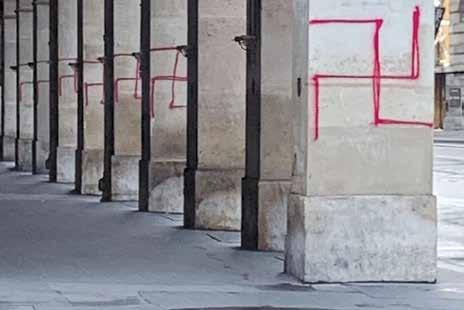
Nearly 50 years ago, President Chaim Herzog tore up an antisemitic resolution at the United Nations declaring Zionism racism. Proving how little has changed since then, were it not for a U.S. veto, the United Nations Security Council would have passed a farcically antisemitic resolution last week.
Antisemitism has only intensified, both in Israel and around the world, and it is unfortunately only going to get worse.
Let’s start with Israel. Every infiltration, murder, assault and kidnapping on October 7 was an act of antisemitism. So are all 13,000 rockets fired from Gaza since then and every missile and drone launched from Lebanon.
The people of Southern Israel are impressively resilient, but too many are still not calling out the antisemitism of their former friends in Gaza and the Arab world. The left-wing members of the Gaza periphery’s agricultural communities were proven wrong about the intentions of their neighbors on October 7. It is time to start facing reality.
Since Israel unwisely withdrew from Gaza in 2005, the only things that have
not flown over the fence into Israel are doves of peace.
In fact, many peace-pushing doves were incinerated in their homes in the Gaza periphery, including veteran peace activist Vivian Silver of Kibbutz Be’eri.
While the end to the war with Hamas may be in sight, an equally justifiable war with Hezbollah has yet to get into high gear despite emptying northern Israel of its residents for months. Just like Israel turned a blind eye to Hamas’s stockpiling of weapons that eventually had to be eliminated, the much larger arsenal in Lebanon cannot be ignored, and a war to eliminate this constant threat to Israel is inevitable. Regrettably, Security Council resolution 1701 is unlikely to succeed despite our best efforts in disarming Hezbollah.
Hezbollah’s goals are genocidal and antisemitic, and any demands from the international community that Israel sit silently with such a serious threat on its border are problematic. So is every city council resolution from San Francisco to Chicago demanding a cease-fire before the hostages come home.
The antisemitism that has reared its ugly head in America since October 7 had lurked beneath the surface for decades,
and American Jewish leaders did not do nearly enough to stop it.
They should have seen how the students of notoriously anti-Israel Columbia University Professor Edward Sa’id were taking over the Middle East studies departments on campuses across the country, funded by Qatari money. Together, their followers have created a culture of antisemitism and anti-Americanism.
Now Jewish kids find themselves terrified at the top American universities. Since October 7, they have faced physical violence, threats and intimidation, and sadly, there is no end in sight.
My own grandson, who headed a pro-Israel organization at Cornell, transferred from the Ivy League school to the all-Jewish Yeshiva University because he did not feel safe anymore, due to antisemitism he experienced from both fellow students and his teachers.
A powerful article in Commentary by former Harvard professor Ruth Wisse revealed how its efforts to achieve “Diversity, Equity, and Inclusion” and other decisions have entrenched antisemitism at the prestigious university for many years. DEI is antisemitism, and Jews are suffering from it across America. Make no
mistake. As long as DEI is present, traditional university life will not be restored. Claudine Gay was finally deposed from her post as Harvard president, but she still makes a million dollars a year as a professor. Meanwhile, jobs of Jewish academics remain in jeopardy if they refrain from speaking out against Israel. Jewish organizations made alliances over decades with many progressive and liberal causes. But most of those alliances evaporated overnight on October 7, when many of the progressive groups abandoned the Jews and sided with their genocidal enemy.
Universities and institutions that may have been nice to Jews for a while due to their many alumni Jewish donors felt free to exhibit their antisemitism when the government of Qatar trumped the Jews and gave them billions. It is no wonder the Qataris have not been called out enough for being the sponsor of Hamas and the funders of the October 7 massacre. Their resources are unlimited, and their tentacles are far-reaching.
Much like the threats from Hamas and Hezbollah, for 20 years, we’ve known about the Qatari influence and did nothing about it, while the regime invested
trillions in antisemitism. We knew top American universities had campuses in Doha and obtained unprecedented influence at almost every tier of education.
We must wake up America to realize that Qatar is not part of the solution to any problem, but it is the cause of too many challenging issues facing the U.S. nowadays. With Israel’s blessing, Qatar has been giving $320 million annually to Hamas and $800 million to the Palestinian Authority.
Instead of revealing the extent of Qatar’s brazenness to the world, the U.S. and Israel are both making a mistake by using Qatari mediators to negotiate a cease-fire agreement. The United Arab Emirates, which normalized relations with Israel via the Abraham Accords and did not fund Hamas, would have been a much more sensible choice.
If the U.S. and Israel do not change their course, it is unfortunately likely that the influence of Qatar and its money will only grow. Al-Jazeera and AJ+, which are Qatari state media, will continue poisoning Western minds if they are not banished from Israel and the U.S., as they should have been a long time ago.
The U.S. must intensify its cooperation with the UAE, which changed its
school curriculum to eliminate antisemitism and encourage tolerance, as mandated by the Abraham Accords.
What the UAE implemented can be a model for the essential educational reconstruction of Gaza. That process can be guided by the Culture for Peace Institute, which is dedicated to promoting understanding, tolerance, and peace
place that will result in much of what would be rebuilt coming down again.
The Abraham Accords provided a platform for educational institutions and organizations to develop programs that promote cultural understanding and appreciation. By including curricula on the history, customs, and beliefs of neighboring nations, educators can help
Since Israel unwisely withdrew from Gaza in 2005, the only things that have not flown over the fence into Israel are doves of peace.
among diverse cultures and communities worldwide.
It may take 20 years to inculcate a culture of peace instead of the antisemitism taught over the last 20 years. When the war ends is the perfect time to start the process in Gaza.
Gaza’s reconstruction should be conditioned on the educational reconstruction, because if not, more wars will take

va. But the antisemitism of the Irish, for instance, should have been called out for 75 years.
There must be zero tolerance for both kinds of antisemitism, in Israel and America. We must totally expose and not tolerate anyone involved in any antisemitic act, from Iran to Ireland to Brazil.
To properly fight antisemitism, we have to be united. When I spoke at the Knesset last week, I drove past the menorah across the street. The menorah is there because it is a symbol of unity. In the Tabernacle, it was the only item G-d said had to be made from one solid piece of pure gold.
It will be a challenge, but I pray that the people of Israel will remain united against our enemies and defeat them in Israel and around the world.
future generations grow up with a more open and empathetic perspective on the region’s diversity.
The Accords also went a long way toward ending the scourge of antisemitism, after Jew hatred throughout the entire Arab world was taken for granted.
It is good that Prime Minister Benjamin Netanyahu called out the antisemitism of Brazilian president Lula da Sil-
Mr. Oliner is chairman of the Religious Zionists of America, president of the Culture for Peace Institute, and a committee member of the Jewish Agency. He was appointed by former U.S. President Donald Trump and serves as a member of the United States Holocaust Memorial Council. He is the former mayor of the Village of Lawrence.




To maintain an army in a time of peace, it takes many people to train, supply and support the soldiers that could be called upon at any time to fight. In times of war, that number increases dramatically, and civilians are inducted into the military to fill the ranks. As the United States prepared to enter World War II, the amount of soldiers in the armed forces increased, and many Jews from all backgrounds entered into all of the branches and units of the American military. Approximately 550,000 Jewish service members were in the military during the war, and several stood out for outstanding service both on and off the battlefield.
LST, Landing Ship Tanks, were ships designed to land tanks, other vehicles and materials as well as troops in support of amphibious landings. They contained doors on the bow that opened to allow them to offload cargo on almost any beach. These ships were deployed across the globe, and around 1,000 were built. LST-541 was under the command of Jewish officer Lieutenant Louis Silver of the United States Naval Reserve. He was with the ship during the D-Day landings and made the trip under enemy fire. The ship made ten trips across the English Channel in support of the invasion of France. Lt. Silver had previously served on the aircraft carrier USS Wasp and observed the takeoff of Doolittle’s Raid in Japanese waters in April 1942. Later in the war, he was given command of another LST and at the end of the war was
serving in the Pacific.
Many Jewish servicemen and women served in medical units during the war. Israel Rimer from Salem, Massachusetts, was with the medical detachment of the 253rd Infantry Regiment, 63rd Infantry Division. On February 17, 1945, the regiment was fighting near Ruermacher, Germany, when a soldier was seriously wounded on top of the hill on the far side of a river. Facing heavy machine gun and sniper fire, Rimer reached the wounded soldier, administered first aid, and evacuated him to the near side of the river. For his heroic actions, Rimer was awarded the Silver Star.
During the last year of the war, many Jewish soldiers stationed in Europe began looking for relatives that were trapped by the Nazi war machine. Tragically, most of these searches concluded with the information that the relatives had perished at the hands of the Nazis. However, this wasn’t the case for Lieutenant Simeon Perlman. He was born in Brooklyn, New York, and entered the army as a private. After graduating from officer school, he was shipped to England and landed on Utah Beach in July 1944. Perlman was with the 305th Engineer Combat Battalion, 80th Division that was attached to General Patton’s Third Army when it made its drive through France to Germany.
The Germans launched an attack in the Ardennes Forest on December 16, 1944. Called the Battle of the Bulge, the attack took the Allied armies by surprise, and
divisions were rushed to the previously lightly held frontlines. Unbeknownst to Perlman, his uncle and family had been hiding in a small village in the forest. After the United States had liberated the Ardennes, his uncle had written to Simeon’s mother in New York, who, in turn, wrote to her other son to look for his uncle. Simeon’s brother then wrote to him telling him the location of their relatives. Simeon discovered that he was just a few miles from the village where they were located and drove to find them. His aunt answered the door but thought the American soldier was looking for the mayor. “Aunt Fanny, it’s me!” he exclaimed, and the reunion was sweet, even though it was in middle of a bitter war.
Perlman was awarded the Bronze Star for actions in combat.
Private Albert Gellman was from Albany, New York, and was sent overseas with the 135th Infantry Regiment, 34th Infantry Division. The division landed at the Anzio Beachhead in March 1944, and it took months for the Allied forces to break out of the beachhead to head inland towards Rome. On June 1, Gellman’s unit was near Castelleone, Italy, when four American tanks were knocked out by German anti-tank guns situated in farmhouses. Gellman and Private Smith, another member of his regiment, charged at a machine gun nest near a farmhouse that had waved a white flag. Gellman had forgotten his carbine and made the charge armed only with a pistol, grenades and his knowledge
of Yiddish. He screamed at them to come out with their hands up, and four Germans came out to surrender. Then he ran into the house and convinced more Germans to surrender. In another house, the Germans ran into a wine cellar after Gellman fired on their position. Gellman followed them to the cellar and threw a grenade onto their position. This convinced eleven more Germans to give up the fight. Altogether, Gellman captured more than thirty Germans and destroyed machine gun emplacements as well as Germans who refused to surrender. Gellman then gave the coordinates to bigger guns that destroyed the remaining Germans and their guns. Three days later, he again convinced four more Germans to surrender.
For his courageous actions, Gellman was awarded the Distinguished Service Cross. There has been a (so far) unsuccessful effort to upgrade the award to the Medal of Honor.
These are just a few of the many stories of Jewish servicemen from World War II. Their accounts need to be told, as their bravery, dedication and sacrifice were an integral part in war effort. Their stories are rarely told, and it is history to be remembered.
Avi Heiligman is a weekly contributor to The Jewish Home. He welcomes your comments and suggestions for future columns and can be reached at aviheiligman@gmail.com.

classifieds@fivetownsjewishhome.com • text 443-929-4003
MAJOR APPLIANCE REPAIR
Servicing Washers , Dryers , Refrigerators , Dishwasher, stoves
All work guaranteed. Call 718 3762288
PROFESSIONAL BAR/BAT MITZVAH SPEECH WRITER
Let your child’s speech be something you all remember!
Personalized and suited to your style. Contact: Bluma@blumagordon.com
PEACEFUL PRESENCE STUDIO
Men’s private yoga, Licensed Massage & Holistic Health Guidance
436 Central Ave, Cedarhurst Info. & free video training www.peacefulpresence.com 516-371-3715
GERBER MOVING
FULL SERVICE MOVING
Packing Moving Supplies
Local Long Distance. Licensed Insured 1000’S Of Happy Customers Call Shalom 347-276-7422
HANDYMAN AVAILABLE
For big or small jobs, Sheetrock, carpentry, painting, electrical, plumbing, install & repair appliances
Call Ephraim at 347-593-4691
VACUUM SALES AND REPAIR
All areas call Max Flam 718-444-4904
MANAGEMENT STAFF WILL ASSIST
you with: * Obtaining Medicaid and Pooled Income Trust
* In-home Assessments, Individual and Family Counseling
* Securing reliable home care assistance
* Case and Care Management services
Dr. S. Sasson, DSW, LCSW (718) 544- 0870 or (646) 284-6242
HAIR COURSE:
Learn how to wash & style hair & wigs. Hair and wig cutting, wedding styling Private lessons or in a group Call Chaya 718-715-9009
ZEVIZZ WOODTURNING JUDAICA
Challah knifes, batei mezuzah, besamim holder, kiddish cups, havdalah candle holders, yad for sefer torah, pens, stenders, bowls and more 952-356-2228
DON’T GET STUCK WITH A TWO STORY HOUSE YA KNOW, IT’S ONE STORY BEFORE YOU BUY IT BUT A SECOND STORY AFTER YOU OWN IT!
Call Dov Herman
For An Accurate Unbiased Home Inspection
Infrared - Termite Inspection Full Report All Included NYC 718-INSPECT Long Island 516-INSPECT www.nyinspect.com
HEWLETT
Exquisitely renovated and modernized residence situated on a picturesque 50x200 lot. 4 bedrooms, 3 full bathrooms. First floor features dining area, huge living room, expansive kitchen with modern cabinetry, two sinks, two ovens, and two islands. Second floor features 4 bedrooms, a nursery, primary suite with WIC. Private backyard with 400 square foot inground pool house/ guest house, cabana with a kitchen and grill, playground, basketball court. Fully paid solar panels. A fully renovated basement featuring a wet bar, separate outside entrance. Close to all houses of worship. Mark Lipner Associate Broker Berkshire Hathaway Laffey International 516-298-8457 mlipner@bhhslaffey.com
LAWRENCE
Stunning One of a Kind Mid Century Modern 6 Bedroom, 6.5 Bath, Contemporary Ranch. Resort Style Home on Over an Acre of Property in Back Lawrence. Incredible Views, Regulation Size Tennis Court - Deco Turf. IG-Gunite Pool, Low Taxes, 5318 sq. ft. of Main Floor Living Space. Plus 5000 sq. ft. Basement With Very High Ceilings. Call Mark 516-298-8457 for more details Mark Lipner Associate Broker Berkshire Hathaway Laffey International 516-298-8457 mlipner@bhhslaffey.com
WOODMERE
Beautiful, brick, colonial boasting 5 bdr 3.5 Bth in pristine condition. Excellent location, near all! Move right in! RCUSA 516-512-9626
CEDARHURST JUST LISTED
Magnificent renovated 4 bedroom 3 bathroom in SD#15, new roof, windows, plumbing + electric, gas cooking, new marble bathrooms, marble kitchen with stainless steel appliances, LED lighting, security cameras and speakers throughout the home, custom closets, outdoor patio, 1 car garage, near all. Mark Lipner Associate Broker Berkshire Hathaway Laffey International 516-298-8457 mlipner@bhhslaffey.com
NORTH WOODMERE
Stunning Split, 5 Bedrooms With 3 Full Baths. Custom Features Throughout. Well Maintained Home. Hardwood Floors, Granite Counters in kitchen, Formal Living Room and Dining Room, Den, Full Finished Basement. Relax in the Private Backyard With Inground Pool. SD#14. A must see! Close To All Houses of Worship Mark Lipner Associate Broker Berkshire Hathaway Laffey International 516-298-8457
mlipner@bhhslaffey.com
WOODMERE
Charming Colonial on beautiful tree lined street in the heart of Old Woodmere. Home features 3 bedrooms, 1.5 baths, kitchen, dining area, living room, full basement. Relatively new heating system + hot water tank. Large & beautiful backyard. Great for entertaining. Close to all. Mark Lipner Associate Broker Berkshire Hathaway Laffey International 516-298-8457 mlipner@bhhslaffey.com
HEWLETT
Exquisite contemporary colonial residence boasts a prime location set back from the street, enhancing its striking curb appeal. With 5 bedrooms and 3 bathrooms, this move-in-ready home is bathed in natural light thanks to its four spacious skylights. Expansive formal dining room, full basement offers 8-foot ceilings. Stunning inground gunite pool and a beautifully designed patio in the welllandscaped yard. Located in school district 14 and conveniently close to all amenities, this property is a rare find that won’t stay on the market for long! Mark Lipner Associate Broker Berkshire Hathaway Laffey International 516-298-8457
WOODMERE
New to the market renovated 3 bedroom 2 full bathroom ranch home with a full finished basement in the heart of Woodmere, sd#15, on a lot size 90x118, gas heat, central air conditioning, garage, new windows, roof, siding, appliances, lighting, kitchen and bathrooms. Eat in kitchen with 2 sinks, 2 dishwashers, double oven, island, lots of cabinets and storage. Spacious renovated basement with lots of storage, washer dryer and utilities, minutes to the railroad, shopping and houses of worship. Mark Lipner Associate Broker Berkshire Hathaway Laffey International 516-298-8457
mlipner@bhhslaffey.com
CAN’T AFFORD YOUR PROPERTY TAXES?
MORTGAGE?
Must sell for any reason?
Call for FREE Consultation.
Call now 212-470-3856
Cash buyers available!
LAWRENCE
New to the market 5 bedroom 3.5 bathrooms prime location with a lot size 77x130 features an eat-inkitchen, formal dining room , main floor den , formal living room with vaulted ceilings, finished basement, 2 car garage, gas heat, central air conditioning, in ground sprinkler, alarm call for more details.
OPEN HOUSE: SUNDAY, MARCH 10
12:00 - 2:00 • 218 JUNIPER CIRCLE
Mark Lipner Associate Broker Berkshire Hathaway Laffey International 516-298-8457
mlipner@bhhslaffey.com
NORTH WOODMERE
Meticulously maintained fourbedroom, two-bathroom home on an expansive corner. Main floor: entrance foyer, generously sized bedroom, a full bath, attached two-car garage. On the next level: sophisticated formal living room with cathedral ceilings, eat-in kitchen, formal dining room, sleek black banisters, hardwood floors. Third floor: master suite, two additional bedrooms, and another full bath. Lower level: cozy den with brick fireplace, laundry facilities, ample storage space, and utilities. New heating system, central air conditioning, custom closets throughout, inground sprinkler system. Conveniently located near parks, shopping centers, and houses of worship, and situated within SD#15 with low taxes. Mark Lipner Associate Broker Berkshire Hathaway Laffey International 516-298-8457
mlipner@bhhslaffey.com
WOODMERE
Welcome to this stunning residence situated on a tranquil residential street in Lawrence SD#15. This spacious and flawlessly maintained home boasts 4 to 5 bedrooms. Bright, airy living room with vaulted ceilings, skylights and wet bar. Central air conditioning, elegant quartz countertops, eat-in kitchen, formal dining room, main floor den with fireplace, master bedroom with bathroom snd dressing room, Jacuzzi tub, three other bedrooms and two full bathrooms. Inground sprinklers, lush landscaping, alarm system. Spacious playroom. Twocar garage. Mark Lipner Associate Broker Berkshire Hathaway Laffey International 516-298-8457 mlipner@bhhslaffey.com
School district. New to the market. 4 bedroom 3 full bathroom home features living room with a fireplace, formal dining room leading out to the deck, eat-in-kitchen with granite countertops, stainless steel appliances, 2 dishwashers, double oven, new microwave, primary bedroom with an en-suite bathroom, plus 3 additional bedrooms and 2 full bathrooms, large family room, central air conditioning, gas heat, in-ground sprinklers, hardwood floors, modern high hat lighting, custom window treatments, driveway has recently been done, 2 car garage, beautifully landscaped plus so much more. Mark Lipner Associate Broker Berkshire Hathaway Laffey International 516-298-8457 mlipner@bhhslaffey.com
Introducing a stunning new construction home. Nestled in a picturesque neighborhood. Large windows, open-concept layout that merges the various living spaces. The expansive living room is bathed in natural light, thanks to the windows that offer great views of the surrounding area. Gourmet kitchen with top-of-the-line stainless steel appliances, sleek cabinetry, expansive center island with a breakfast bar. Ample counter space and a welldesigned layout. Wonderful dining area providing. Large glass doors, spacious patio. Luxurious master suite with a spacious bedroom, a lavish ensuite bathroom and a large walk-in closet. Additional bedrooms. High-end finishes, premium flooring, and custom details throughout. Call for pricing Mark Lipner Associate Broker Berkshire Hathaway Laffey International 516-298-8457 mlipner@bhhslaffey.com
WOODMERE
Spacious home within school district 14 with exquisite upgrades and central air conditioning, splendid kitchen with dual sinks, five bedrooms. Main level encompasses a spacious great room, office space, complementing the formal living and dining areas. Unfinished basement, detached garage. Expansive lot, measuring 80 x 100. Conveniently located near shopping, railroad, restaurants and places of worship.
Mark Lipner Associate Broker Berkshire Hathaway Laffey International 516-298-8457 mlipner@bhhslaffey.com
WOODMERE
Woodmere just listed 3 bedroom 2 full bathroom hi-ranch in sd #15 with central air-conditioning , gas heat, 2 car garage, eat-in-kitchen, l/r, d/r, den, hardwood floors, minutes to transportation , shopping, and houses of worship Mark Lipner Associate Broker Berkshire Hathaway Laffey International 516-298-8457 mlipner@bhhslaffey.com
WOODMERE
Spacious home within school district 14 with exquisite upgrades and central air conditioning, splendid kitchen with dual sinks, five bedrooms. Main level encompasses a spacious great room, office space, complementing the formal living and dining areas. Unfinished basement, detached garage. Expansive lot, measuring 80 x 100. Conveniently located near shopping, railroad, restaurants and places of worship. Mark Lipner Associate Broker Berkshire Hathaway Laffey International 516-298-8457 mlipner@bhhslaffey.com
WOODMERE
1st showing spacious bright and sunny 5 bedroom 3 full bathrooms in school district 15. Features an expanded gourmet kitchen with stainless steel appliances, 2 sinks, double oven, warming drawer, great counter space, central air conditioning, gas heat, 2 of the bathrooms are new, hardwood floors, recessed lighting, in ground sprinkler, gas line for the barbeque, 2 car garage and minutes to all.
Mark Lipner Associate Broker Berkshire Hathaway Laffey International 516-298-8457 mlipner@bhhslaffey.com
WOODMERE
Introducing a stunning 14-side hall colonial home in the Hewlett Woodmere School District. Formal living room, formal dining room, den with a skylight. Eat in Kitchen, two sinks, a double oven, a warming draw and a microwave. First floor bedroom, a full bathroom and laundry room. Two-car garage. Upper level has four bedrooms, two full bathrooms. Finished basement with playroom, storage and utilities. Well-groomed exterior with porch adjoining the master bedroom. Hardwood floors and back patio. Central air conditioning, inground sprinkler system, alarm system. Close proximity to schools, shopping centers, restaurants, and transportation options.
Mark Lipner Associate Broker
Berkshire Hathaway Laffey International 516-298-8457 mlipner@bhhslaffey.com
LAWRENCE
359A Central Av Lawrence 1 bedroom apartment, elevator building, eat-in kitchen, full bath, hardwood floors, plenty of closet space. Ceiling fan in bedroom & kitchen, laundry room in the basement. Close to the railroad, shopping, and houses of worship. $179k Mark Lipner Associate Broker Berkshire Hathaway Laffey International 516-298-8457 mlipner@bhhslaffey.com
LAWRENCE
New to the market 2 bedroom 2 full bathrooms top floor elevator building, 24 hr doorman, open concept, totally renovated kitchen, granite counter tops, stainless steel appliances, 2 dishwashers, island,
2 new bathrooms, terrace, central air conditioning, u/g parking, high hats throughout, custom closets minutes to shopping, railroad, park, and houses of worship Mark Lipner
Associate Broker Berkshire Hathaway Laffey International 516-298-8457 mlipner@bhhslaffey.com
WOODMERE
New to the market studio co-op apartment, elevator building, high ceilings, low maintenance, laundry room on premises, minutes to the railroad, shopping, restaurants and houses of worship. $130K Mark Lipner
Associate Broker Berkshire Hathaway Laffey International 516-298-8457 mlipner@bhhslaffey.com
















classifieds@fivetownsjewishhome.com • text 443-929-4003
WOODMERE
Generously proportioned, first-floor apartment in an elevator-equipped building in the heart of Woodmere. This Co-op boasts three bedrooms, two full bathrooms. Lofty ceilings, spacious foyer, formal living area and dining space. Expansive kitchen with gas stove, microwave, dishwasher, washer-dryer. Hardwood floors provide an elegant touch, and the comfort of five air-conditioning units ensures year-round climate control. Three bedrooms, with the primary bedroom having en-suite full bathroom. Dedicated storage. Near shopping centers, railroad, dining and places of worship. Mark Lipner
Associate Broker Berkshire Hathaway Laffey International 516-298-8457
mlipner@bhhslaffey.com
LAWRENCE
New to the market spacious 1 bedroom 1.5 bathroom condo, elevator building, central air conditioning, garage parking, 24hr doorman, many closets, kitchen with granite countertops, generous counter space, washer/dryer, minutes from shopping, park, transportation and houses of worship Mark Lipner
Associate Broker Berkshire Hathaway Laffey International
516-298-8457
mlipner@bhhslaffey.com
LAWRENCE
New to the market 1 bedroom 1.5-bathroom condo apartment, elevator building, 24 hr doorman, central air conditioning, washer/dryer, u/g parking, terrace, many closets, social room, gym, library minutes to shopping, restaurants, transportation and houses of worship. Mark Lipner
Associate Broker Berkshire Hathaway Laffey International
516-298-8457
mlipner@bhhslaffey.com

LAWRENCE JUST LISTED
This amazing two-bedroom two full bathroom condo Features a luxurious lifestyle in the beautiful city of Lawrence. What more could you ask for? The building has a 24-hour doorman and elevator access, with a social room, library, washer/dryer inside the unit, and terrace. Plus, the added benefit of having a live-in super to ensure maximum safety and security! And don’t forget about your new kitchen complete with a gas stove, refrigerator, microwave, and even two dishwashers! The living room and dining room are spacious and have recessed lighting installed throughout. Both bedrooms feature lots of closet space for storage. To top it off, there’s even garage parking available to make your life just that much easier! Don’t miss out on this incredible opportunity. Please call for a private showing Mark Lipner
Associate Broker Berkshire Hathaway Laffey International
516-298-8457 mlipner@bhhslaffey.com
LAWRENCE
Spacious 2BR, 2 Full Bath Apt with an enclosed terrace in the heart of Lawrence. Well maintained & manicured building. New hardwood floors, updated Eat-in Kitchen with gas stove. warming draw, dishwasher & microwave. New windows on the enclosed terrace & one of the bedrooms. 3 New A/C Units & New Refrigerator. Close to shopping, transportation, library, schools, and houses of worship. $339K Mark Lipner Associate Broker Berkshire Hathaway Laffey International 516-298-8457 mlipner@bhhslaffey.com
WOODMERE
Well maintained 1 Bedroom apartment. Elevator Building. Pet Friendly, SD#14, Corner Unit, Bright + Sunny, Hardwood Floors, Eat-in Kitchen, Full Bathroom, 3 Closets, 2 Ceiling Fans, 1 A/C Unit, Full Time Super on Premises. Minutes from the Railroad, Shopping, Houses of Worship, and Laundry Room on Premises. Mark Lipner Associate Broker Berkshire Hathaway Laffey International 516-298-8457 • $179K


classifieds@fivetownsjewishhome.com
2 bedroom 2 bathroom apartment, private entrance, washer/dryer, central air conditioning, freshly painted, hardwood floors, recessed lighting, garage parking, stainless steel appliances, great courtyard, minutes to the railroad, shopping, restaurants, park and houses of worship. Mark Lipner Associate Broker Berkshire Hathaway Laffey International 516-298-8457
mlipner@ bhhslaffey.com
HEWLETT
Totally renovated 1 and 2 Bedroom, Apartments with washer/dryer, kitchen with quartz countertops, stainless steel appliances. Recessed lighting, hardwood floors, storage in basement. Close to RR, shopping, and houses of worship. Mark Lipner Associate Broker Berkshire Hathaway Laffey International 516-298-8457
mlipner@bhhslaffey.com
WOODMERE
Totally renovated bright and sunny 1 bedroom corner unit apartment with a washer/dryer. Features quartz countertops, ss appliances, recessed lighting, bathroom with chrome fixtures, close to the railroads, shopping and houses of worship. Call for details Mark Lipner Associate Broker Berkshire Hathaway Laffey International 516-298-8457 mlipner@bhhslaffey.com
CEDARHURST
1, 2 and 3 bedroom apartments, totally renovated private entrance , central air conditioning, hardwood floors, washer/dryer, garage parking, dishwasher, recessed lighting, private playground, close to railroad, park, shopping and houses of worship.
Call for more details
Mark Lipner Associate Broker Berkshire Hathaway Laffey International 516-298-8457 mlipner@bhhslaffey.com

HEWLETT
Welcome To Luxury Living in The Heart of Hewlett! This Spacious 2 Bedroom, 2 Full Bathroom Condo Boasts in Unit Separate Laundry For Ultimate Convenience. Enjoy Lovely Courtyard Views from Your Private Terrace. With Elevator Access and A Doorman, Experience The Epitome Of Comfort In This Prestigious Building. Mark Lipner Associate Broker Berkshire Hathaway Laffey International 516-298-8457 mlipner@ bhhslaffey.com
RAMAT BEIT SHEMESH G1
*Available this summer in RBSG1* 5 bedroom/4 bathroom (3 full- 1 half)
1st floor • Building w/ an elevator
Quiet street • Close to bussing (local and to Yerushalayim)
Across the street from a few different Shuls
Walking to G1 Mercaz
Available July 12 - Aug 9 with flexibility
For more info WhatsApp 347-831-5128 or call 053-412-7194
WOODMERE
House rental 4 bedroom 2 full bathrooms, central air conditioning, kitchen with granite countertops, stainless steel appliances, dual sinks, formal dining room, den, hardwood floors, washer and dryer Mark Lipner Associate Broker Berkshire Hathaway Laffey International 516-298-8457 mlipner@bhhslaffey.com
ROCKVILLE CENTRE
Newly Renovated Office Space
LIRR, Bus, Bank, Shopping, City Center. 20 Minute Drive to JFK
Owner 516-654-4986
1500SF LOFT OFFICE
(formerly Shmuel Flaum Architect) 2 store/offices; ~600sf each 2 Cedarhurst offices; ~100sf each Starting at $650
Also… Large Parking Lot & Storage available Utilities, Internet & Parking incl. with some Kosher kitchen – Minyan Next to LIRR - No broker fee Call/text/Whatsapp: 516-206-1100
MDS REGIONAL NURSE
5 Towns area Nursing Home management office seeking a Regional/Corporate level MDS Nurse to work in our office. Must be an RN. Regional experience preferred. 2-3 years MDS experience with good computer skills required. Position is Full Time but Part Time can be considered. Great Shomer Shabbos environment with some remote options as well. Email: officejob2019@gmail.com
BOOKKEEPER
Excellent growth potential, Frum environment, Excellent salary & benefits. Email resume to: resumetfs1@gmail.com
YESHIVA DARCHEI TORAH
Middle School is seeking to hire ELA teachers for the Fall. We offer an excellent working environment and salary; Monday-Thursday, 2:305:30 PM. Interviews are being held now. Candidates should have prior teaching experience. Please send resume to mhorowitz@darchei.org
A YESHIVA IN QUEENS
is looking for an experienced part/ full time secretary, 2-year-old morah, kindergarten morah, kindergarten morah assistant and Pre-1A English teacher for the 2022-2023 school year. Nice and timely pay. Please email resume to mshelt613@gmail. com or call/text 718-971-9799.
HE LOVES COMPUTERS, animals, and exercise. Can you share his interests? Spend time with a 29-year-old young man with developmental disabilities in Lawrence, NY. Part time, flexible hours, starting salary $27. Contact: Jobs@hamaspikking.org or 718-387-8400 Ext. 249
ACCOUNTANT F/T
Beitel Group is seeking to hire F/T Staff Accountant. Min 2 years’ experience required. Competitive pay, benefits, and growth potential. Please email resume to jobs@beitel.com
classifieds@fivetownsjewishhome.com
Woodmere, Part-Time
HASC, a leader in special education, is seeking a part-time SEIT Secretary to add to our Team. Job includes general office and administrative tasks related to the tracking and maintenance of SEIT student and staff files. Computer skills required. Attention to detail a must. Great pay. Room for growth. Warm and caring environment. Training provided. jobswd@hasc.net 516-295-1340
LOOKING TO HIRE AN ENTRY LEVEL male purchaser to join our newly formed purchasing department. Great environment, lots of room for growth! Email resume to jobs @fcc-corp.com
5 TOWNS BOYS YESHIVA
Seeking Elem Gen Ed Teachers Excellent working environment and pay. Only lic/exp need apply.
Email resume to yeshivalooking@gmail.com
DELIVERY PERSON NEEDED to deliver Newspaper every Thursday morning to locations in Brooklyn. Must have Minivan or SUV and availability to work consistently every week! Please e-mail gabe@fivetownsjewishhome.com or call (917) 299-8082
SEEKING ELA TEACHER
Teaching position for Gr. 6. Mon.-Thurs., afternoon hours. Far Rockaway/5T area. Great salary, warm, supportive environment. Training in our curriculum is provided. Teachersearch11@gmail.com
WEALTH MANAGEMENT OFFICE
in Cedarhurst looking for an in-office assistant for 18-20 hours a week. Ideal candidate will be proactive, detail oriented, positive, and a team player. Must have familiarity with or willingness to learn about financial markets, financial planning, and account types.
Email résumé to wmassistantjob@gmail.com

Join our Collaborative Team at HASC. Looking for an experienced Teacher/Teacher Mentor to help with the administration of a SEIT Program. Great Pay! Part-time! Flexible hours! Warm & Caring Environment. SAS/SBL a plus Email resume: jobswd@hasc.net
GROWING BACK OFFICE ACCOUNTING
Firm in the Five Towns Looking to hire staff to join the accounts payable team Please send resumes to jobs@riveredgeadvisors.com or call 516-548-1622
JOIN OUR FIVE TOWNS OFFICEFull time position available in our AP department! Great benefits and generous pay! Email resume to jobs@fcc-corp.com
POSITIONS AVAILABLE IN OUR Medicaid pending department and Medicaid billing department .Great environment, lots of room for growth! Email resume to jobs@fcc-corp.com
DEVELOPMENT ASSISTANT
A multi-tasker needed for general office work. The ideal candidate is someone who is detail-oriented, responsible, and can take ownership. Looking for someone who is eager to learn, and expand his/her skill set while possessing the ability to work independently and as part of a team. Experience with Excel required. Five Towns location. In-office position only, not remote. Please send resume to 5tpart.timecareer@gmail.com
SHMIRAS HALASHON
Text 516-303-3868 with a time slot of your choice to be careful on lashon hara. Be a part of the 1,000 people for klal yisroel!
Get your favorite wine and spirits delivered for free for all orders over $400
vintagekosher.com/pesach 646-768-8800


Why did Willie Sutton famously say he robbed banks? “Because that’s where the money is!” So why, then, don’t we tax the rich? Well, we do! The bottom 20% of American earners, who make less than $30,000, contribute less than 1% of the total tax bill. The top 20%, earning over $190,000, pay 67% of all individual income taxes collected. That amounts to roughly 25% of their income. And the top 1%, earning over $982,600, pay a whopping 26% of all income tax collected. That amounts to 31% of their income.
And still, last year, Uncle Sam spent $1.7 trillion more than he took in. Way to go, Washington!
Naturally, government offices and DC think tanks are full of clever people looking for ways to wring more tax dollars out of all of us without crimping the economy that generates all that income in the first place. And it’s not escaped their attention that some of the very wealthiest have found a way around that average 31% bite. Specifically, those who own stock in publicly traded companies can choose not to sell it, which would generate taxable capital gains. Instead, they can monetize it in the form of tax-free loan proceeds. It’s called the “buy, borrow, die” strategy.
In 2021, an IRS contractor named Charles Littlejohn leaked a trove of tax data, including 15 years of data from thousands of the wealthiest Americans. (Recently, a federal judge sentenced him to five years in jail for the unlawful disclosure.) His leak revealed just how much those millionaires and billionaires can spend on mansions, yachts, and jets without spending a dime on taxes. Take Elon Musk, for example. In 2015, Tesla
basis, which would make it fatally hard to administer and enforce. Last month, two professors from the University of Michigan and Yale law schools published a paper taking a simpler approach. Their 15page proposal, packed with 70 detailed footnotes, takes dead aim at the “buy, borrow, die” approach to raise $100 billion over the next 10 years.
Their analysis used Oracle founder Larry Ellison as its avatar. Ellison is cur-
The top 1%, earning over $982,600, pay a whopping 26% of all income tax collected.
sold 50,658 shiny all-electric cars. Musk paid $68,000 in federal income tax. In 2017, he paid $65,000, and in 2018, nothing at all.
Several senators have proposed a new wealth tax on net worth above $50 million. However, their approach would require those taxpayers to appraise and report every asset they own on an annual
rently the fifth-richest man on the planet, worth $140 billion. He’s used his vast fortune to pick up an impressive collection of grown-up toys: two America’s Cup sailing victories, a $270 million yacht, and 98% of Hawaii’s sixth-largest island. Yet he hasn’t sold his stock to do it. Instead, records show, he’s pledged $30 billion of his Oracle stock to secure “personal in-
debtedness.” (Extra bonus break: when Ellison dies, the outstanding debt will reduce his eventual estate tax!)
Their solution: a “billionaire borrowing tax” that would tax Ellison as if he had actually sold that stock when he uses it to secure a loan. The tax would kick in for families with “major assets” (business interests and land) worth $100 million or above. And there’s plenty of fine print, of course, in the form of a $1 million lifetime exemption, $200,000 annual exclusions, and detailed rules for calculating the taxable amount and stepping up the basis in the encumbered stock on future sales.
You may not think you need to worry about a “billionaire borrowing tax.” But it’s a sign of a very real threat. The government needs more money, and they have to find it somewhere. Proper planning is how to keep them from looking for it in your pocket, whether you’re a billionaire or not!
Allan J Rolnick is a CPA who has been in practice for over 30 years in Queens, NY. He welcomes your comments and can be reached at 718-896-8715 or at allanjrcpa@aol.com.

We used to say, “What’s up?” –but that’s totally unnecessary now!
Because we say WhatsApp!
No one needs to ask what’s up anymore, since all one has to do is tap into one of their many chats and they will find out everything that’s going on.
And I mean everything!
People seem to spill out their guts on these chats. They share everywhere they’re going, everything they’re doing, and every thought that they’re thinking.
Families don’t need to talk, or call, or get together anymore because they are chatting continuously throughout the day. Everyone is up on everyone else’s business.
I must confess I still need to say, “What’s up?” because personally I don’t seem to have the time or the patience to follow all these multiple chats that I am a part of.
Every charitable organization, and group I volunteer for, and shul I attend, and book club I join, and group I get involved with, or even think of getting involved with…all create another WhatsApp chat. They are then interacting all day and keeping my phone buzzing.
The really rough thing, though, is that
the people who actually want to send me a WhatsApp specifically directed to me get pushed so far down to the bottom by all the other chats that I never get to see them.
I’m guessing you’re familiar with the repercussions:
You’re in trouble with a friend. And you don’t even know it!
Or, you miss a business opportunity. And you don’t even know it.
Or, you missed an engagement party. And you don’t even know it.
And one day when you finally have some time to try to look through some of your messages, you find that random personal message that you never saw.
And then you suddenly realize that you just found out what’s up – and it’s that you are in big trouble with someone!
Rivki Rosenwald is a Licensed Marriage & Family Therapist working with both couples and individuals and is a certified relationship counselor. Rivki is a co-founder and creator of an effective Parent Management of Adolescent Years Program. She can be contacted at 917-705-2004 or at rivkirosenwald@gmail. com. A book is the ultimate apparatus.

